-
Posts
109 -
Joined
-
Last visited
Content Type
Profiles
Forums
Gallery
Events
Posts posted by 0Seahorse
-
-
14 hours ago, Queenthunk Amalanathan.F said:
hello sir . i really loved to build this model.where may i find the plan. pls guide me.
Sao Gabriel was built without any dedicated plans. I compared a lot of sketches, similar studies of such vessels and based on photos from the Museum in Lisbon, I drew a model in Rhino3D. It seems to me that many years ago I saw on the internet plans similar to Sao Gabriel with the designation of the museum in Lisbon. Maybe contact them as it is often possible to get a copy from the museum for a small fee.
Greetings
Tomek -
Hi everybody!
I had a long break in building, but in the meantime "Wodnik" was created, so I'm a bit excused. I went back to "De Zeven Provincien" and I just hope to finish the model without any more breaks or "side jumps". Apart from the huge amount of decorations, there is not much left to do on the hull itself: top planking, head, handrails ...
I glued the bulwarks, added the decks and set up the bulkheads. The work is so simple that there is nothing to write home about.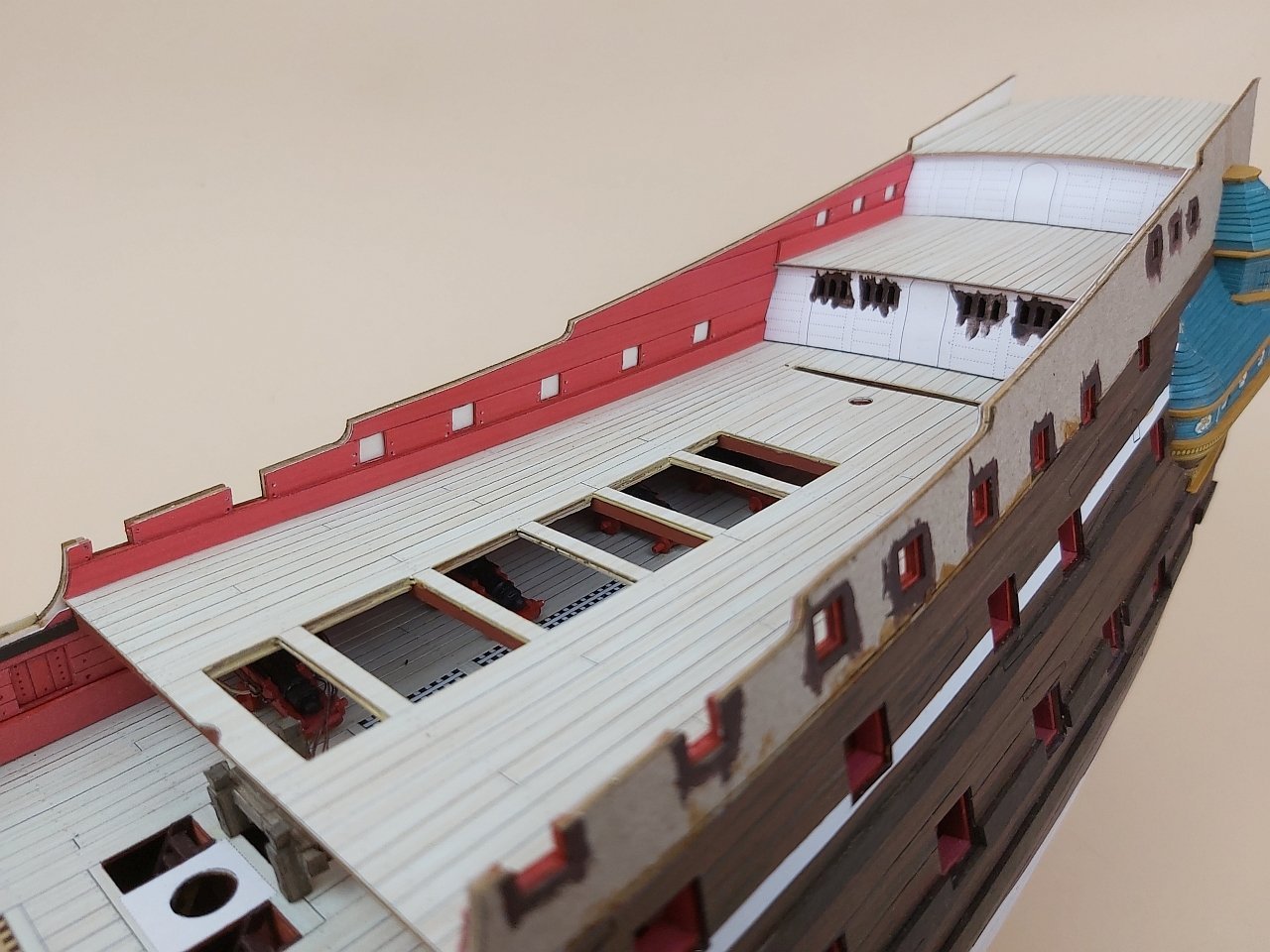
The head took more effort.
Because the knee of the head narrowed (and you can turn a blind eye to it with small models of small vessels) and here the difference in thickness was so significant that I glued it together in a "box" method: long narrow triangles at the top and bottom are glued between the side surfaces and thanks to this, the thickness at the hull is ~ 4 mm and ~2mm at the end. Cheeks and gammoning knee are typically made of cardboard of an appropriate thickness.
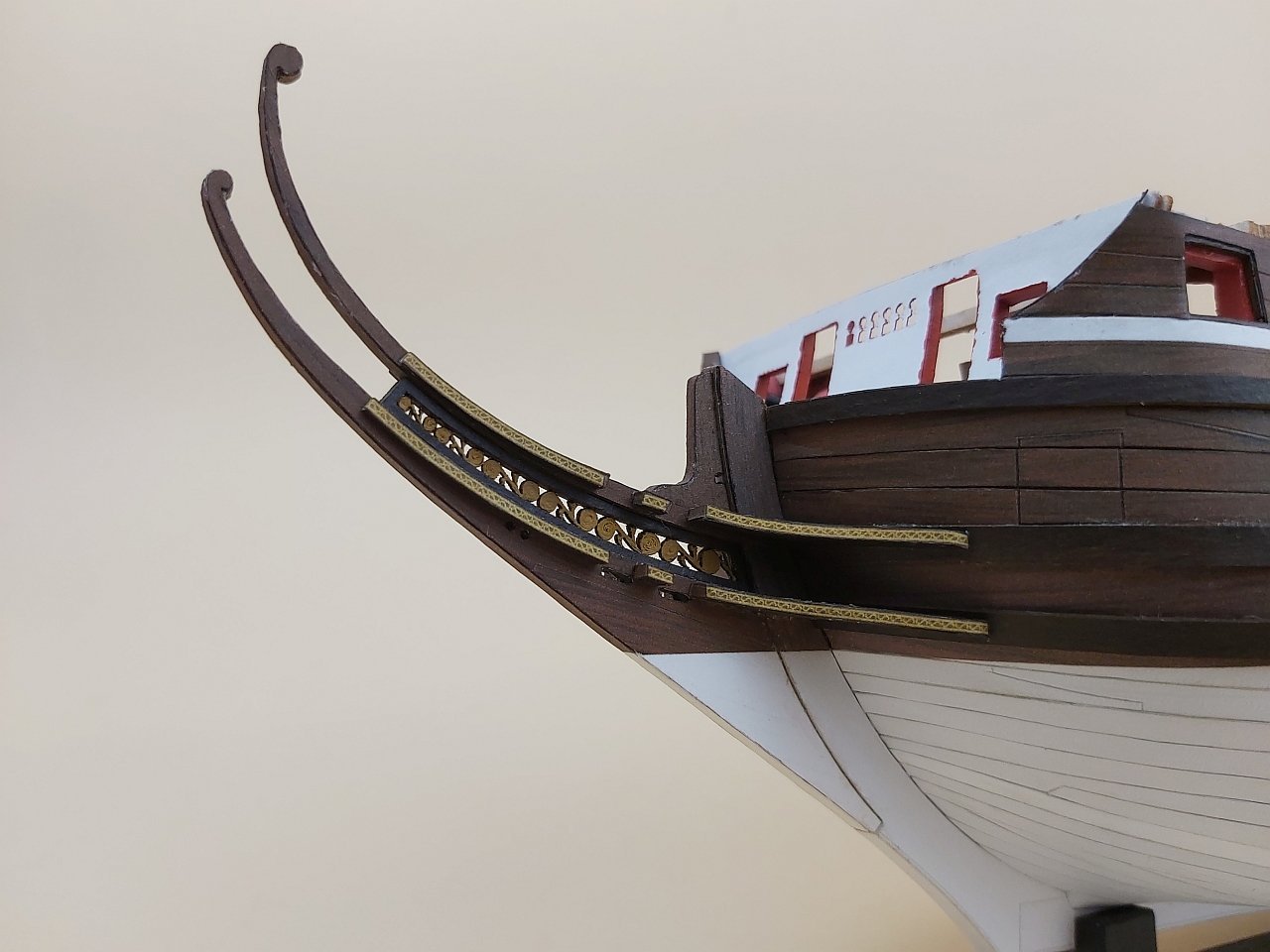
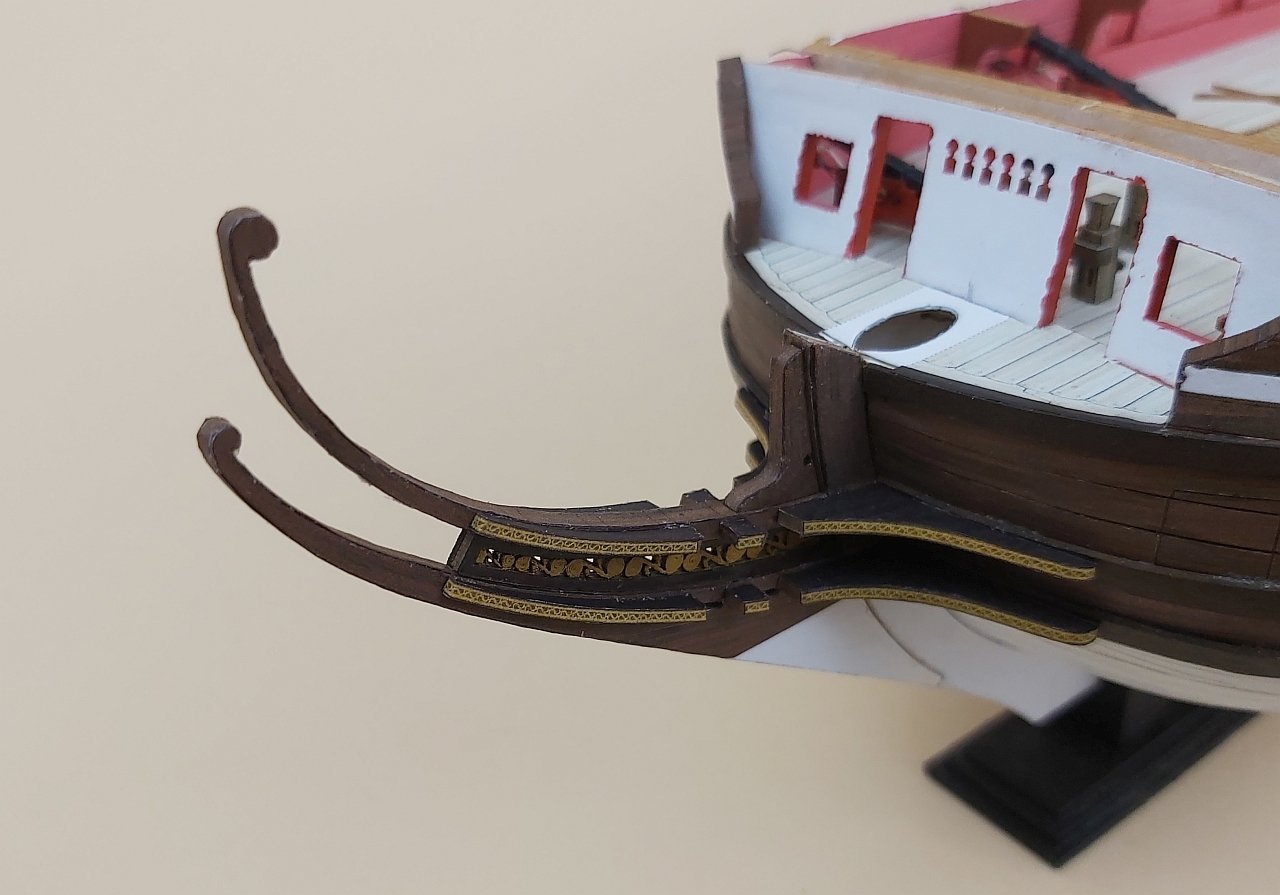
Greetings
Tomek -
Thank you Bob and John.
I use Rhinoceros3D for designing, and color the prepared parts in Corel Draw. I use Adobe Illustrator sometimes. The parts are printed on a Brother DCP 300-T printer and the prints are secured with a "Capon" primer (this is a Polish name and unfortunately I cannot approximate the composition, but acrylic varnishes work just as well). I use ordinary acrylic paints for retouching the edges and painting small details.
Greetings
TomekPS. Below my current project in Rhino3D
-
Hi Tim,
if you choose EURO currency, PayPal appears directly in the payment selection. When selecting Polish Zloty (PLN), the PayPal option is hidden in the "Przelewy24" payment system in the "Inne / Others" tab.
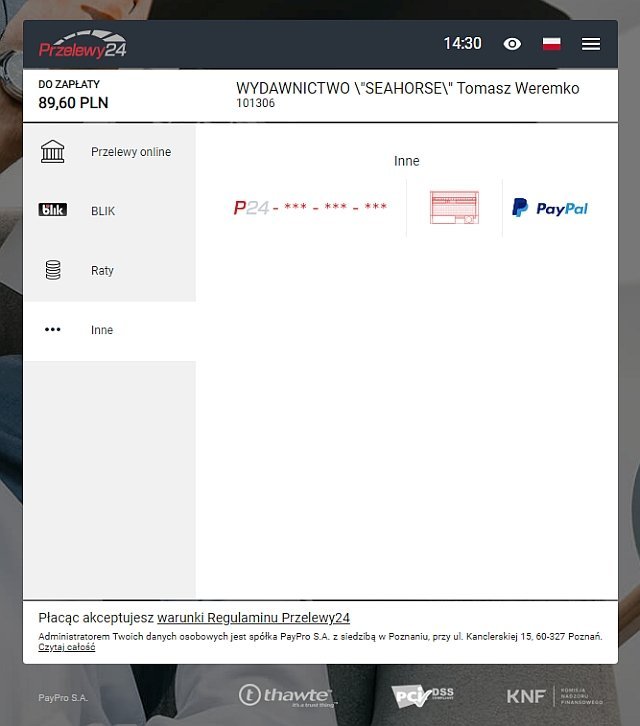
I hope, it helps.
If I can help you with anything else, the pleasure is mine.
Tomek
-
Hello,
Thanks to everyone for your comments and remarks.
I had the last update divided into two parts, but somehow it turned out that there will be only the final. So the memorable moment has come when the model of His Majesty's Ship "Aquarius / Meerman" was completed in a different "configuration" than the previous attempts at reconstruction.
Attaching the spears was not particularly difficult, also access to belaying points was quite acceptable (the most difficult thing was with the main mast). I will not write anything innovative in the history of rigging or the art of modeling.
I have developed my quick method for sails on a scale of 1: 100. For this I use a very delicate and thin cotton canvas (here I used a batiste). I soak a fragment of the canvas with thinned, transparent water-based glue and leave it to dry. Then, with a sharp scalpel near the ruler, cut off narrow strips of fabric from this piece (thanks to the glue, the canvas does not fray and you can cut strips narrower than 1 mm with a little practice). I stick these stripes (with the same transparent glue) in all places where there are reinforcements on the sail (at the edges, corners, etc.). Only then do I cut the sail with scissors. In my opinion, on a scale of 1: 100, all attempts to sew the sail are terribly off-scale and the effect is "not very good". I use a pencil to draw "traces" of sewing cloths rather than clear, visible lines. Also, I do not sew on bolt rope but stick with glue.
Before attaching the spears with the sails, I soak the canvas gently with water and again with diluted glue and dry with a hair dryer, giving a convex shape. Sometimes a great effect can be achieved.
This time I managed to achieve "high wind dynamics" in the lower sails thanks to a simple trick (discovered by chance). The buntlines are gently glued to the sails and then pulled tighter, thereby swinging the bottom of the sail forward and upward.
This is what the new face of "Meerman" looks like: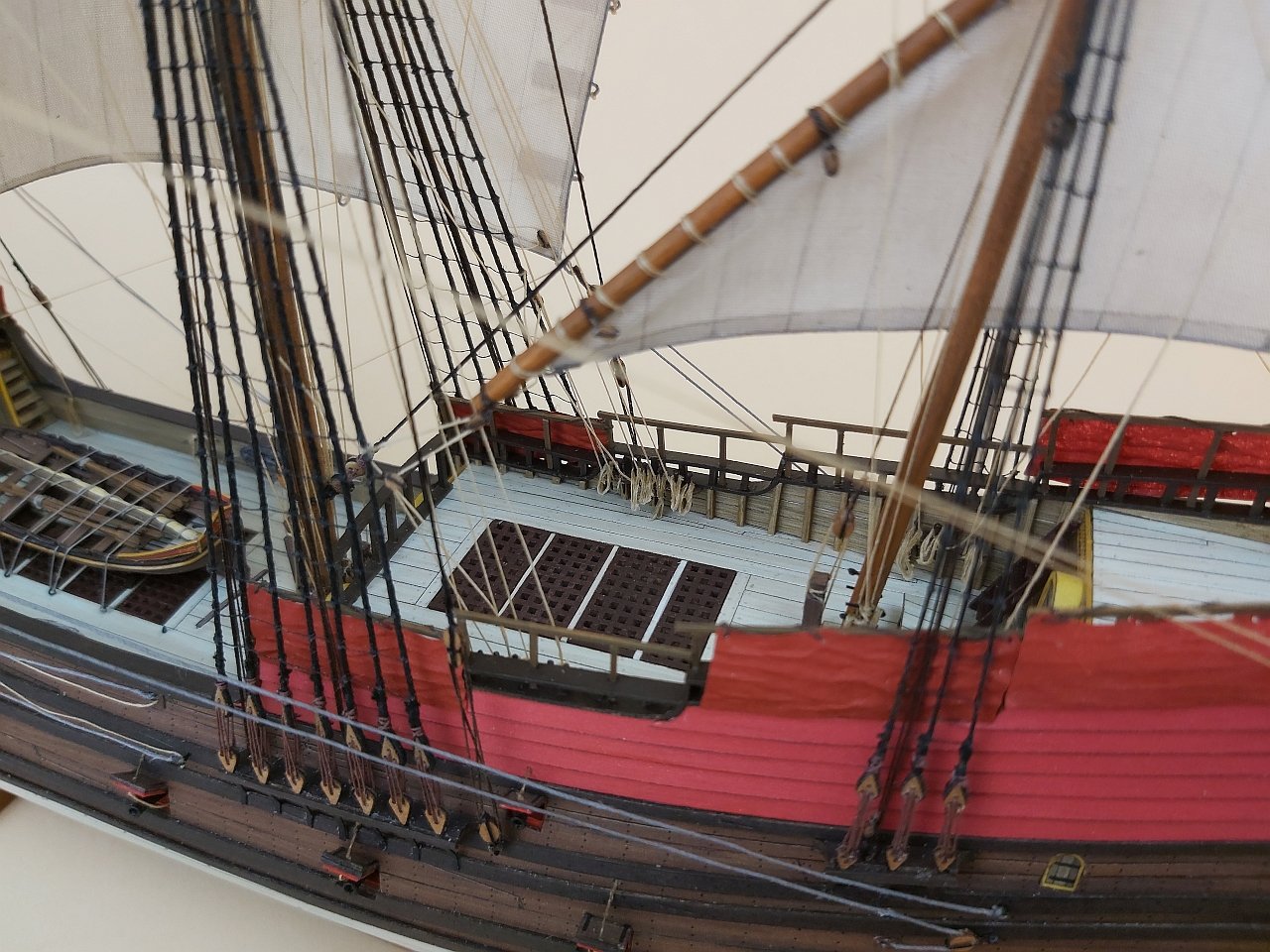
-
Hi Dziadeczek,
of course I read your comments on the Polish forum with great curiosity and I always learn something new and useful from them. So I am very pleased that you like my job. Complaining is probably more related to the "regression" of skills, because that's what I felt when doing standing rigging. Or maybe it's just spring fatigue 🙂
Yes, it's a scratch based on a typical Dutch hull from that period (I helped myself with Heemskerck, among others).
I regularly watch Ab's work, so it's nice to hear that my models resemble his work to some extent. I am honored and pleased to correspond with Ab Hoving, who helped me in many projects related to the Dutch fleet (VOC Duyfken 1606, Speeljacht, Grosse Jacht), gave constructive criticism with a great deal of patience. I hope it stays that way, because "De Zeven Provincien" is waiting to be finished, and without Ab's help it will be hard.
Blocks and deadeyes are laser cut from the pressboard. It is much stronger than simple cardboard and after gluing it, it has never happened to me that anything was delaminated. Sometimes you have to clean holes, especially in deadeyes, because glue gets there.
As for "waistcloths", they are actually rarely seen on models (I think I only saw them once on a model on the Internet, but I don't remember what it was). The whole idea was taken from the book by Marian Huflejt "Bitwa pod Oliwa 1627- facts and myths", where he carefully considers their construction and purpose. The entire book is highly controversial and some hypotheses are poorly proven, but waistcloths can be found in many old paintings, so it's time they appear on models 🙂
Greetings
Tomek- thibaultron, Tony Hunt, GrandpaPhil and 2 others
-
 5
5
-
Thank you gentlemen for the kind word.
Maybe because I hadn't tied the rigging for the last six months, it felt like I was doing it in the dark. I have been building models of sailing ships for 15 years and then suddenly at every step something went wrong, I still had to correct something. As the rigging was going smoothly with many of the previous models, this time I started to get frustrated because what I presented today I should have achieved without hurry a month ago.
But most importantly, standing rigging is complete. Maybe with the sails I will get back to the right track :-))Regards
Tomek
- GrandpaPhil, thibaultron, druxey and 3 others
-
 6
6
-
Hi everyone
Unfortunately, as I was afraid, the waistcloths were a huge problem, took a long time and the effect is poor. I have tried to shape these hanging canvases of various type of silkspan, paper tissue, paper towels, fine fabric, dry or wet and no attempt hes been succsessful. But in the end I had to make up my mind and the choice fell on one of the silkspan. It looks "average", good modelers will make it better than me. I can always declare that it is only a "test model":-)
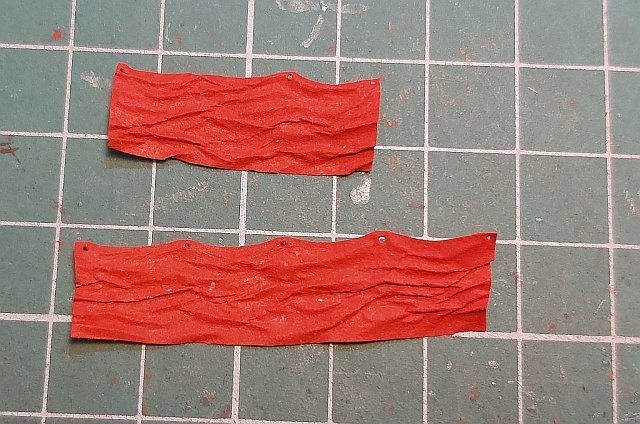
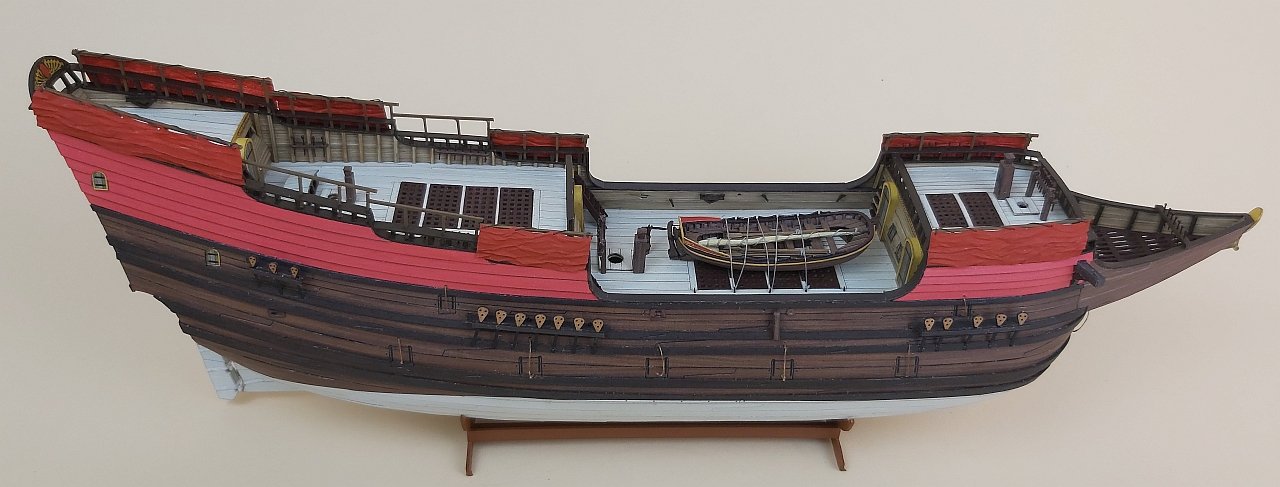
I am still not sure what exactly such solutions looked like, and perhaps an additional difficulty is the fact that there could be just different solutions for different vessels. In the paintings from those years, waistcloths look as if they "lay", but again on some plans and studies you can see frames on which these canvases "hang" rather than "lie".

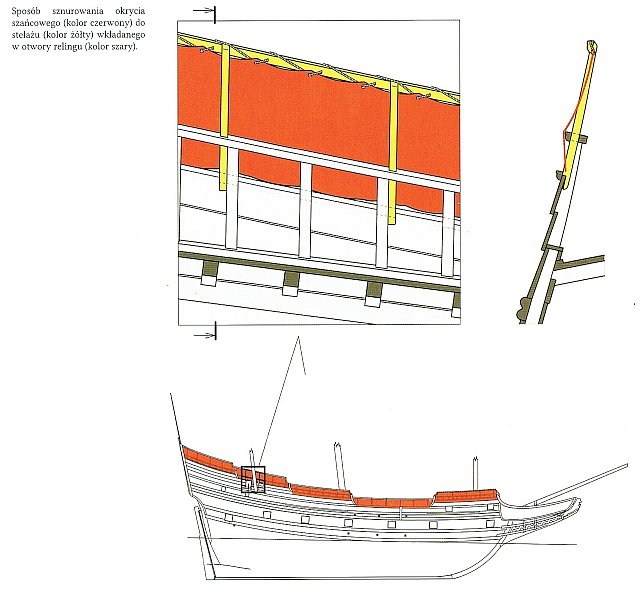
In any case, this stage is over and it is time to put up the masts.
I tried to make standing rigging in a way that is probably typical for small Dutch ships. I used the Heemskerck and Zeehaen plans.
I had a few problems, because I used old cyanoacrylate glue which turned snow white when dry. So all shrouds had to be painted black. A bit of laziness, and a bit "because it is a test model" :-))), fore shrouds and a fore stay are the same thickness as main shrouds and a main stay, which of course caused further problems, because there is "too tight" at the top of the foremast. And I still have to push the other ropes from the running rigging there.
Blocks and deadeyes are made of pressboard.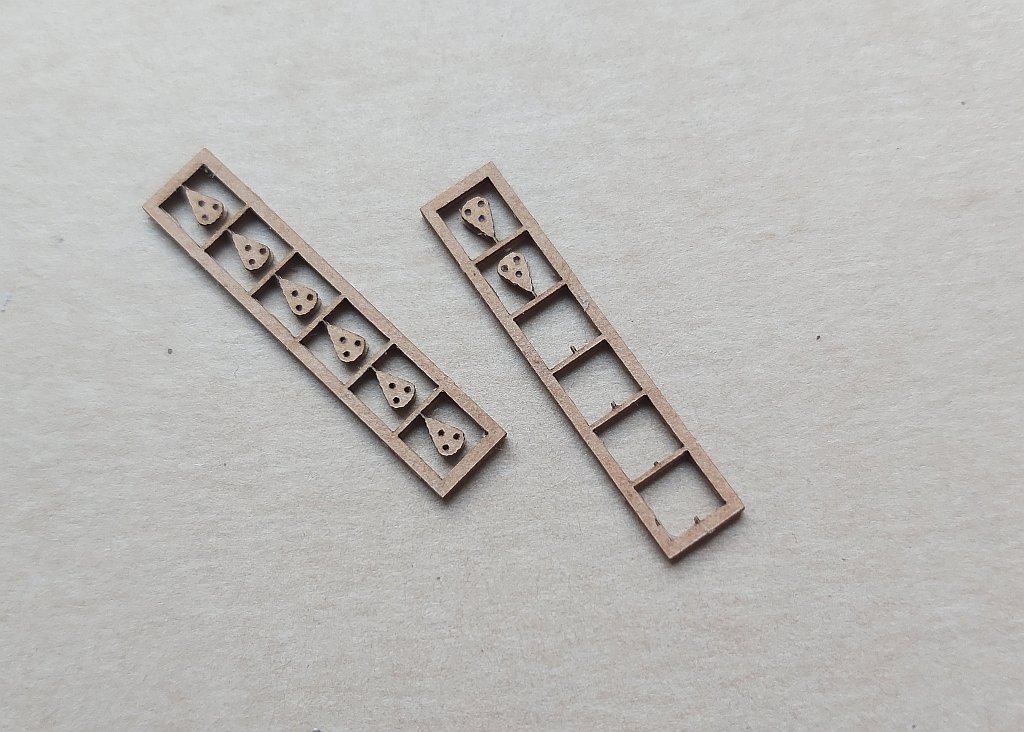

Greetings
Tomek
-
Welcome everyone,
some time ago I started to build a model of the "Meermann" ship, which took part in the Battle of Oliwa in 1627. The battle was not big when we compare it to great clashes of great maritime powers, but for Poland at that time it had a huge political and propaganda dimension. Because here "... the traders from Danzig defeated one of the strongest fleets - Sweden ..." as the angry king of Sweden reportedly said. The dynastic war with Sweden, in which the Republic of Poland got involved, led to the Swedish capture of part of the Polish coast and the sea blockade of Gdańsk. Partially built in Gdansk, partially bought (mainly from the Netherlands), the Polish fleet, emerging from the morning mists, attacked the "sleeping" Swedish ships standing in the roadstead of Gdansk. The Poles captured the Swedish "Tigern" and caused an explosion on "Solen" which sank. The Swedes withdrew, that's the whole battle.
Unfortunately, there are not many sources regarding the construction of these ships, so we can only use "standard" solutions from that period. Since my English is not so perfect that I could write passionately about dilemmas during the reconstruction, I will stick to some of the most important facts and a few "blank spots" to which Polish historians and researchers have not found an answer so far.
The dimensions of the ship are known with some assumption that all mistakes were detected in the main source, ie "Wismar inventory" (after the Battle of Oliwa, the Polish fleet was handed over to the Catholic Habsburg League and anchored in Wismar). There is no original document, only the original copy, in which the copyist's mistakes were found. Also the weapons and equipment are known from the above list. Unfortunately, there are no construction documents or documents confirming the purchase of ships. Certainly, part of the fleet was bought because two shipyards (in Gdańsk and Puck) could not build so many ships in such a short time. There is also no information about which ships were bought and which were built, they appear a bit like a "rabbit out of a hat".
The Scot James Murray was responsible for the creation of the Polish fleet, which for many historians is tantamount to the statement that they were English-style ships. But the empty royal treasury (which probably lasts to this day :-))) allows you to suspect that maybe it was built in the Dutch style, which was much cheaper and faster than the English method. Besides, some of the ships that were part of the Polish young fleet were bought from the Dutch. There are many such unresolved dilemmas for each ship.
I am familiar with four images depicting this event, but they differ drastically and, as recently noticed, are partially copies of other earlier images. The mere fact of "piracy" in painting is not surprising, but it reduces the credibility of such works.
Searching for answers is hampered by the multitude of myths that cling to the Battle of Oliwa. Around 1950, the plans of "Meermann" were created, which in fact are a modification of the plans of the "Rotter Lowe", with anachronistic geometric patterns in white and red on the sides. It seems to me that at that time only Hansa ships had decorations of this type. By the way, the red and white colors became the national colors of Poland in 1792. Such a form of "Meerman" caught on in the mentality of even researchers who reproduced these and other errors. In the mindset of many Poles, this battle took the form of not a historical event, but a legend.
Because I love the Dutch fleet and ships from Oliwa could be like that, I decided to base my work on typical lines of Dutch ships from that period, because for sure there were masters from the Netherlands, in the Gdańsk shipyard. And probably I was right, because I had to introduce a few changes to make the dimensions taken from the "Wismar inventory" match the ones I have. This applies not only to the distance between decks, width and length, but also to the draft, which turned out to be almost identical.
So the hull was built.
1 mm cardboard frames. Simplified gun carriages inserted on one side.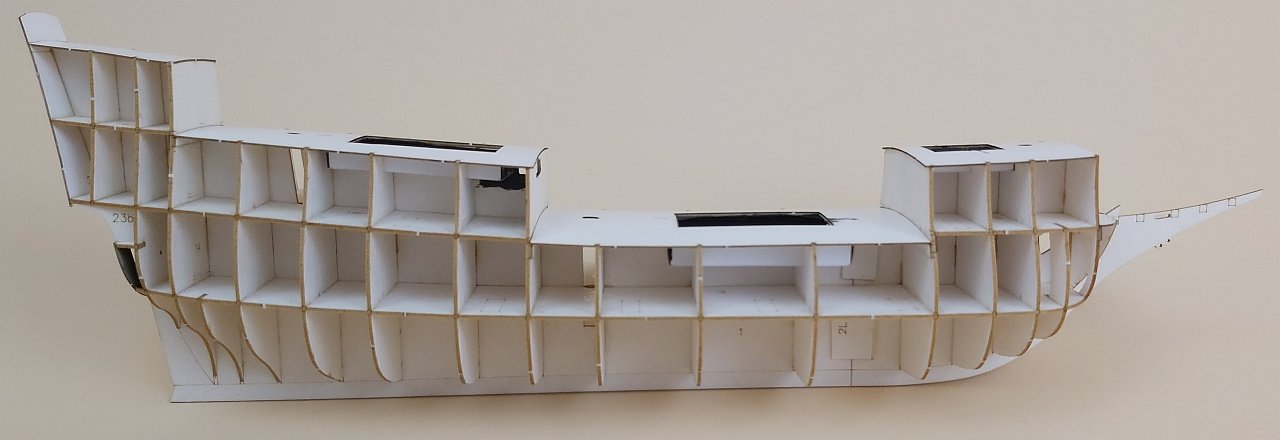
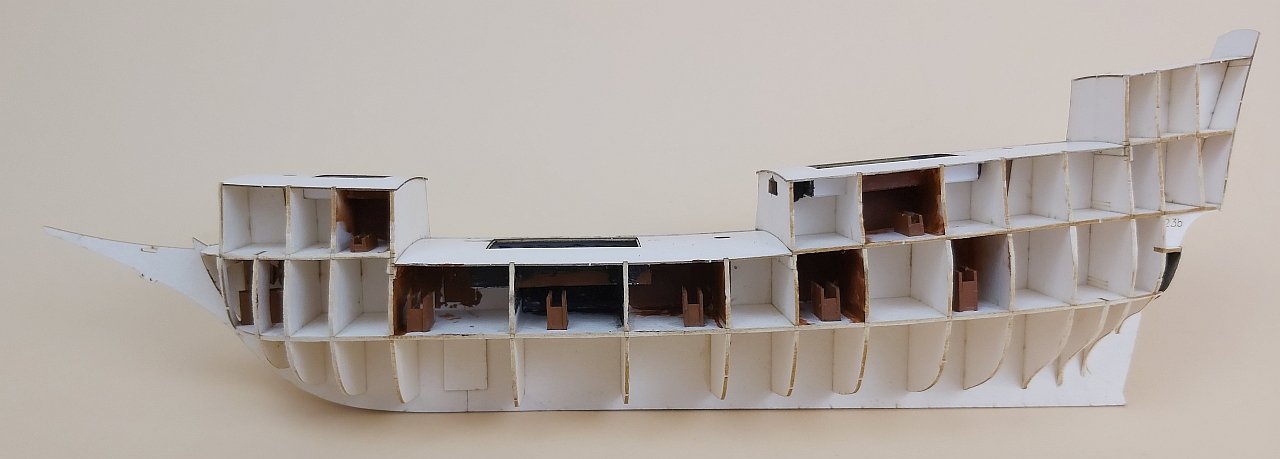
The first cover stiffening the structure:

...then I glued the seccond layer, horizontal, made of 0,5 mm cardboard...
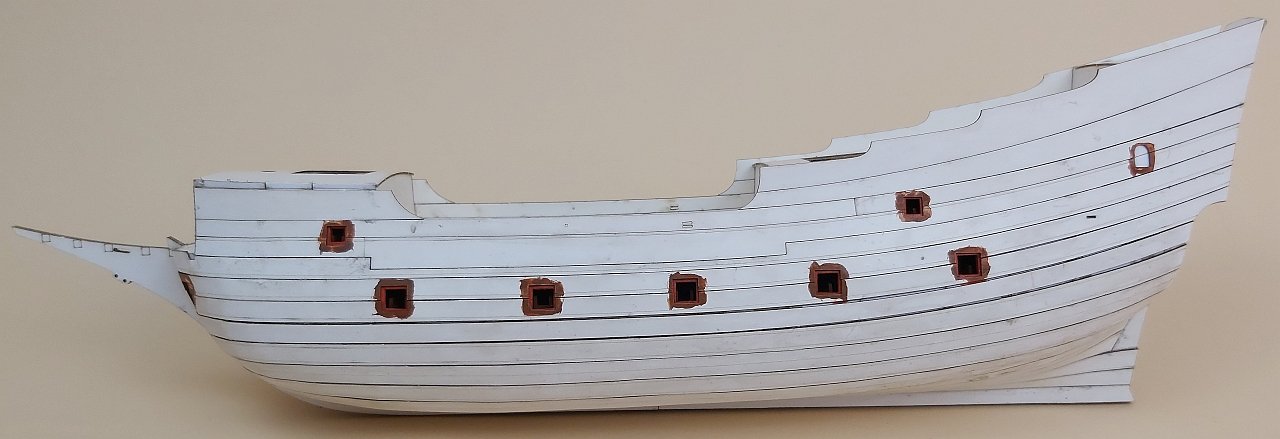
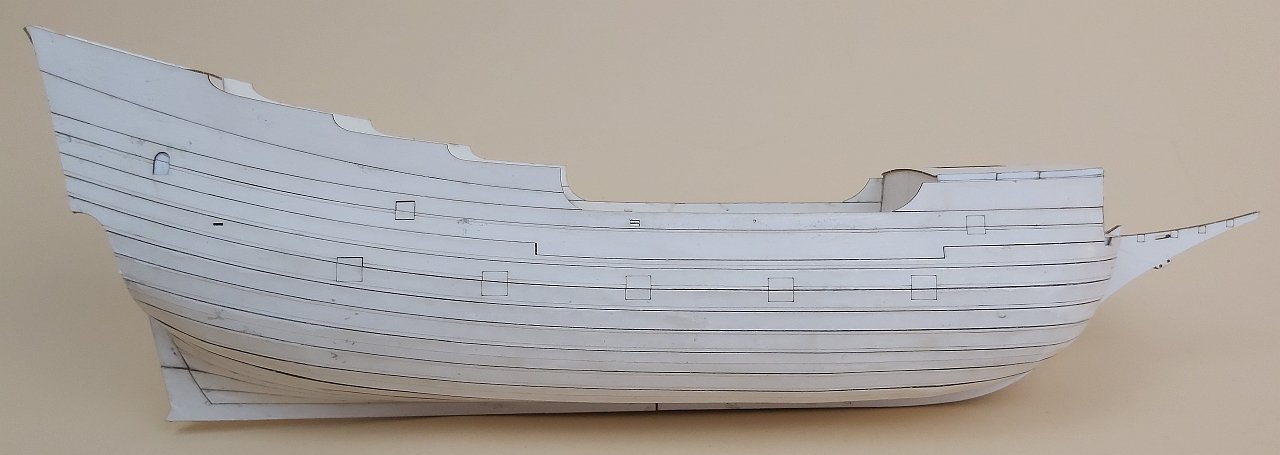
On the hull prepared in this way I added final layer with printed planks...
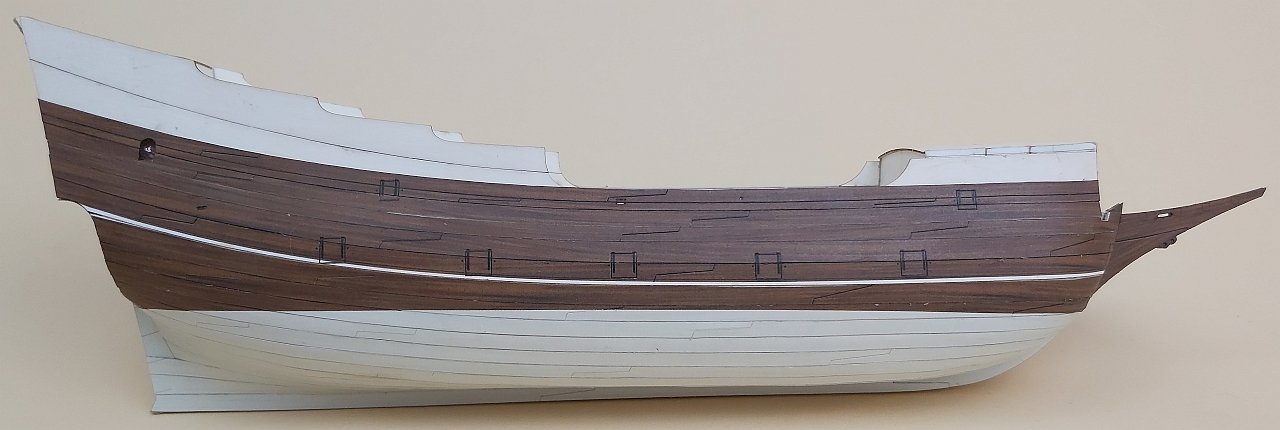
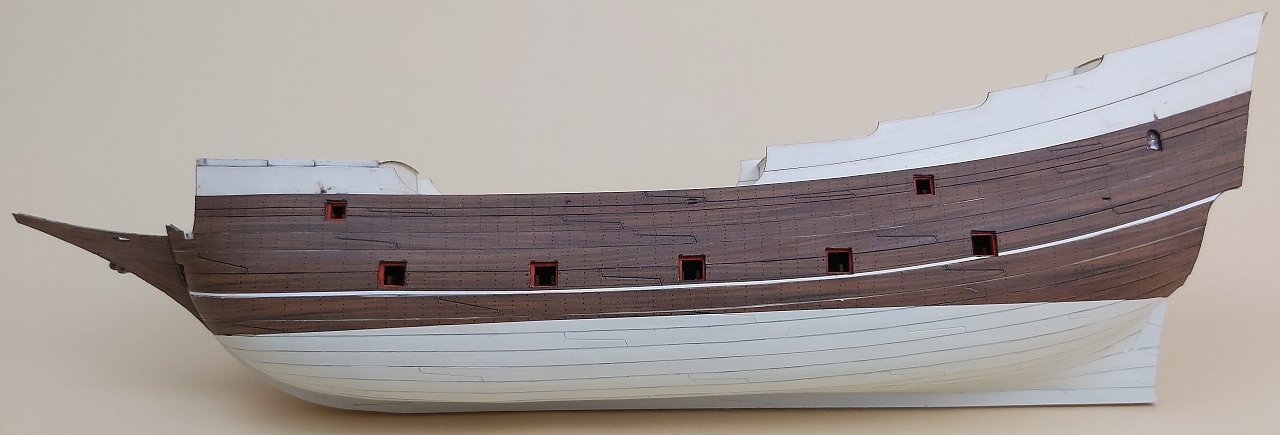
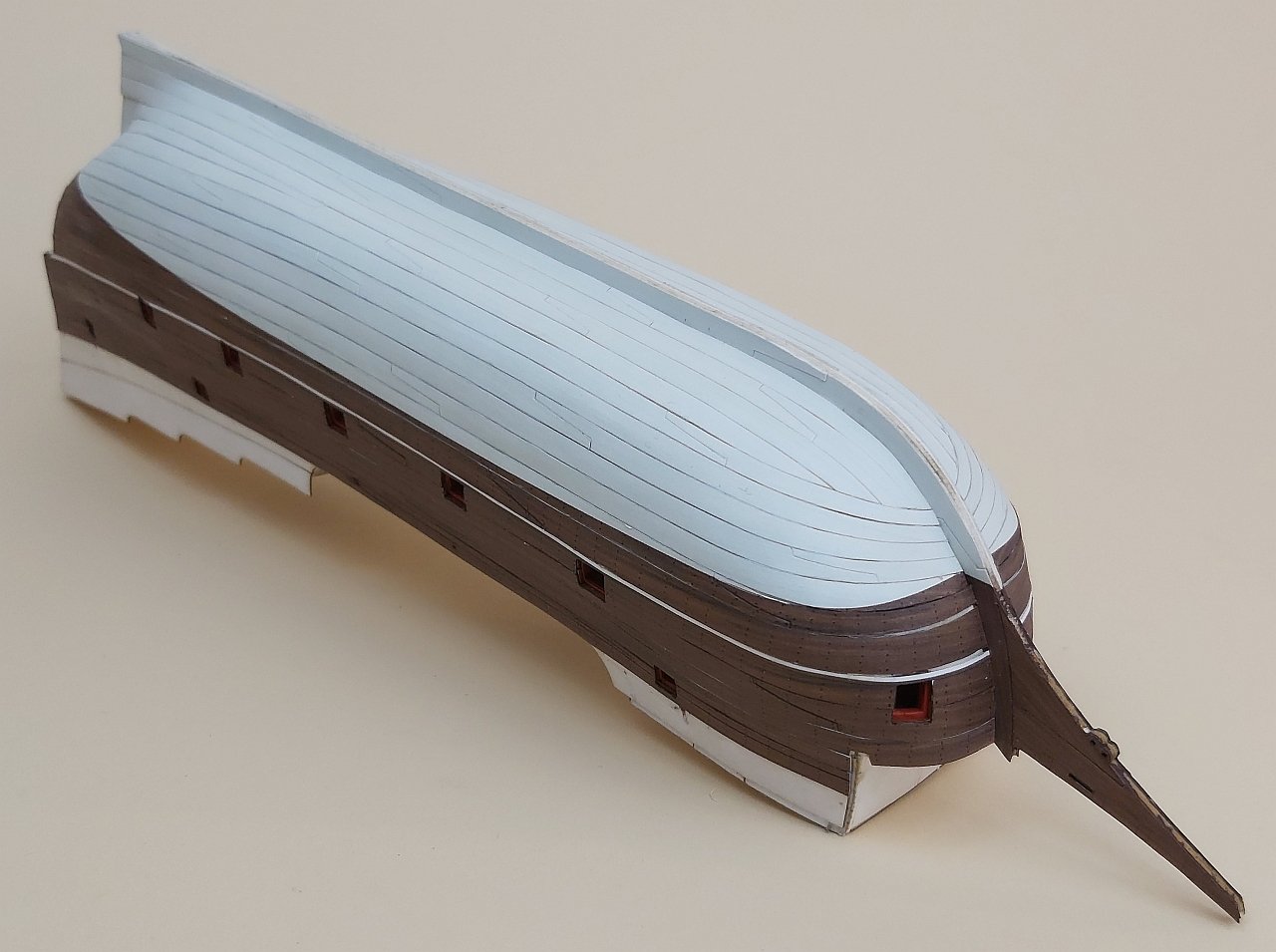
Step by step I glued wales and finished th bulwarks...
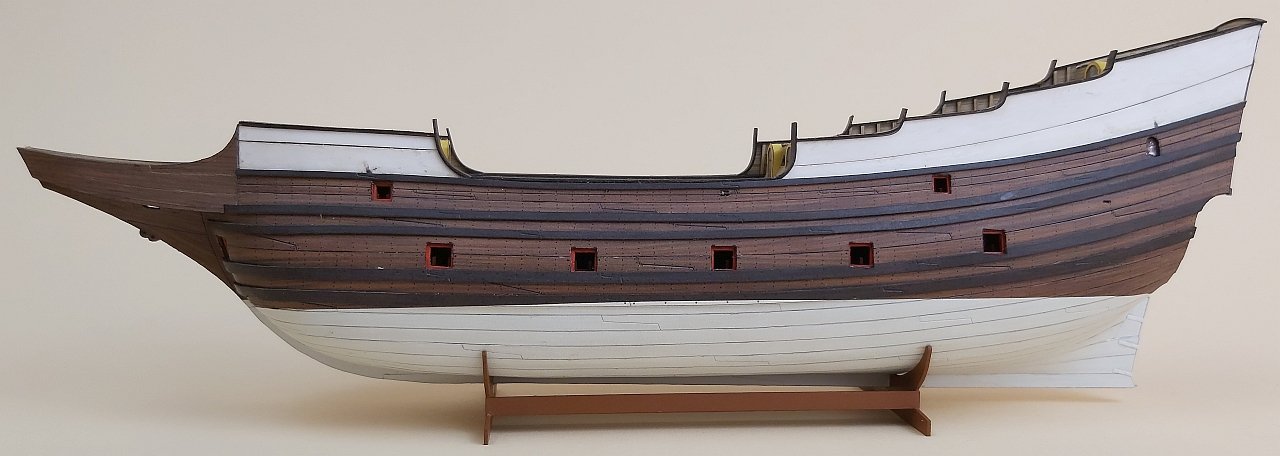
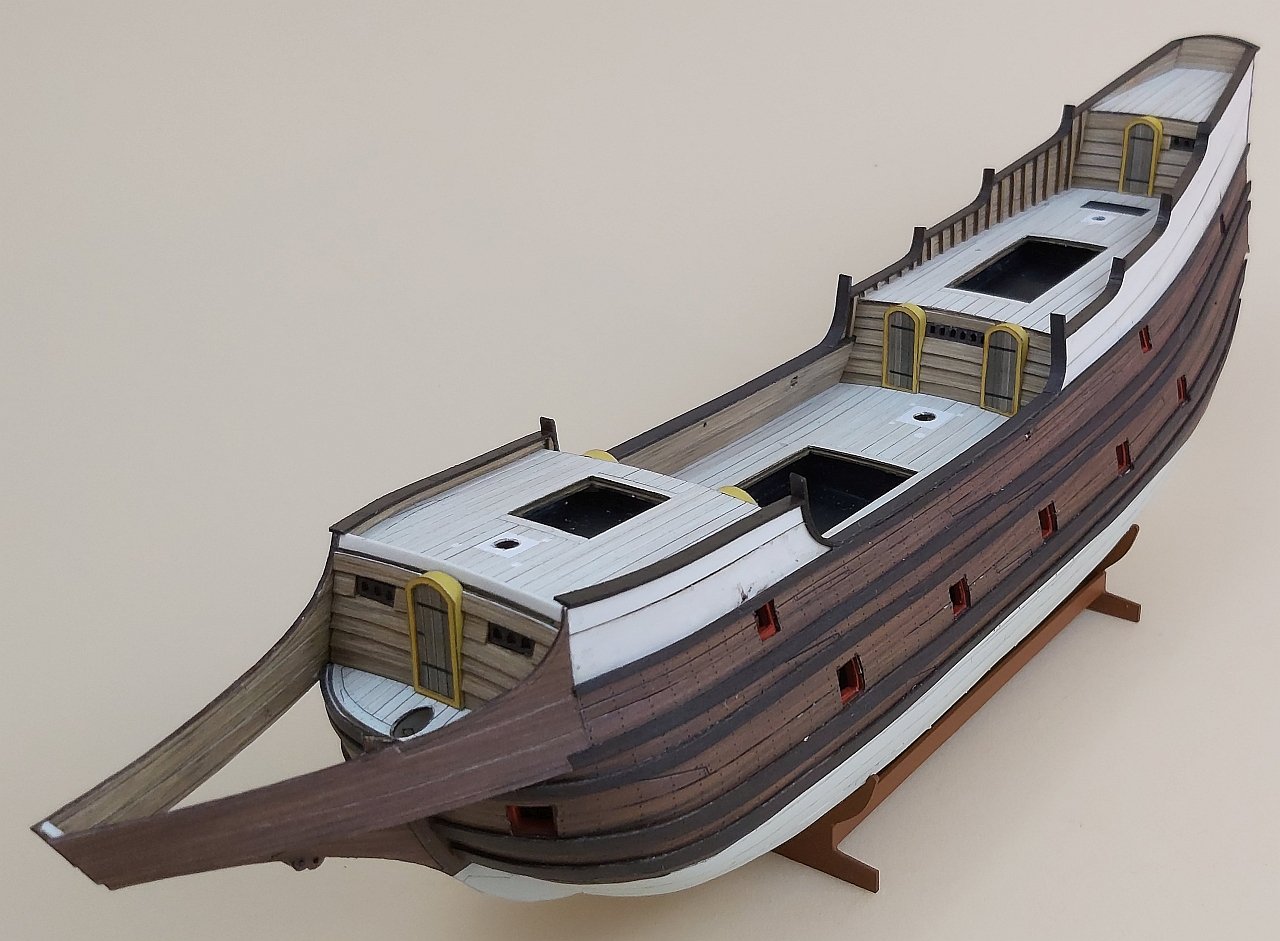
I also glued a "sloep" - a boat that will be amidships.
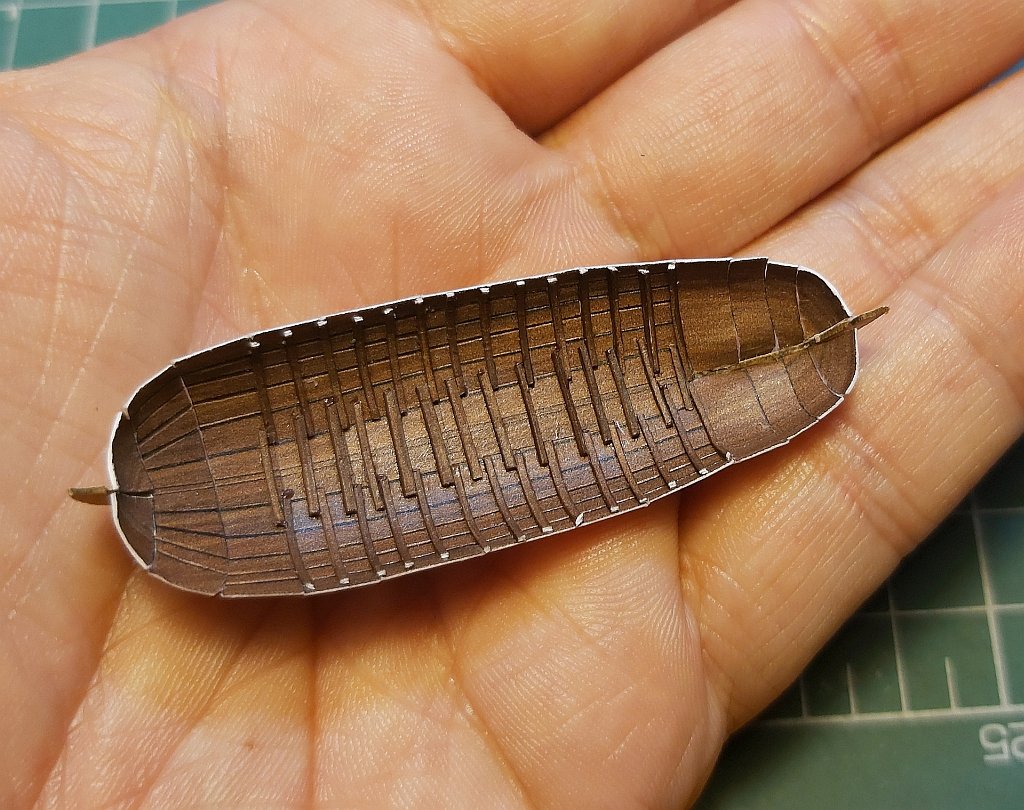
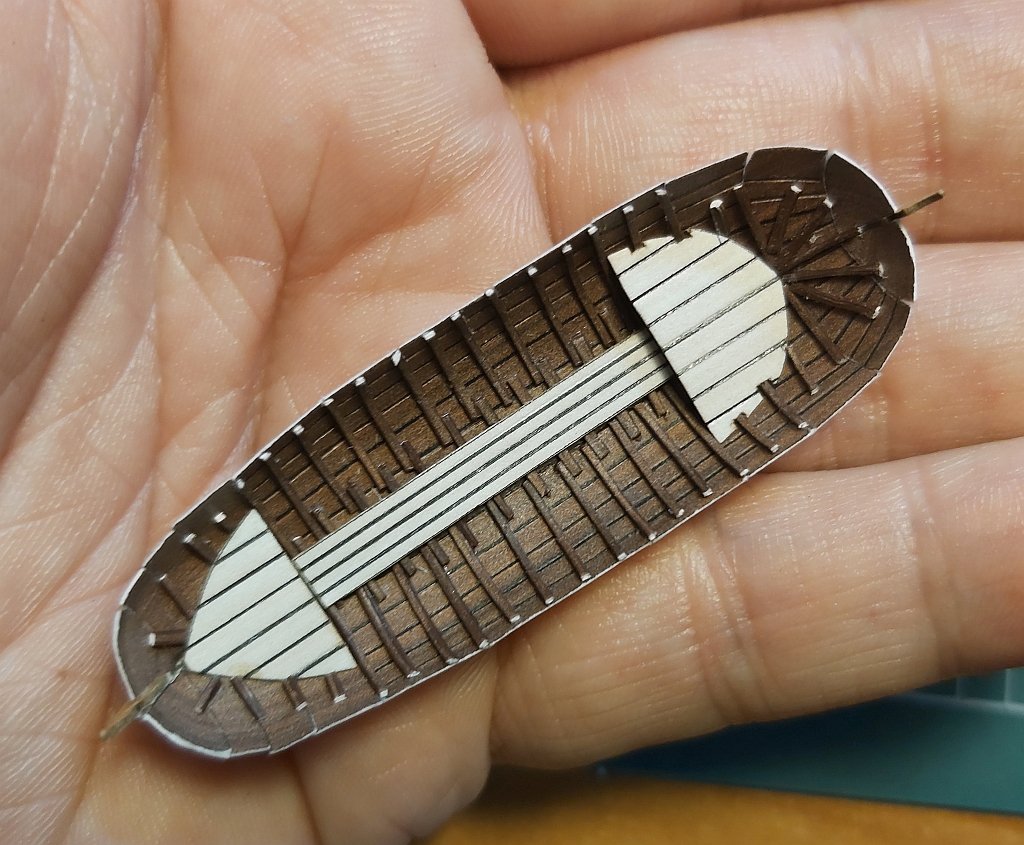
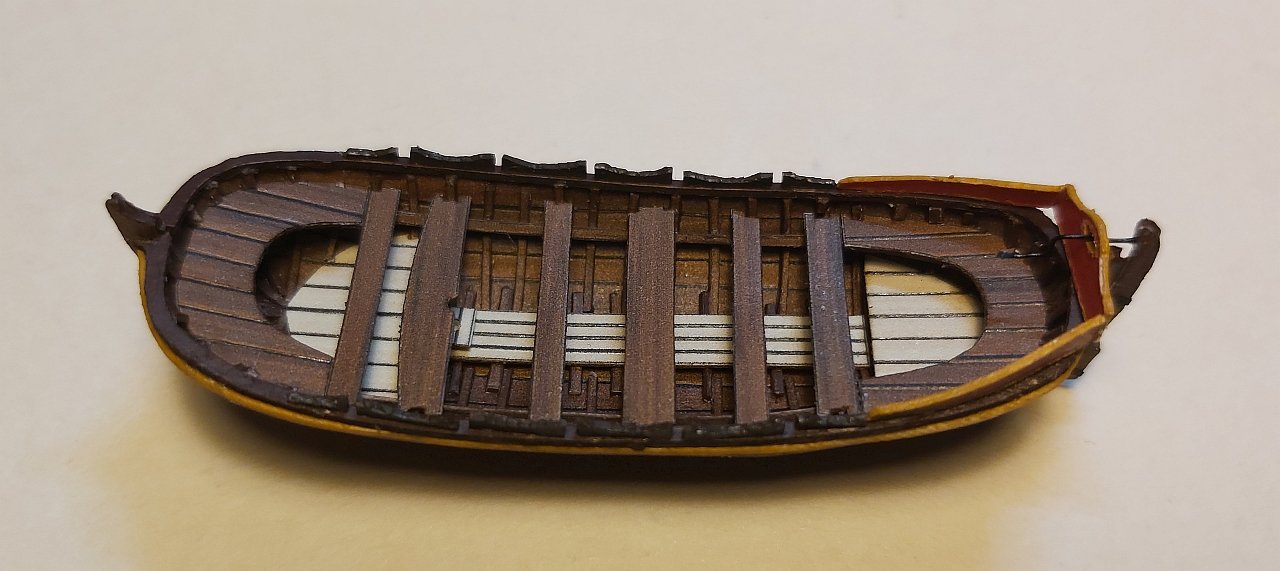
Now I can say that the hull is ready for more details and setting masts and rigging...
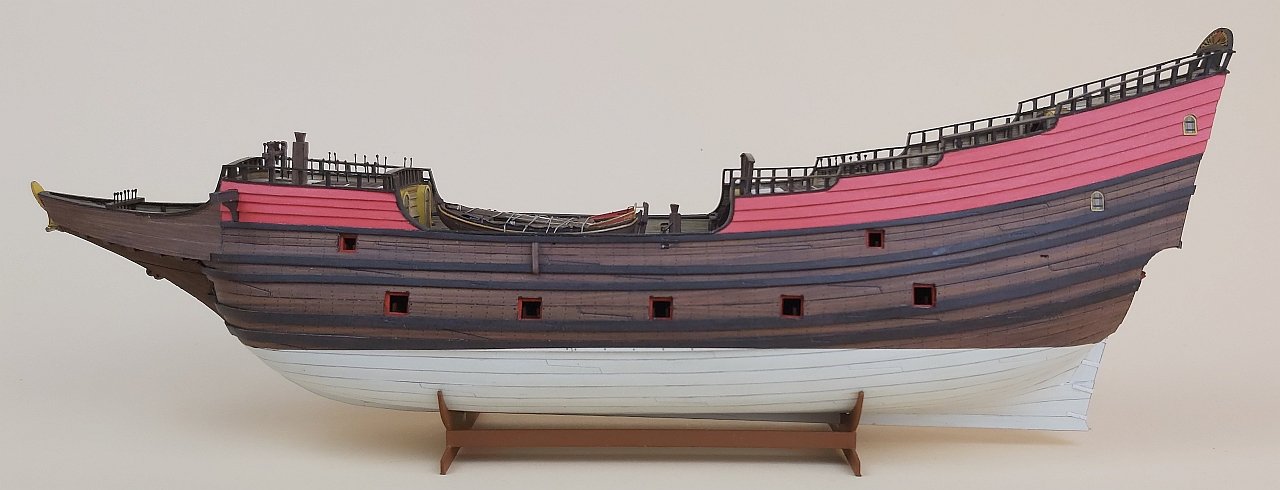
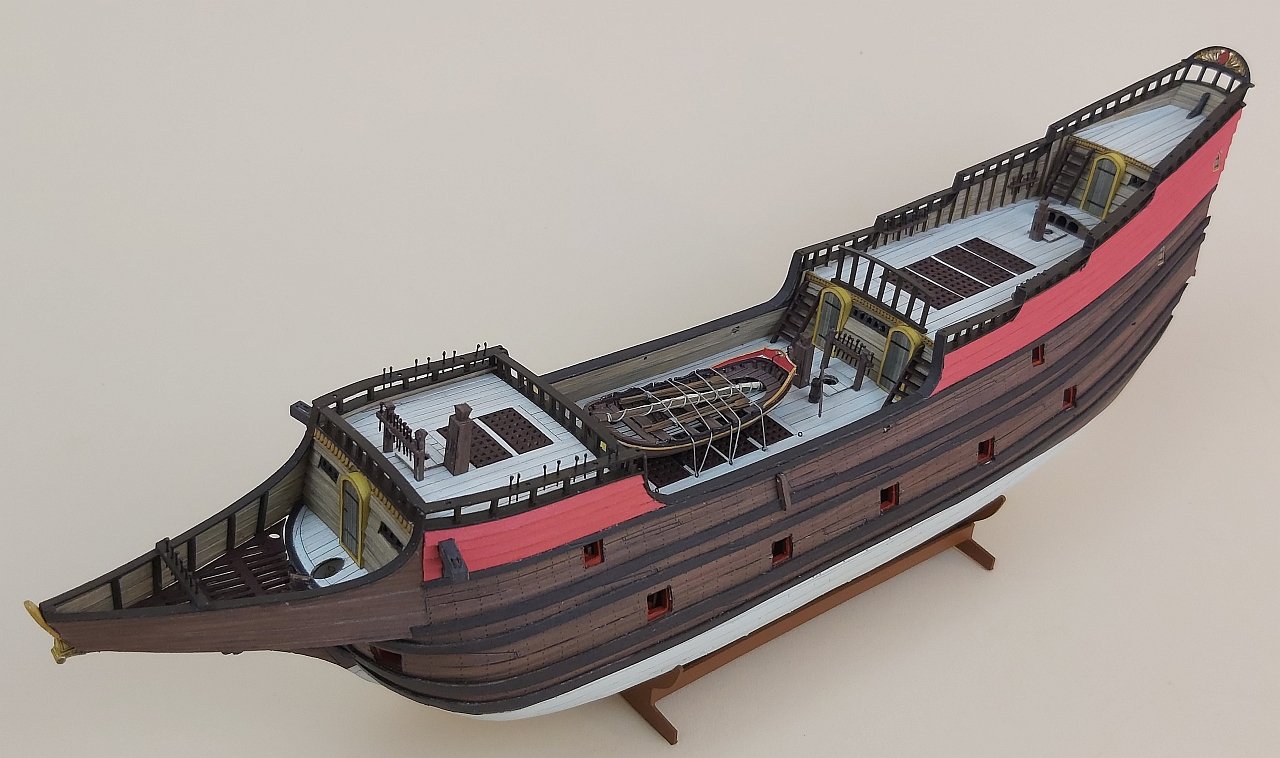
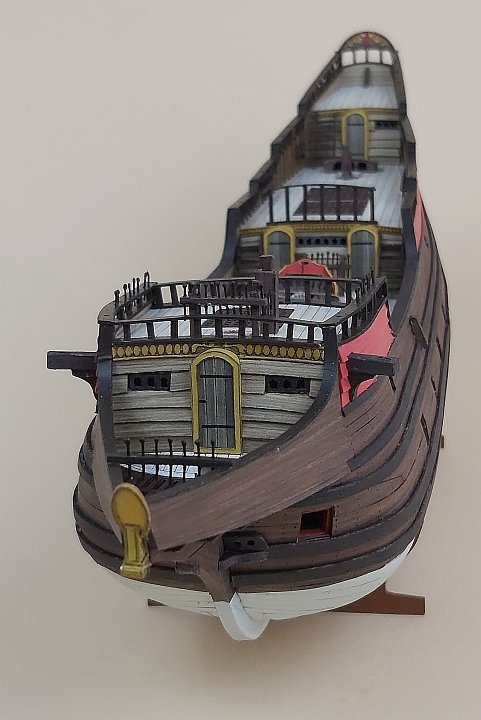
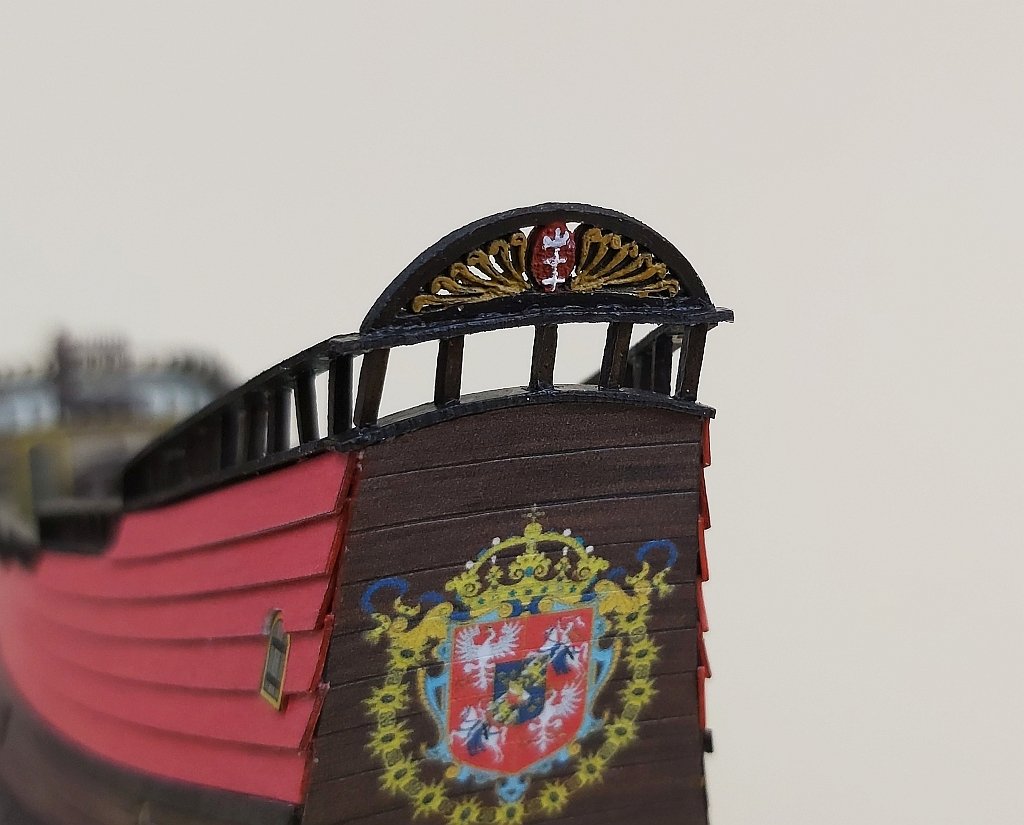
Best regards
Tomek
-
Hello everybody,
A few years ago, I had the opportunity to ask Mr. Hoving for his opinion on the plans of a sailing ship of the Polish fleet participating in the Battle of Oliwa (1627). These drawings were not of the highest caliber and I felt it was a pity to spend time building a model with so many design errors. But Mr. Hoving did not leave me empty-handed, but suggested building a more interesting ship, such as "De Zeven Provincien", and so my adventure with this project began. Not only did Ab Hoving give me the drawings, but he supported and continues to support me with his knowledge and patience. I certainly wouldn't have started this project without his help. Thank you, Ab.
Since for 30 years I have been gluing only cardboard models, which have their specificity and limitations, so not all details are reproduced, not all boards, beams and nails have been included in my project. I have omitted details on the lower decks that are not visible anyway.
As usual, I started with the hull frames made of cardboard with a thickness of 1 mm. Although the model is not small (for a cardboard model), 1 mm thickness is sufficient. The gunports will only be open on one side and I've put simplified gun carriages there. I painted the interiors in a dark color to avoid the "shining" of the white of the paper.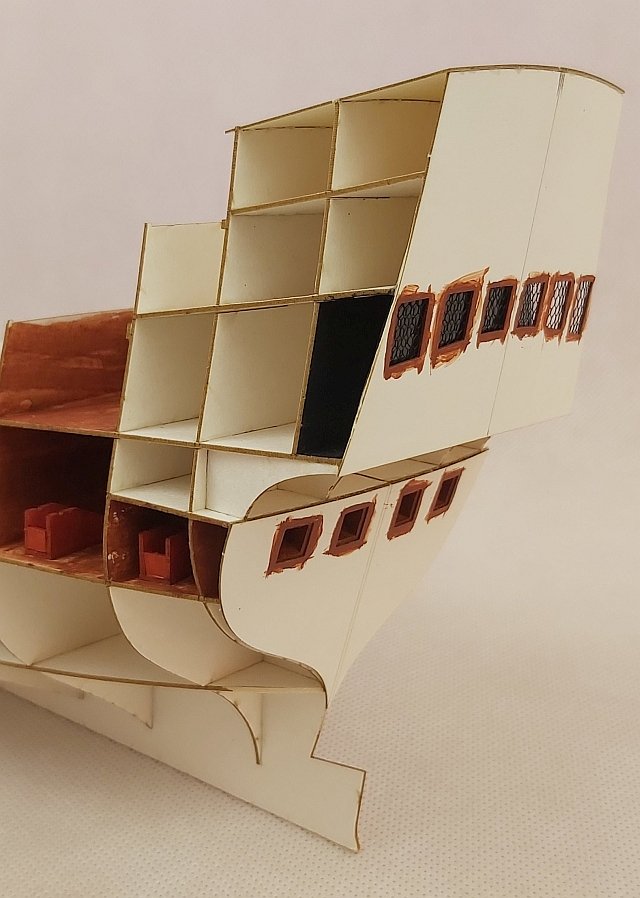
In order to stiffen the structure and make it easier to stick the planks later, vertical stripes were glued. A little practice allows them to be glued directly to the 1mm edge of the frames without any additional paper strips.
On the hull prepared in this way, I glued the first layer of 0.5 mm cardboard. Such a layer (and in the case of this model there will be two layers) allows you to oval the hull and avoid the marks of frames, which is a very common occurrence in the case of cardboard hulls. Cardboard is much more easily deformed than wood. For many years I have not used any "fillers" such as putty, it's just what I've learned over the years and it suits me.
In open gunports I built 1.0 mm cardboard frames. In some places it was necessary to remove minor defects with sandpaper.
Then I glued the lower parts of the stern and prepared the rudder.
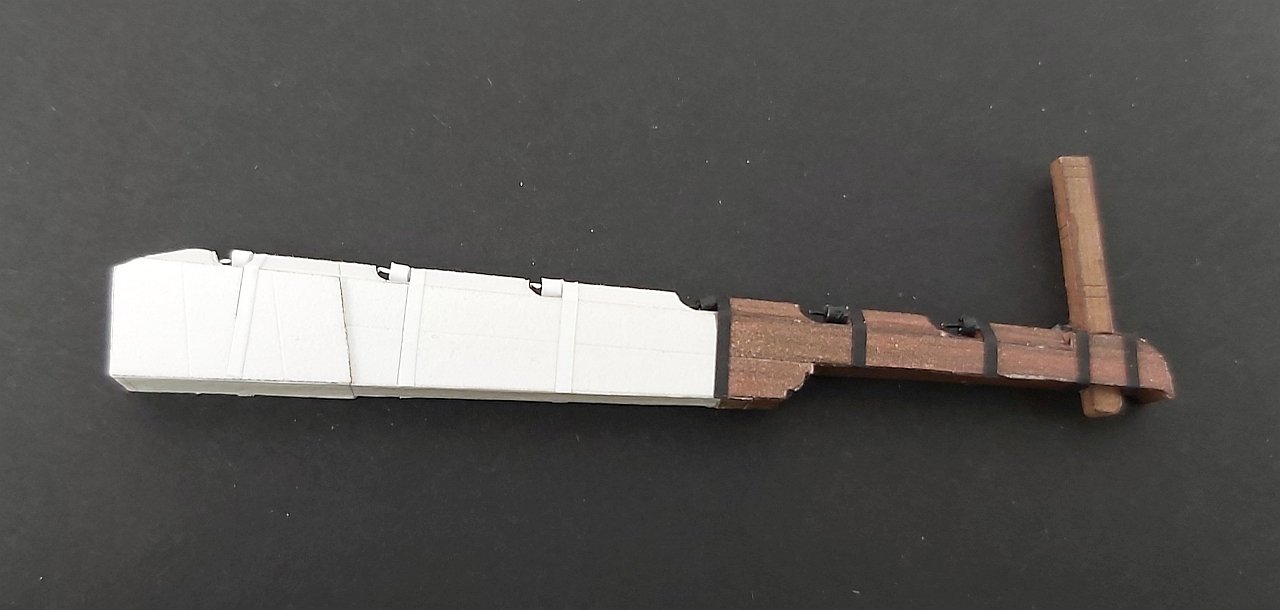
The time has come to stick the second layer of 0.8 mm cardboard on the hull. Since the planks had a thickness of about 1 mm on this scale, I wanted to take this thickness into account for gunports, where edges are visible. I thickened the keel in the stern part to get the effect of thicker lower planks (zandstroken).
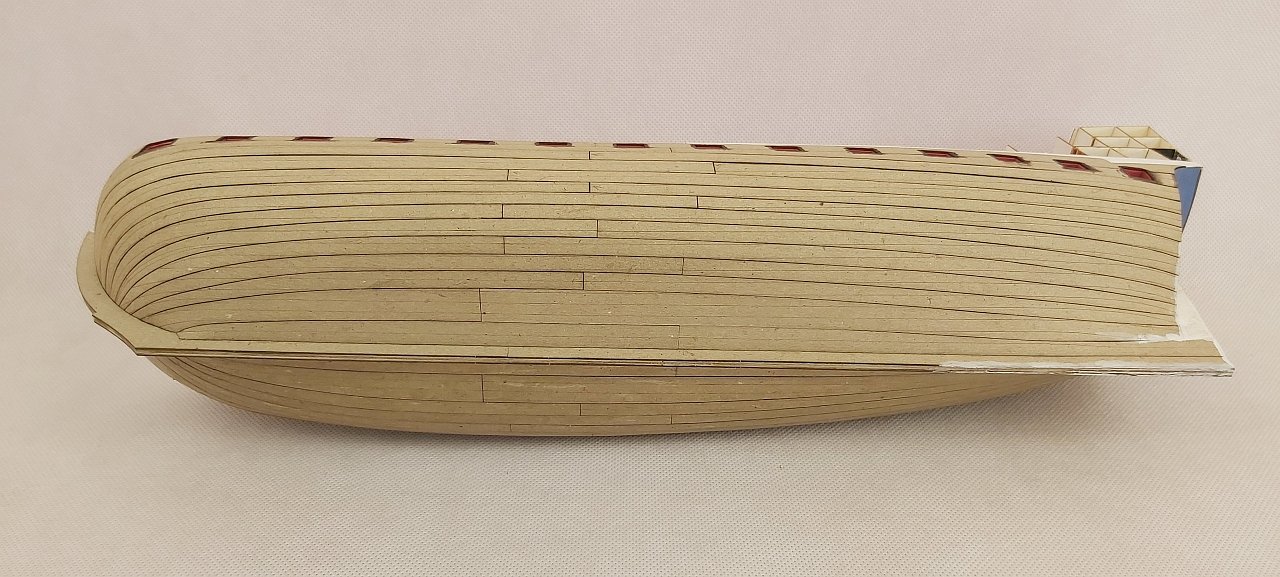
As the model requires a lot of work, I started gluing the final planks at this stage. I will not have to turn the model upside down in the future and thus expose it to damage. So I went with the cover up to the gunports and to the verdek level.

The subsequent stages of building the hull were similar.
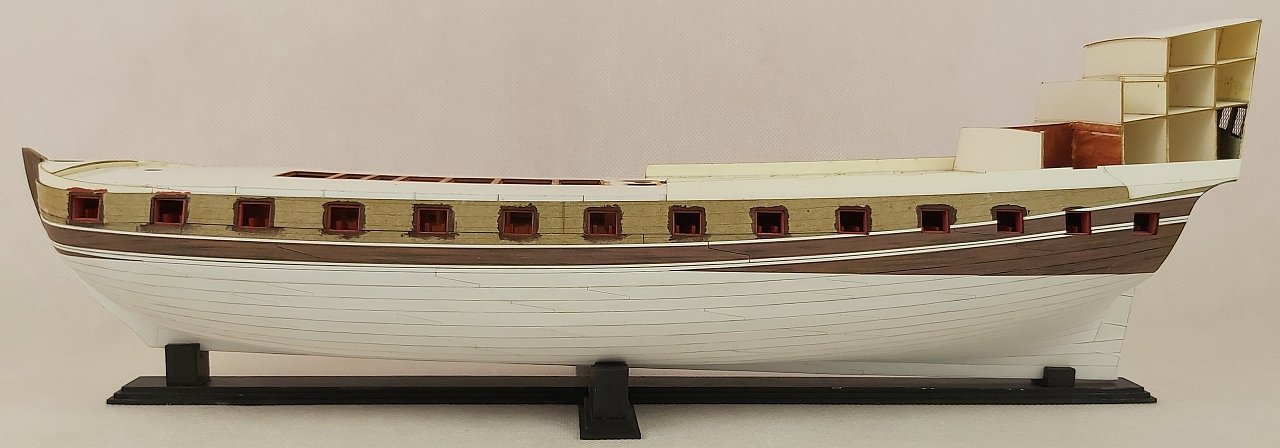
The first cannons and the next deck have appeared.
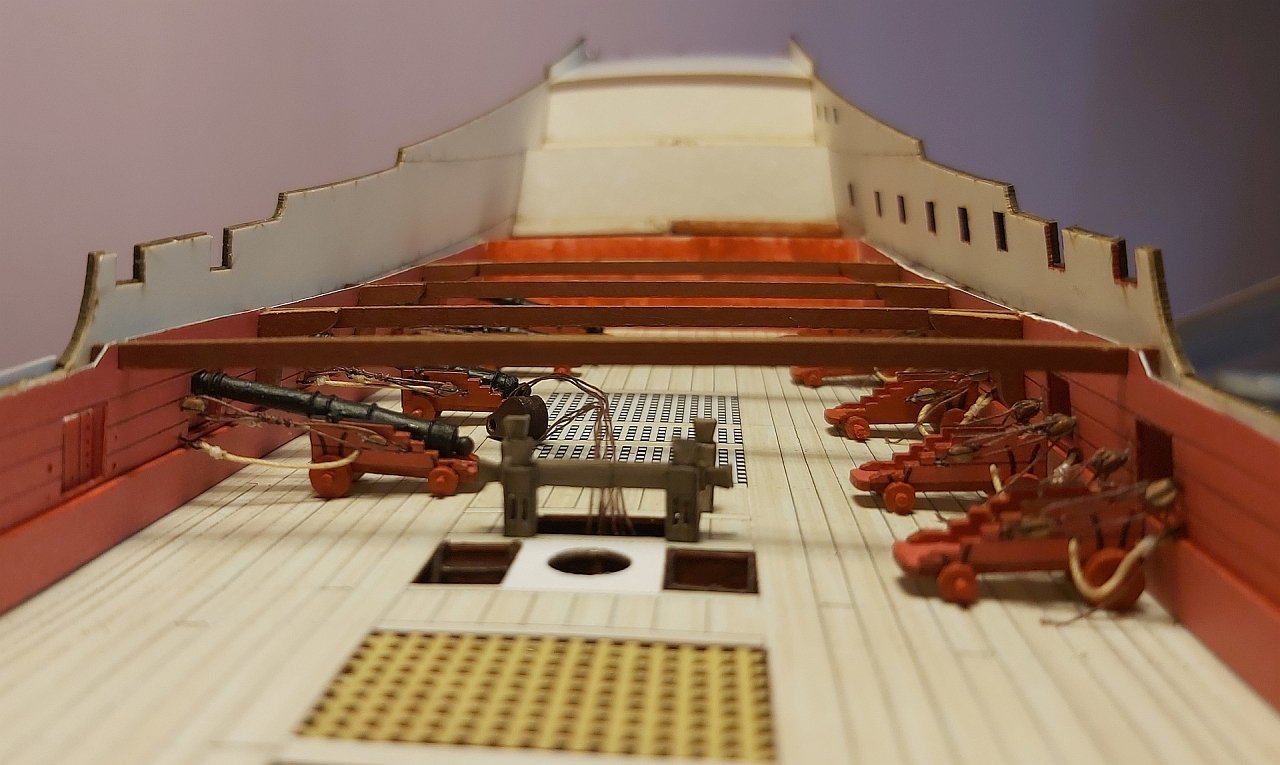
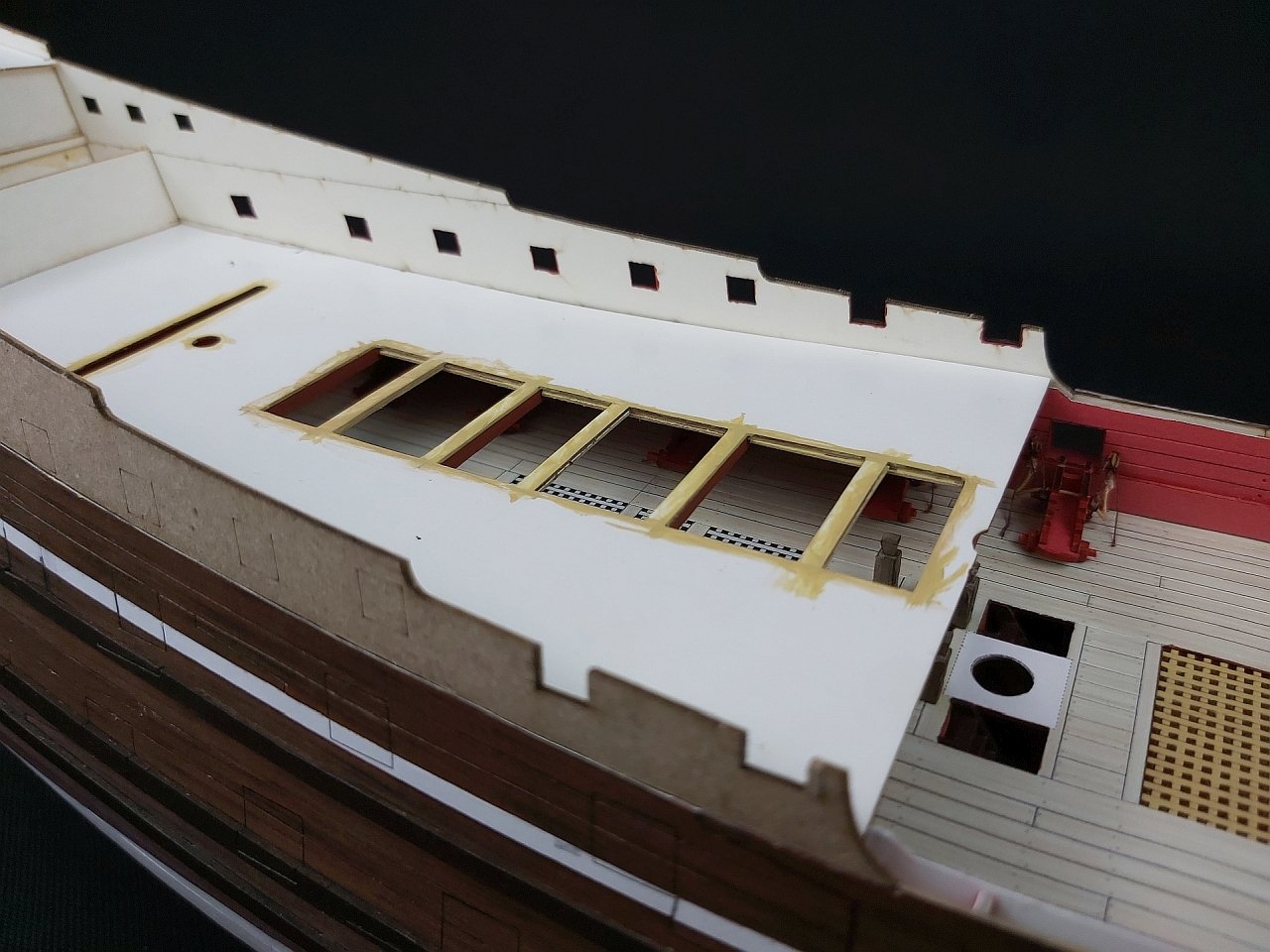
It's time for stern galleries. I had to glue such complex shapes for the first time and in the heat of the fight I completely "missed" the fact that the lower parts of the side galleries are in the colour of dark wood. It is much more likely that they were rather "greenish" like the rest of the gallery and the upper part of the hull, which can be seen in many old paintings. It will stay that way, because I do not paint the models (parts are already printed in color) and attempts to tear off the gallery could end up with damage that I would not repair.
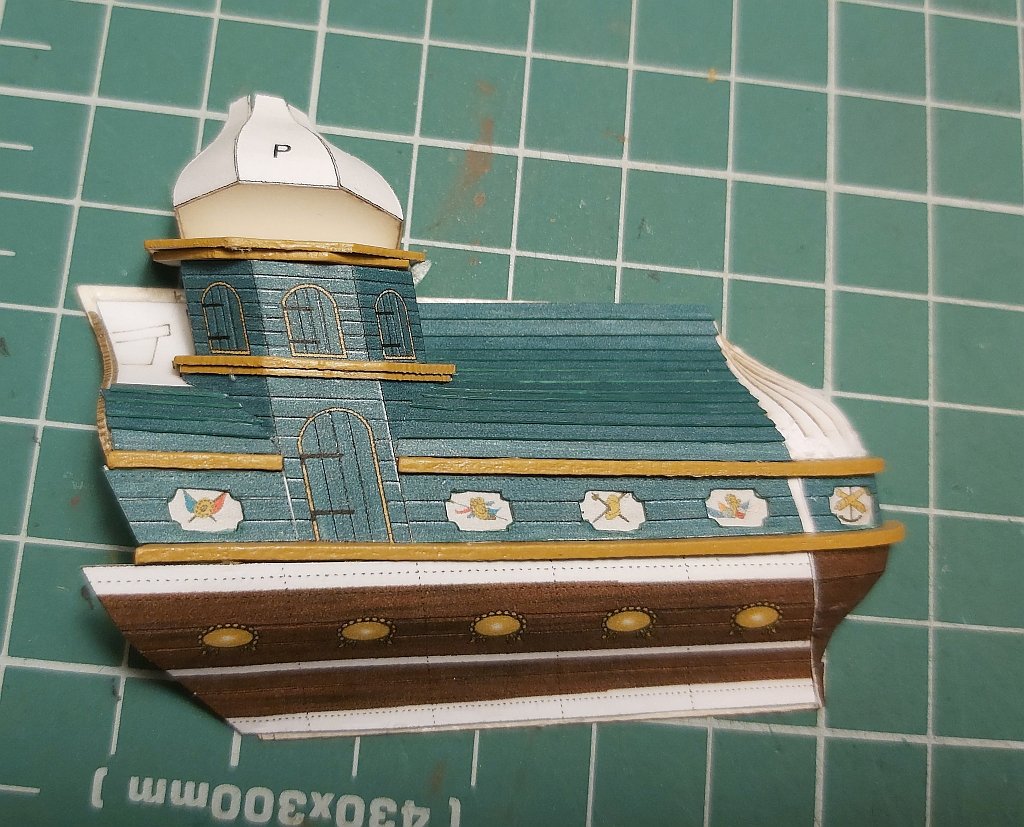
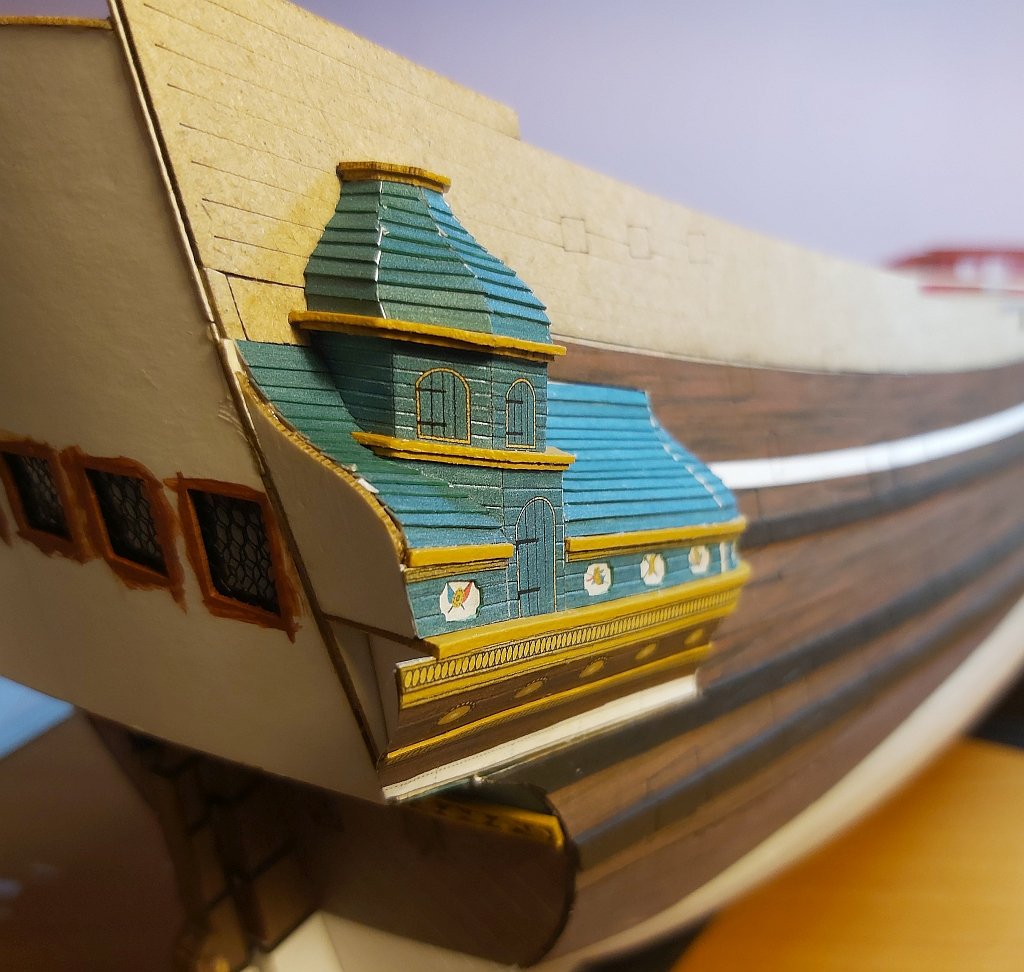
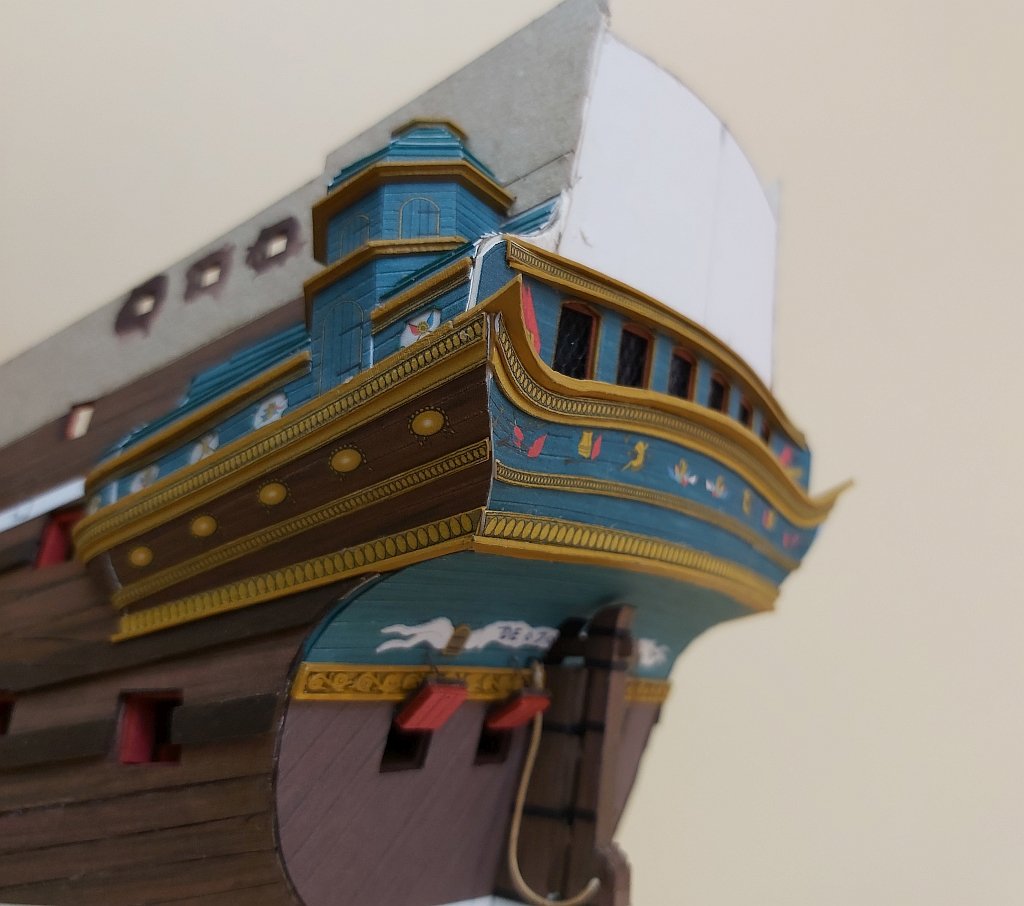
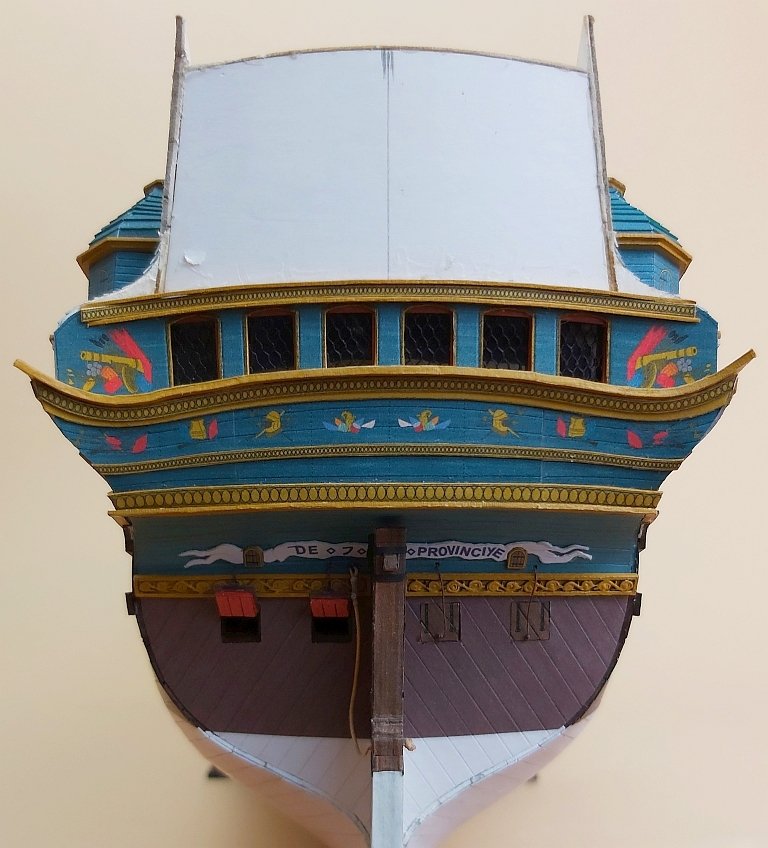
I will move to the bow soon as there is still a lot to do there.
Greeting
Tomek
-
Hi Ab,
it is something strange with "silkspan", as I was looking for it some time ago and didn't find it. It was used for RC models, but I found only paper called "Japanese paper", what seems to be the same. Very thin and very strong stuff, half-transparent so it should be painted before with acrilic paints. There are some movies on YT how to make sails of silkspan, but look there.
Best
Tomek
-
-
- pythagoras, Barbossa, GrandpaPhil and 12 others
-
 11
11
-
 4
4
-
-
-
-
Hello
Some time ago I started building Sao Gabriel based on the model in the museum in Lisbon. I do not have exact plans, but based on photos, dimensions and proportions of this type of vessels I managed to design a ship quite similar to the original. The progress in the construction is enough to show the first photos.
The hull frames were made of 1 mm thick cardboard.I have planned three layers of planking: the first vertical layer, which stabilizes the frames, the second longitudinal one on the cardboard 0.5 mm and the third one in color as the final planks. After gluing the first layer, I added some of the decks and evened the entire hull with sandpaper to remove adhesive residues and greater inaccuracies.
On these parts you can see lines according to which I will glue the next layer.
Before sticking the next decks, I had to make a few details, which would later be very difficult to access.
Then I glued the second layer, so far only to the level of the main deck and then I built a part of the forecastle.
The construction of forecastle...
Then, step by step, I added the next strips of the second layer and the next level in the forecastle.
Because the model has a lot of windows in the stern part, I created some rooms there. Unfortunately, there are not many sources describing rooms in sailing ships from this period, so this is only my imagination.
Now I could "lock" the whole with the upper decks.
Before gluing the last layer, the whole hull was covered with wood glue, which made it stiffer. I smoothed the whole with sandpaper and started gluing the last layer. Each strip is two boards with a dividing line marked with a blunt needle.
Visible white gaps will be covered with wales, so it will look OK.
Best
Tomek
-
Hi Ab,
very clear scratch-build manual and great promotion of card/paper modeling. Thank you!
Best
Tomek
- thibaultron, woodrat, ccoyle and 3 others
-
 6
6
-
1 hour ago, Richmond said:
Tomek,
When you state you only glue the edges did you mean both the horizontal and vertical edges of the frames, rather than gluing the whole face of the first planking?
Richmond
Sorry for my English, it is not perfect so... on the picture below you can see what I meant "the 1-st and 2-nd layers" and "frames". I put on glue only where green lines are. Then I apply glue on the whole face of the final planks (3-rd layer).
Regards
Tomek
- catopower, Mirabell61, Richmond and 1 other
-
 4
4
-
Thank you Chris.
the kit is going to be in "Modelarstwo Okretowe" (http://www.modelarstwookretowe.pl/index.php?p=21) and FB (https://www.facebook.com/modelarstwookretowe/?fref=gc&dti=103236332496&hc_location=ufi)
Best
-
Dowmer,
Thank you for appreciating.
SAILS. I think, that in 1:100 scale any sewing is far out of scale, so I use only transparent glue (for wood for example Pattex). The material is batiste. I soak a part of it with glue and when it is dry I cut of long stripes. I glue them on the sketch of a sail. Then I cut out the sail and glue stripes on the other side. At the end I glue ropes and some cringles. Such sails are rather stiff (because of glue) but can be bent. Sometimes I use glue, water and hairdryer to give them the "windy" shape. Pictures below
Regards
Tomek
-
-
Greetings to all.
My name is Tomek. For some time I have been working on my next card sail ship the British cutter HMS "Fly". I build my models only from paper and cardboard without painting (of course masts and rigging are made of wood and thread). I will honestly admit that "Fly" is my 20 cardboard model of a sailing ship so it looks much better than my first models from 15 years ago.
The "step by step" how I design and build card sailing ships...
1. Frames made of 1mm card. The model is really small (about 16 cm long)
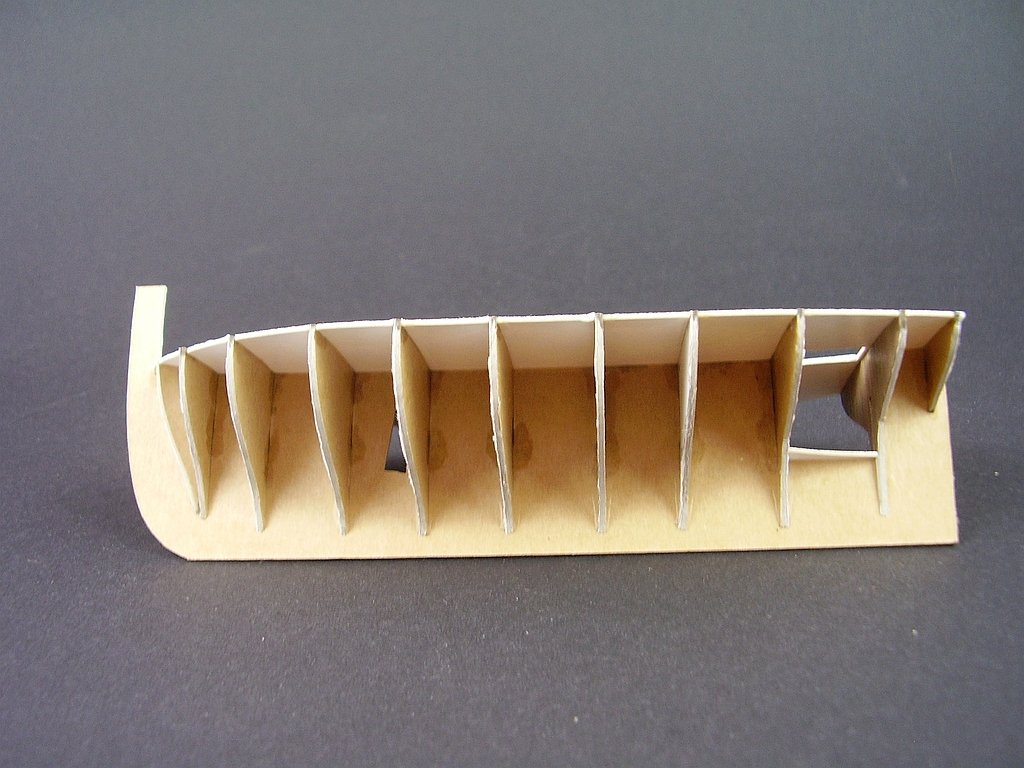
2. The first layer to strengthen and stabilize the hull

3. The second layer made of 0,5 mm card. The glue is applied only in places where the edges of the frame are located . Thanks to this the hull gets soft curves without visible "cow's ribs" ...

4. Attaching the third final layer on a well-prepared hull is a pleasure.
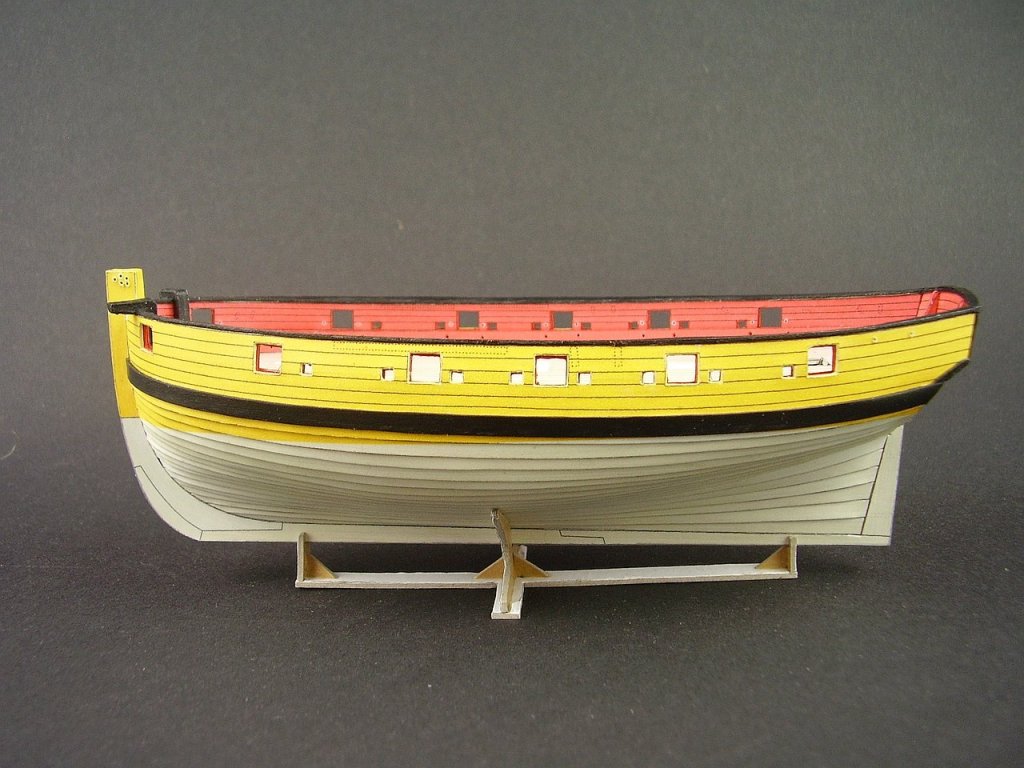
5. The deck equipment and artillery
6. The current stage - the mast and the bowsprit with standing rigging
Regards
Tomek
- michael mott, davyboy, EdT and 18 others
-
 21
21
-
Hi Chris,
most of them were published by WAK, a Polish cardboard publisher: Grosse Jacht, HMS "Badger", muleta de Seixal, trabaccolo, Allege d'Arles and the last one Viking boat "Gokstadskipet". I also had one kit in "Modelarstwo Okrętowe" - HMS "Speedy". As I'm a "paper" modeler, you can find some of my work on "paper" forums like "Papermodelers.com" as Seahorse.
Regards
Tomek
- thibaultron, mtaylor, geoff and 2 others
-
 5
5

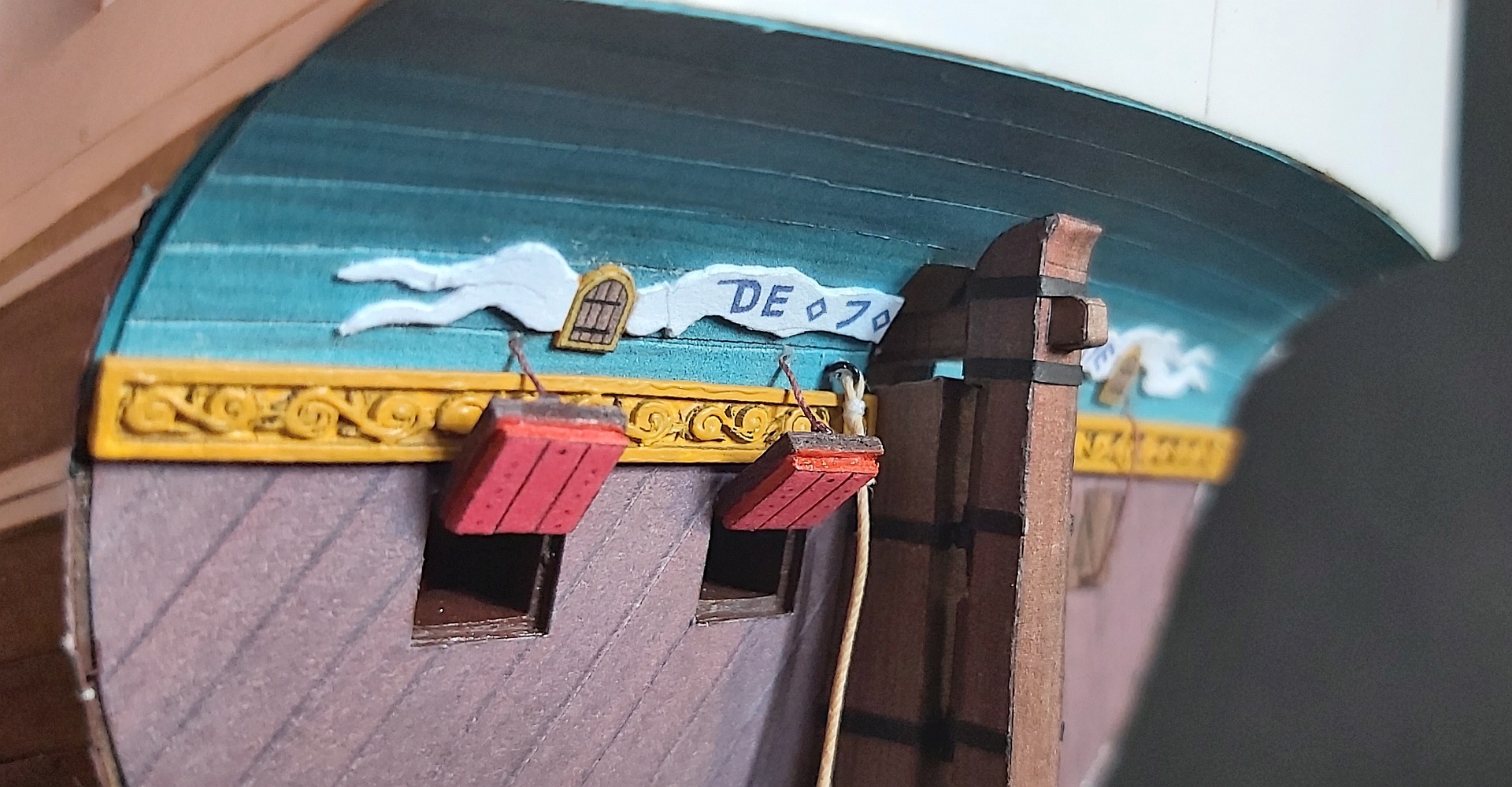
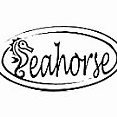
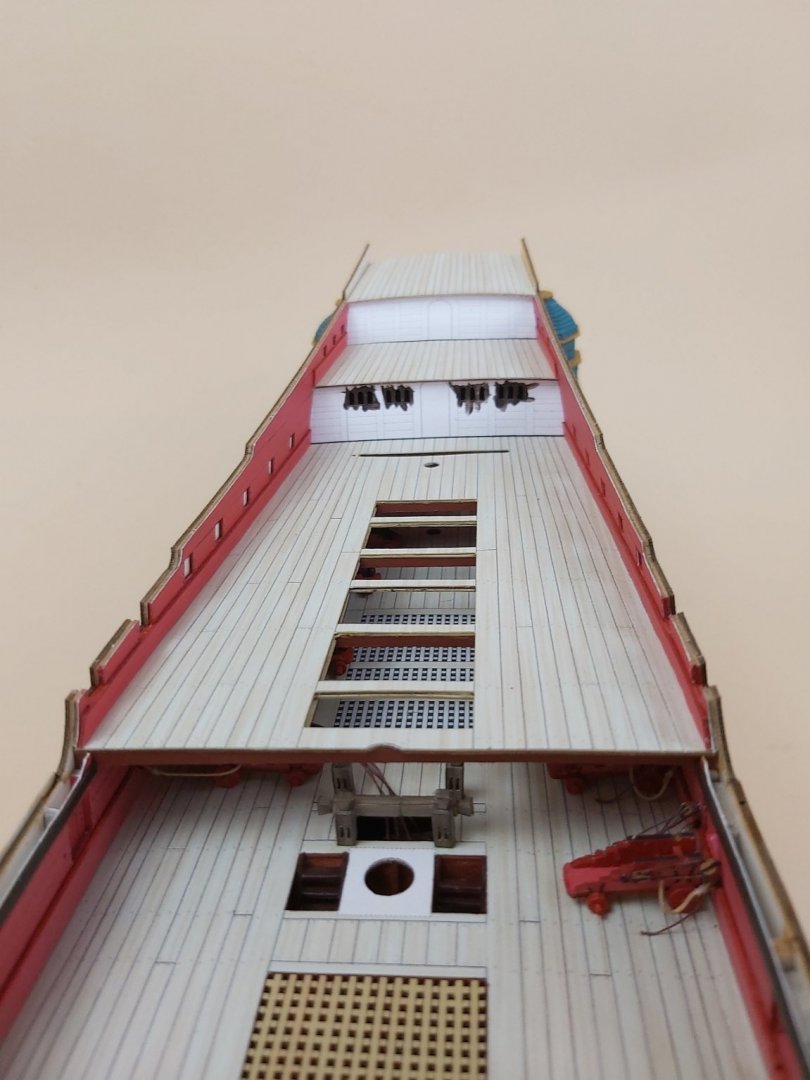
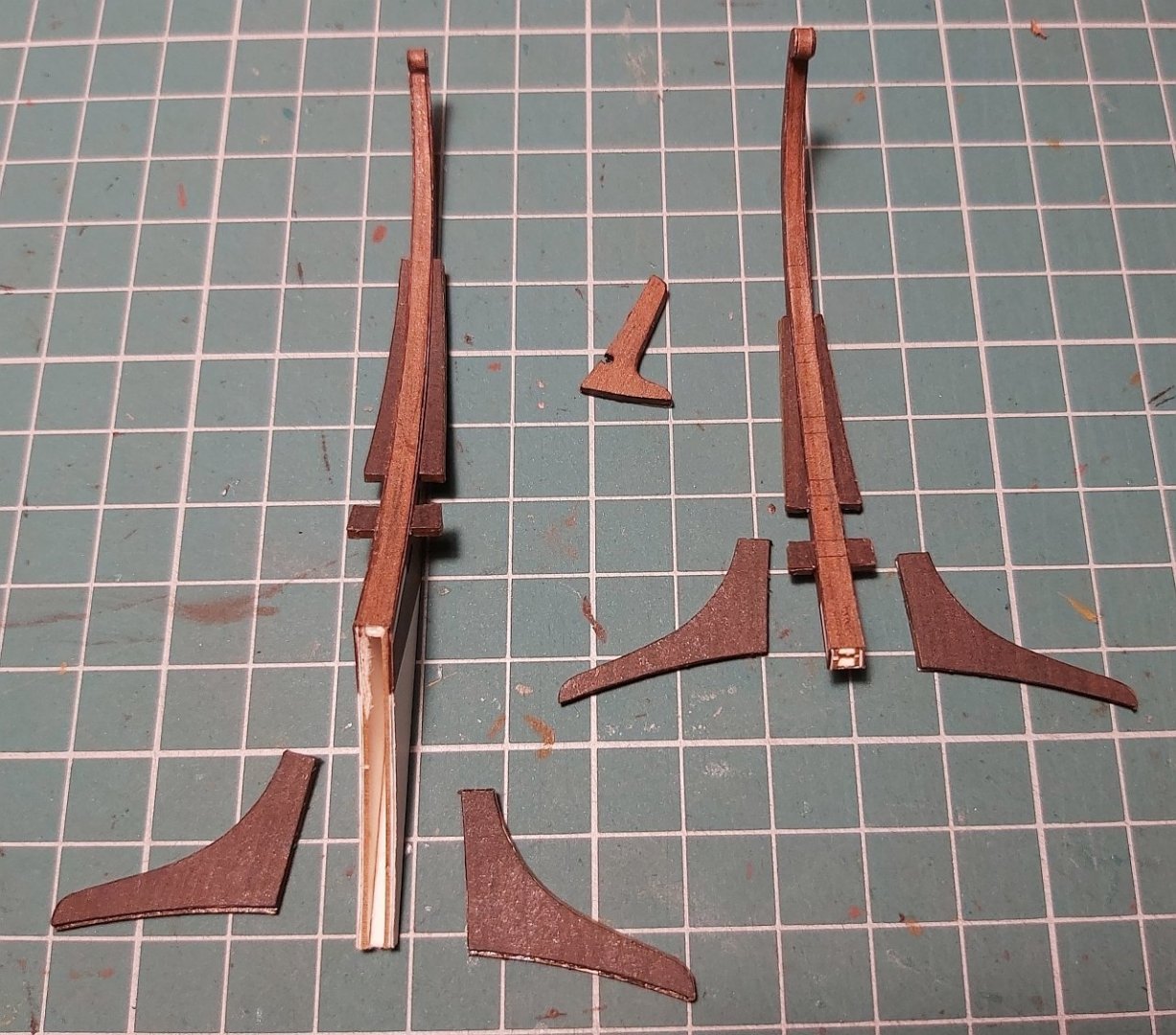
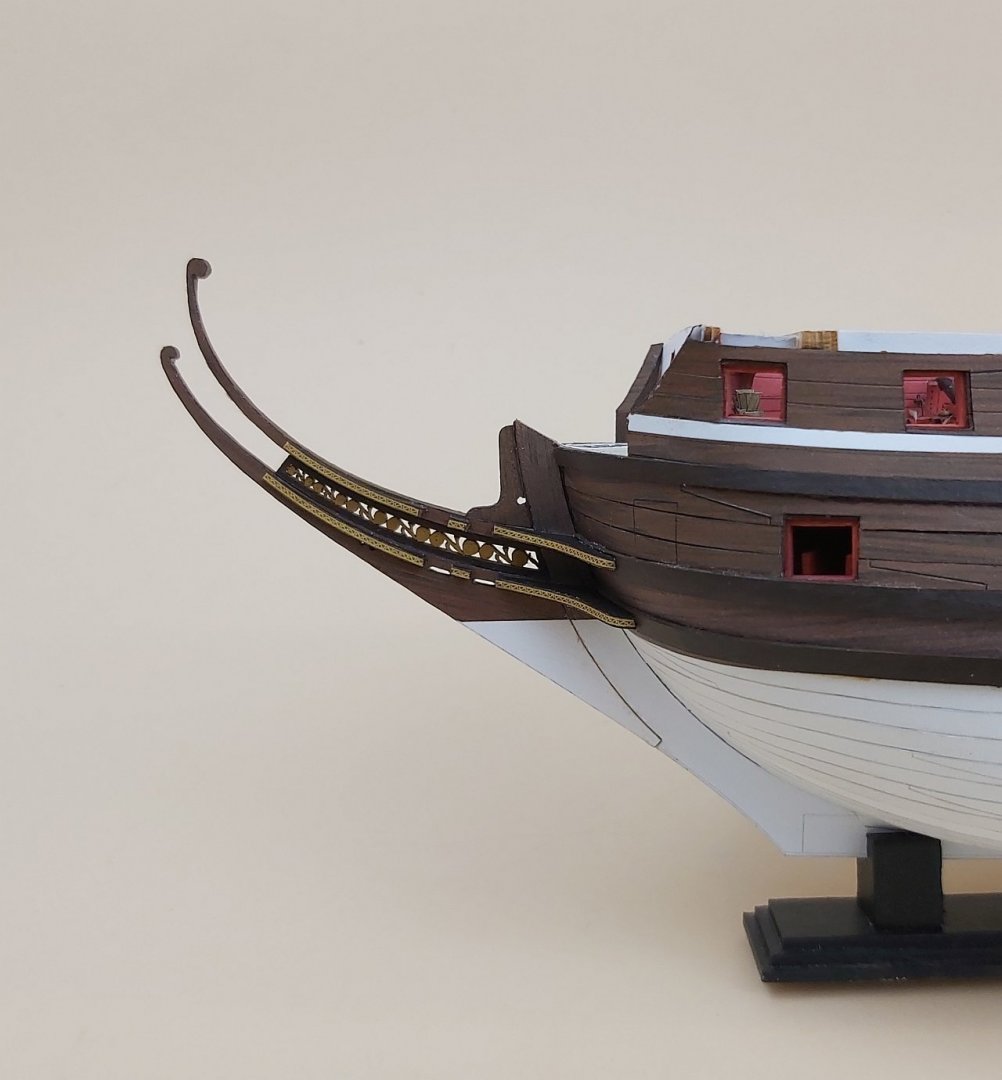
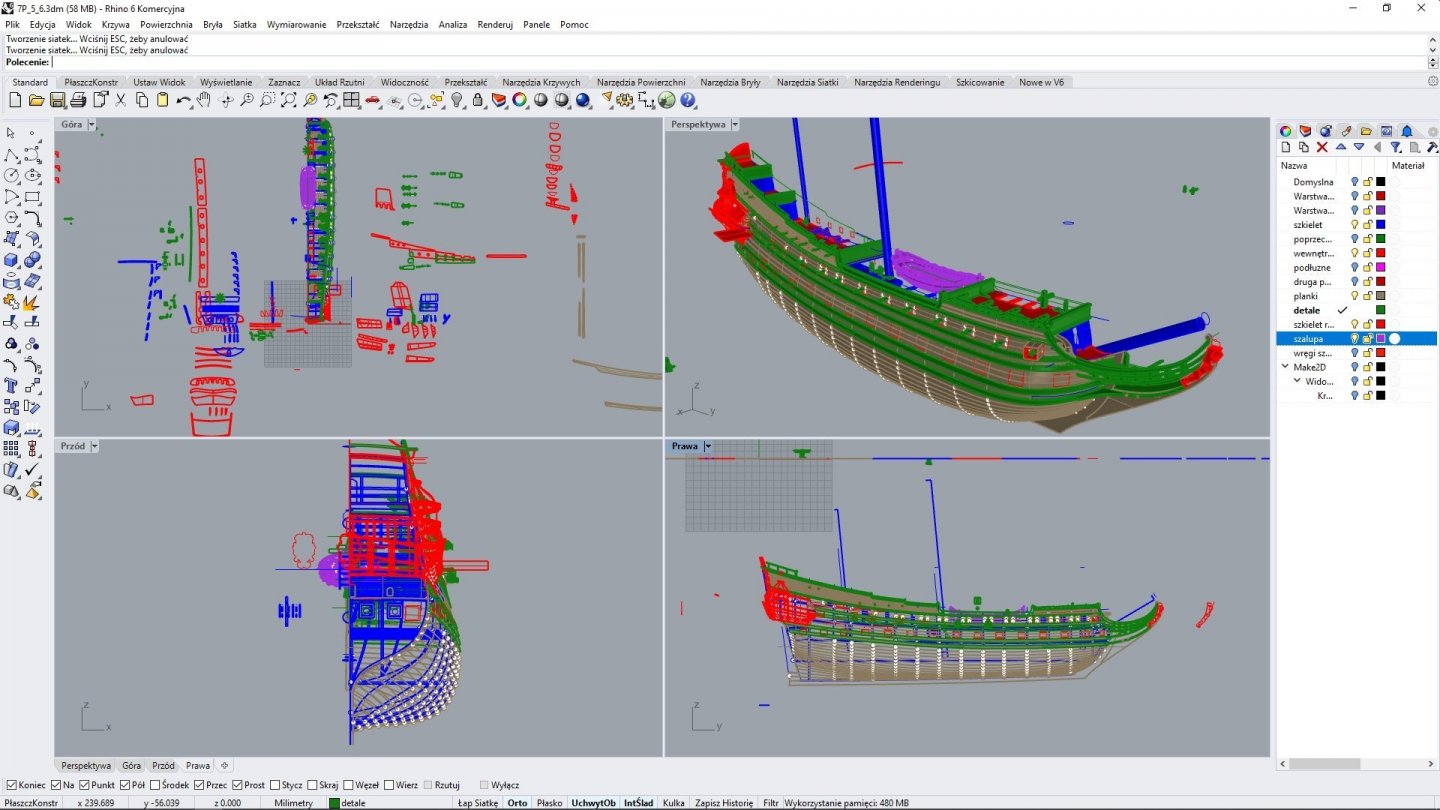

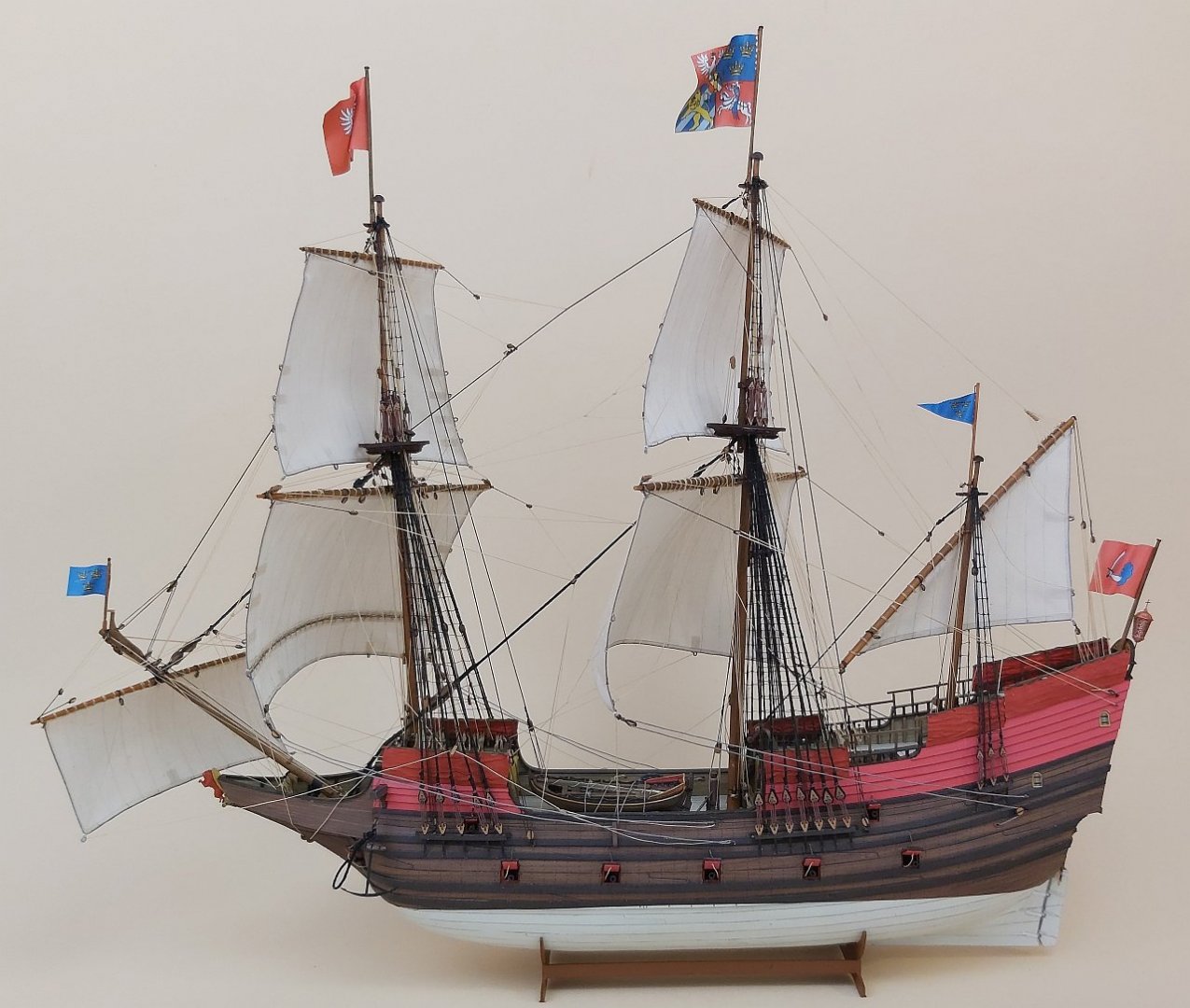

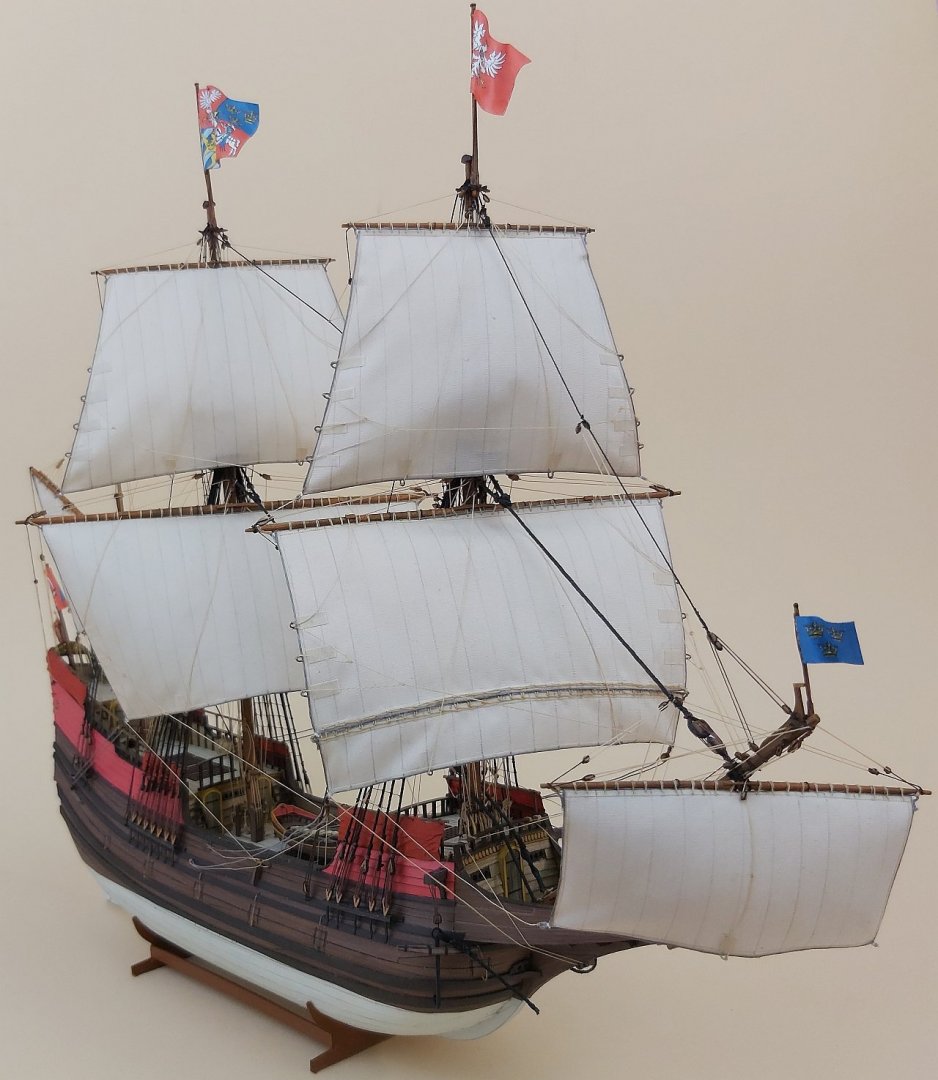
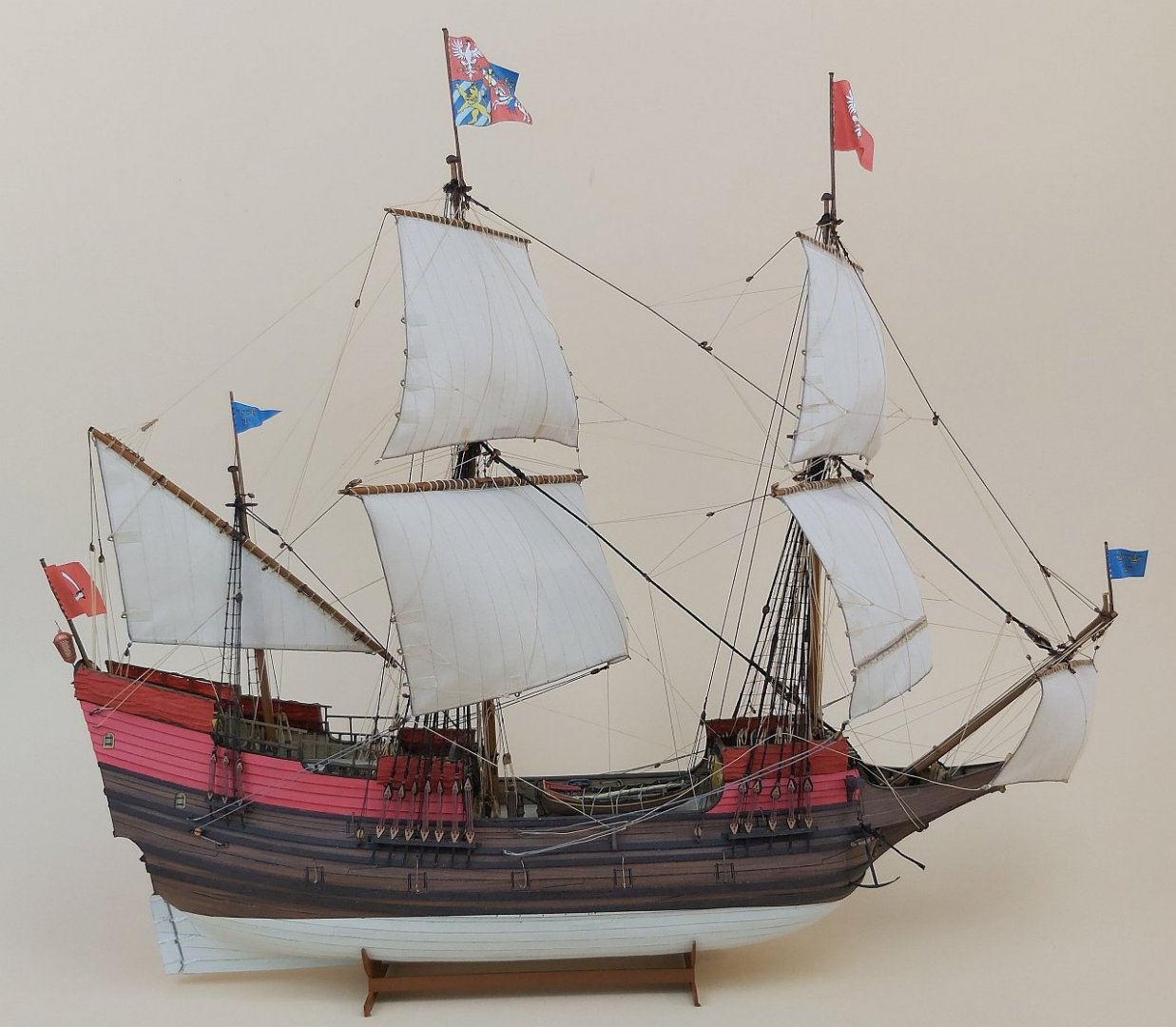
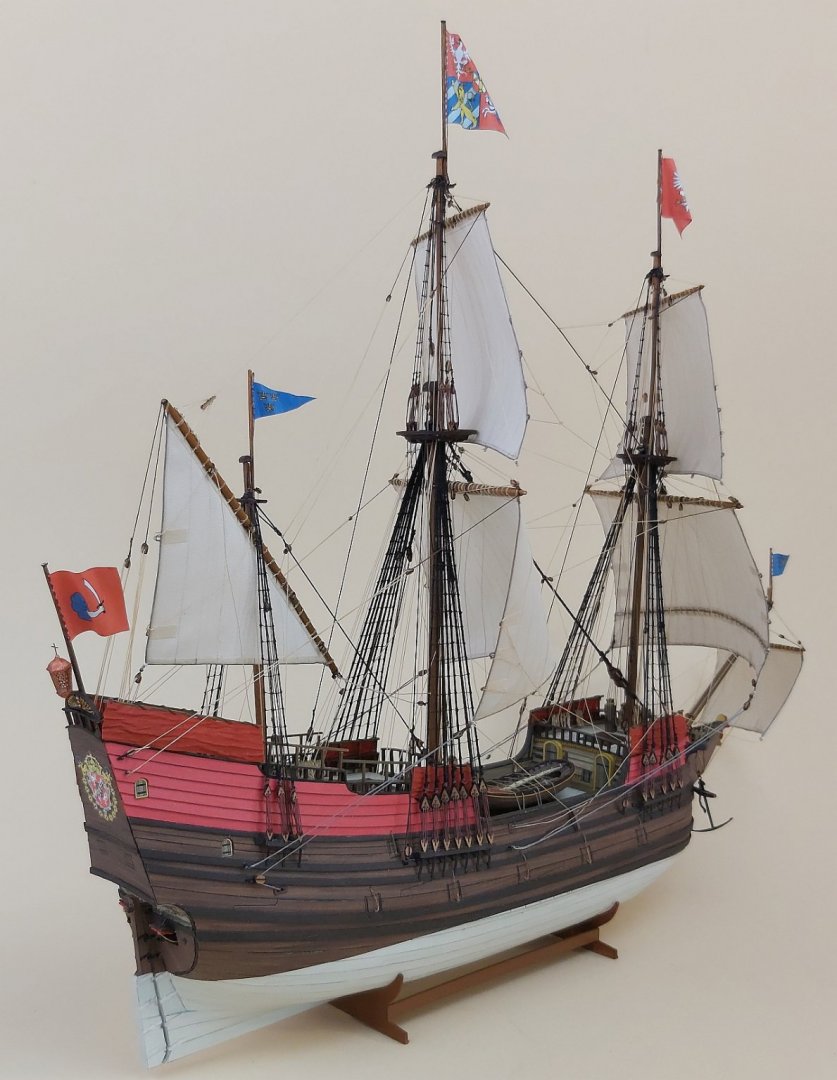
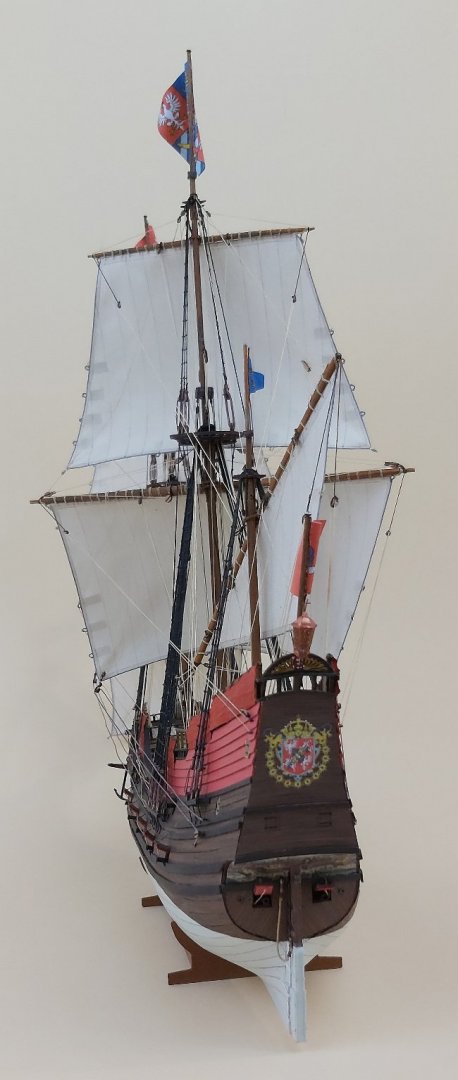
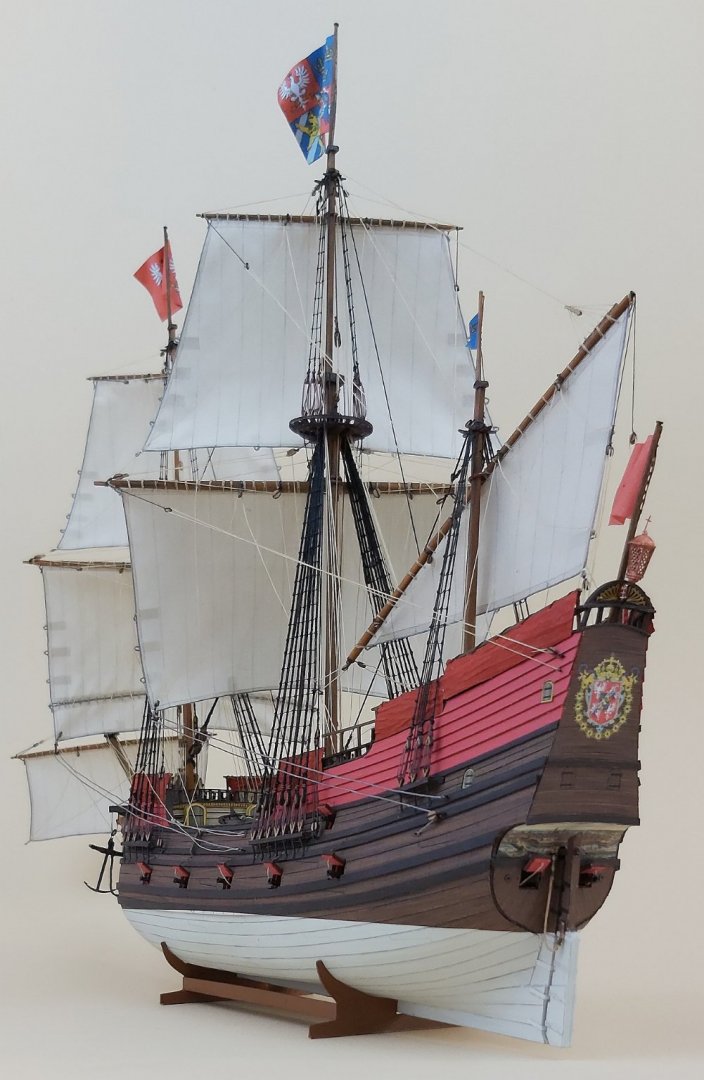
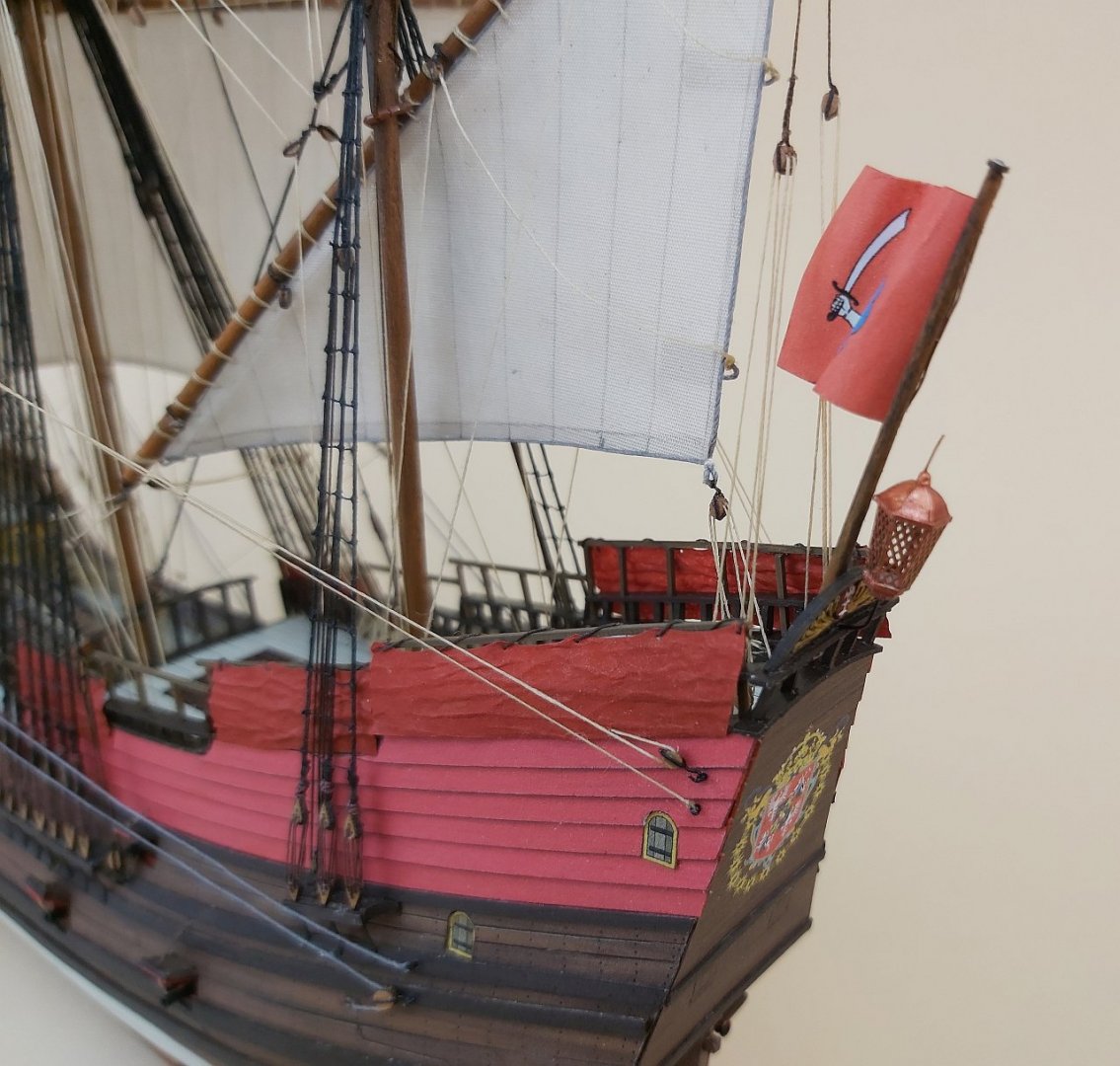
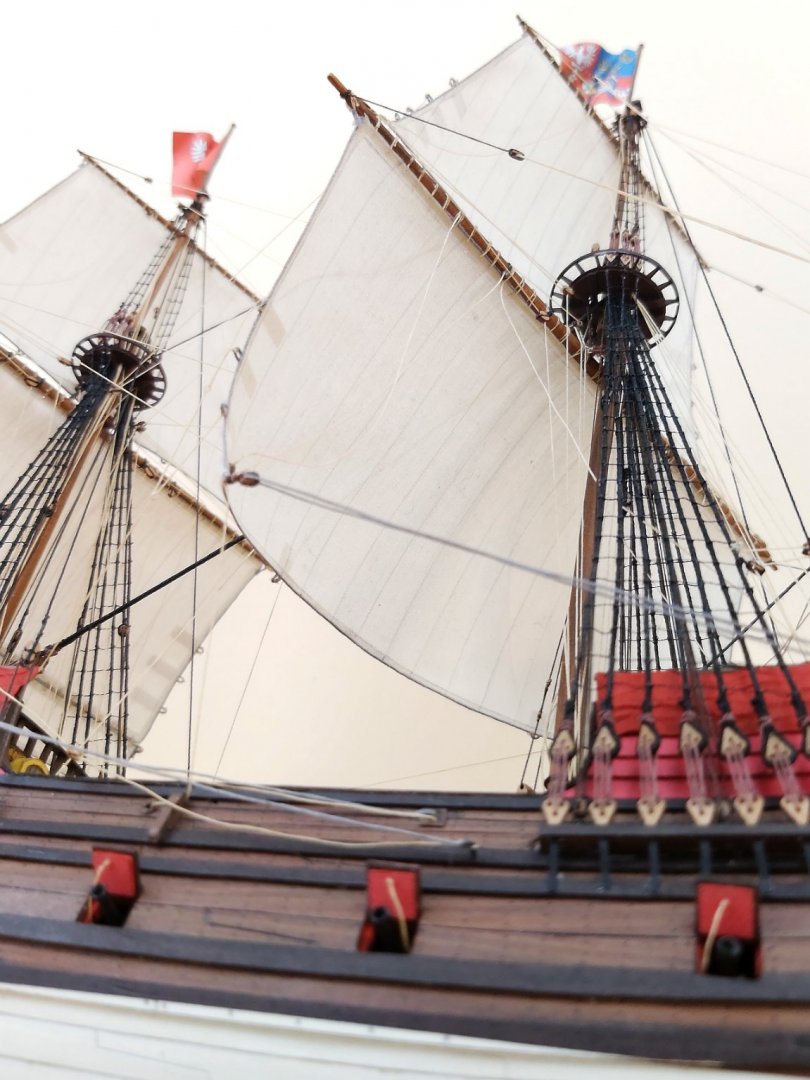
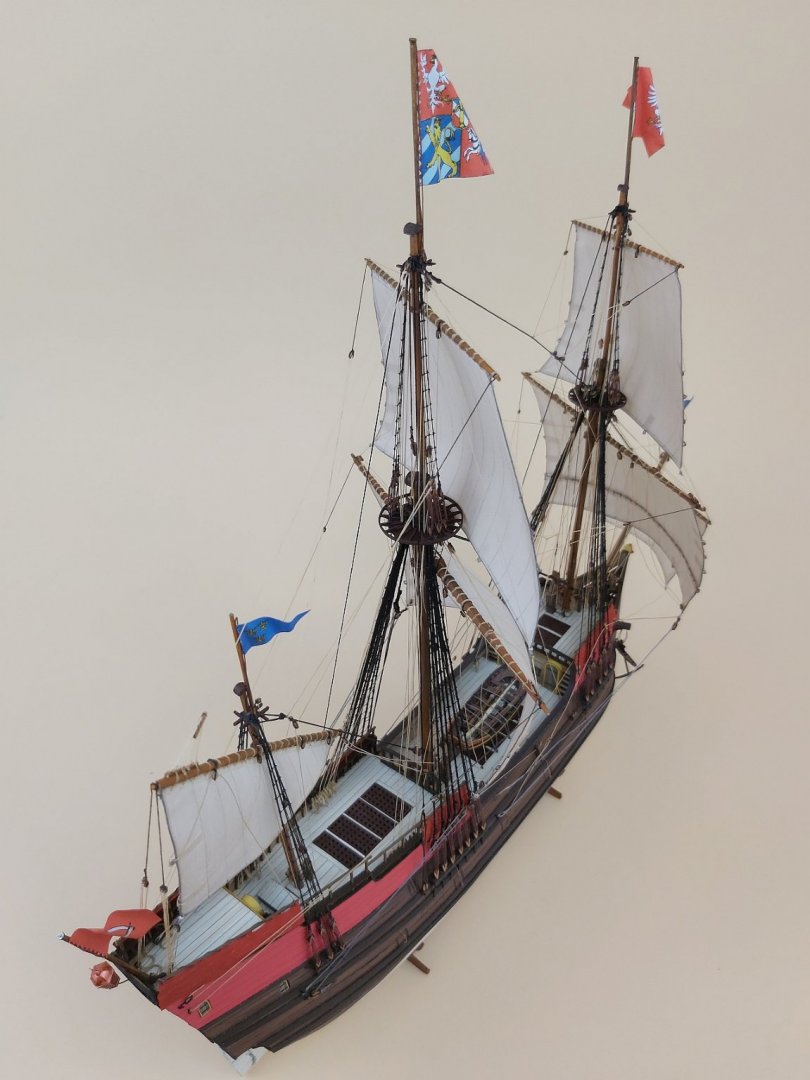
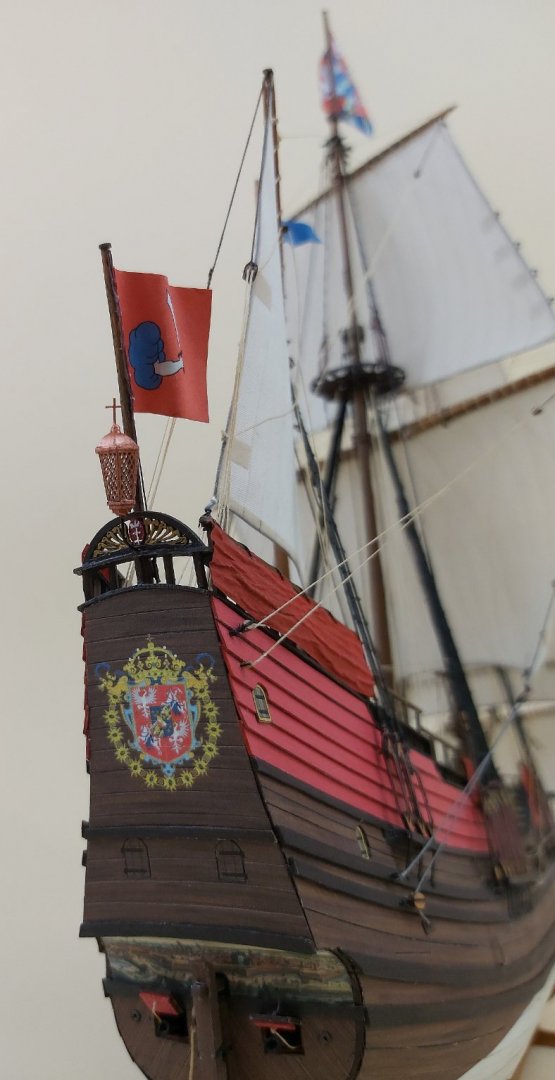
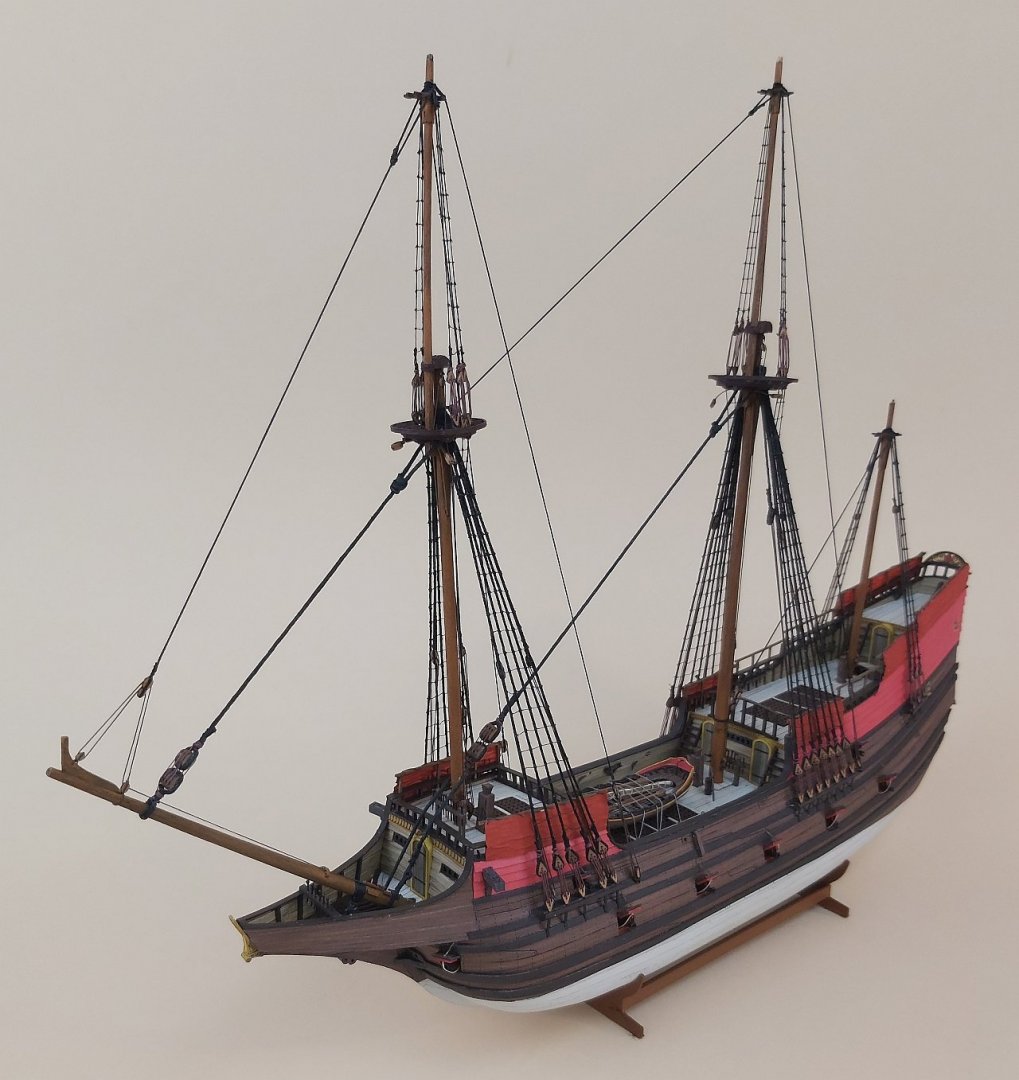
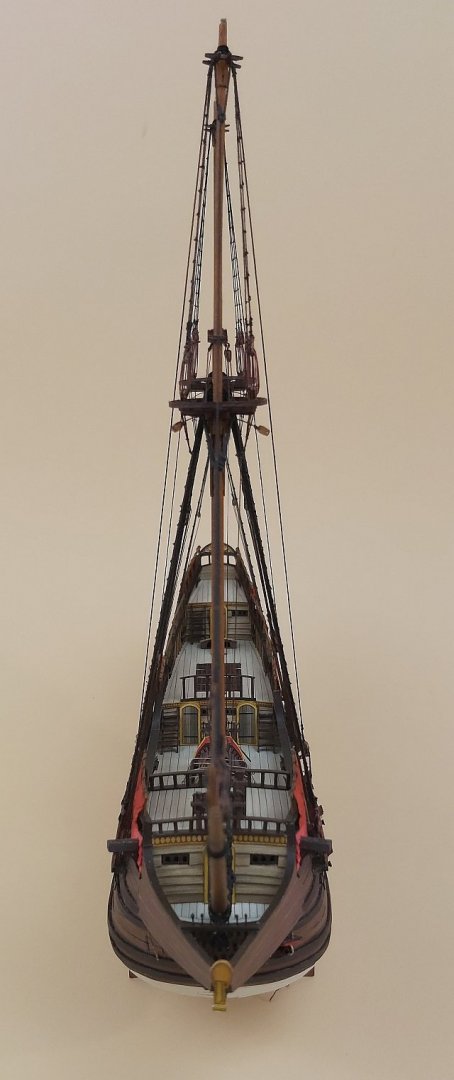
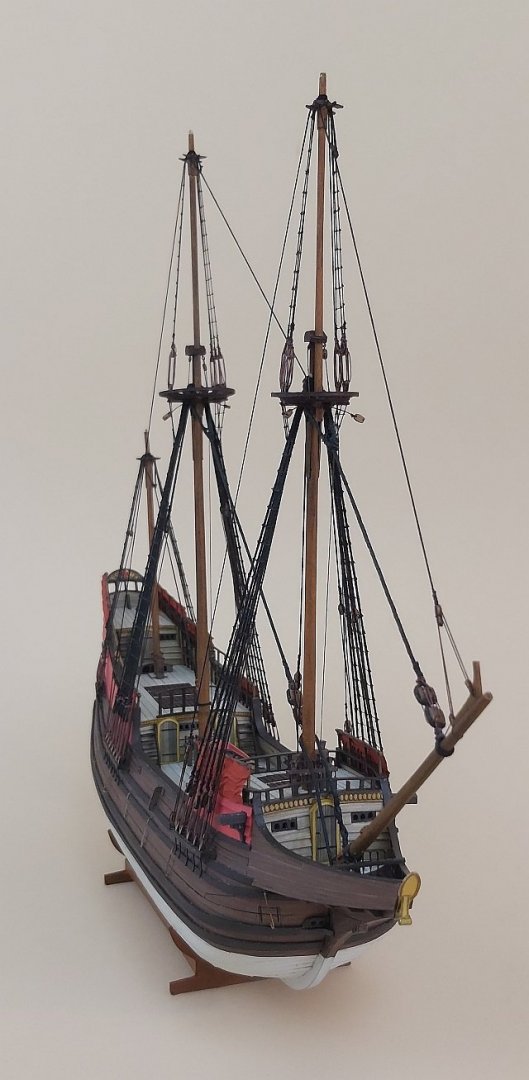
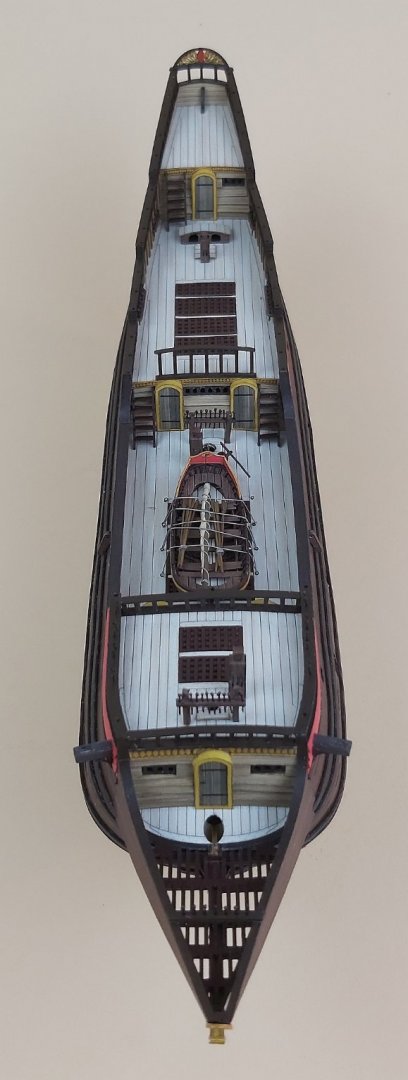

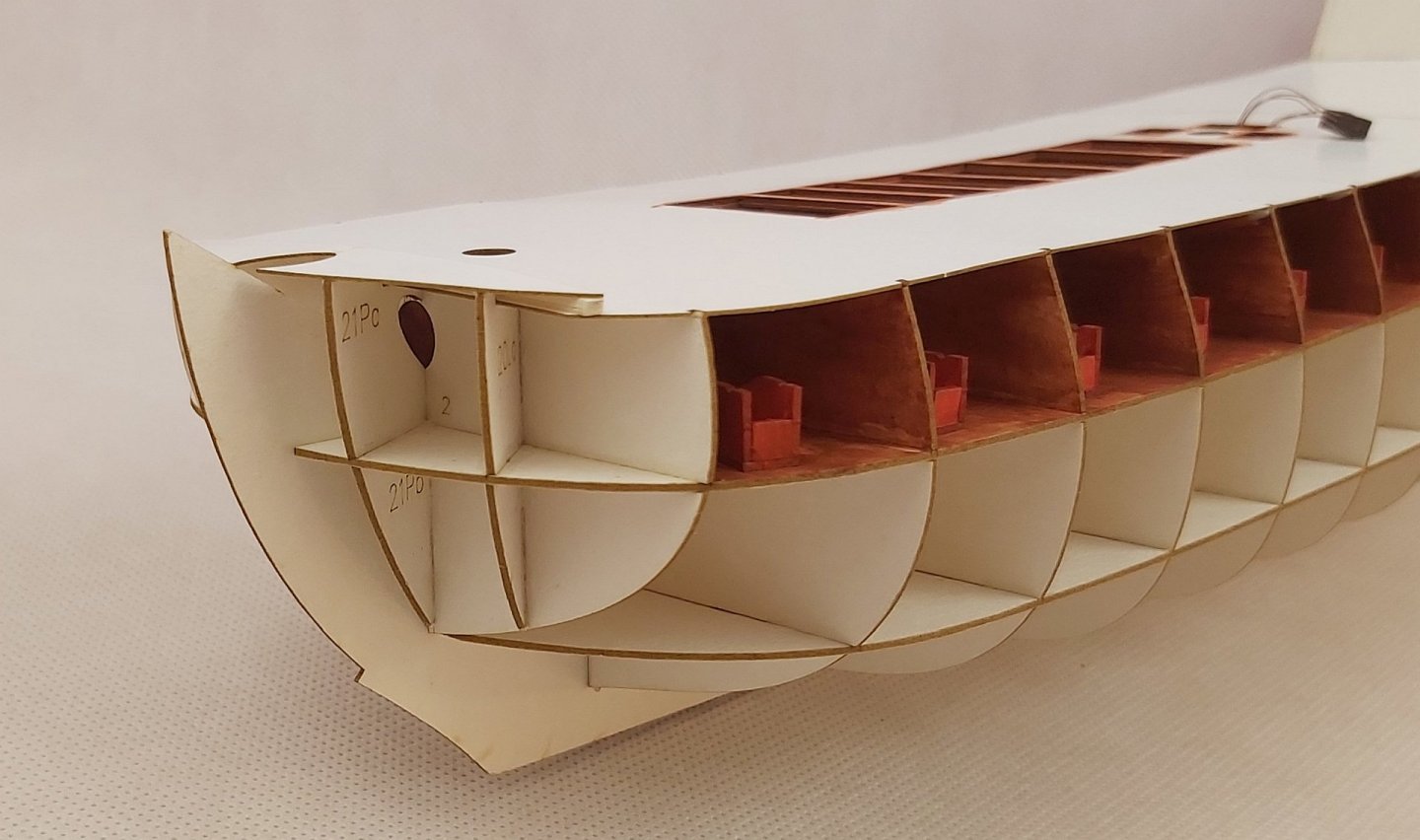
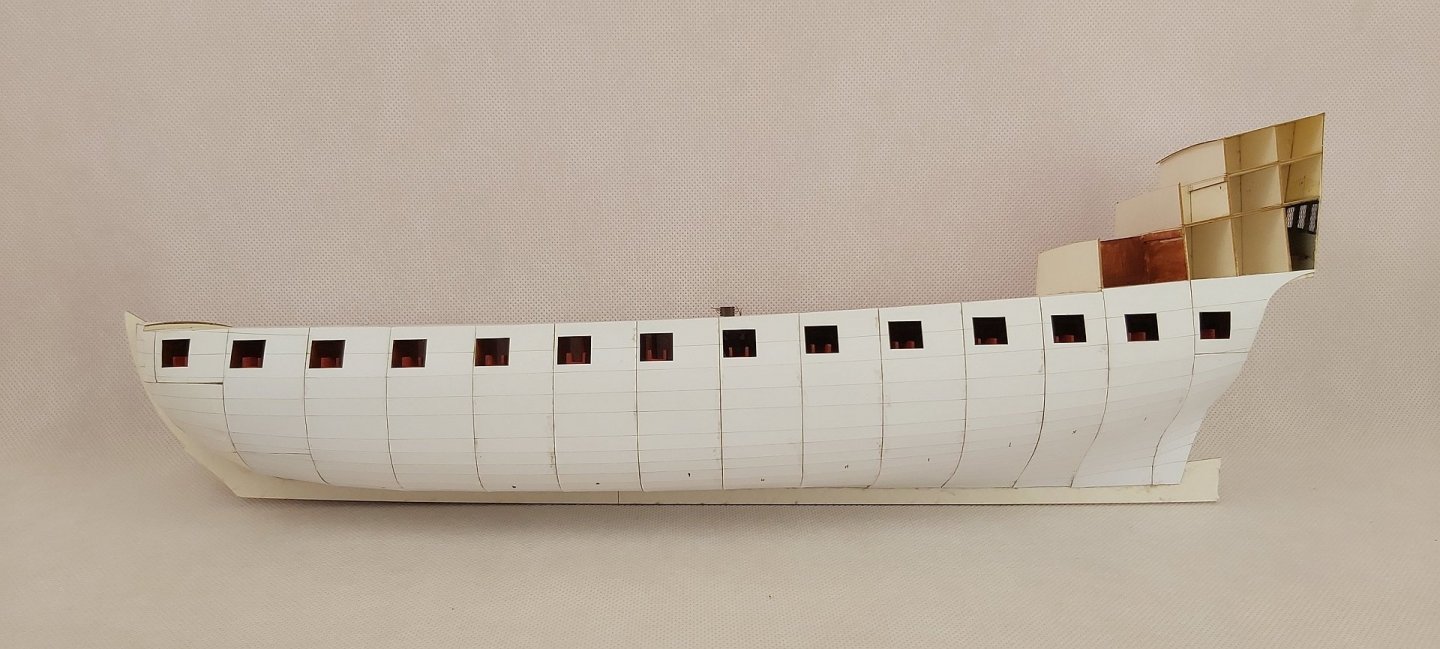
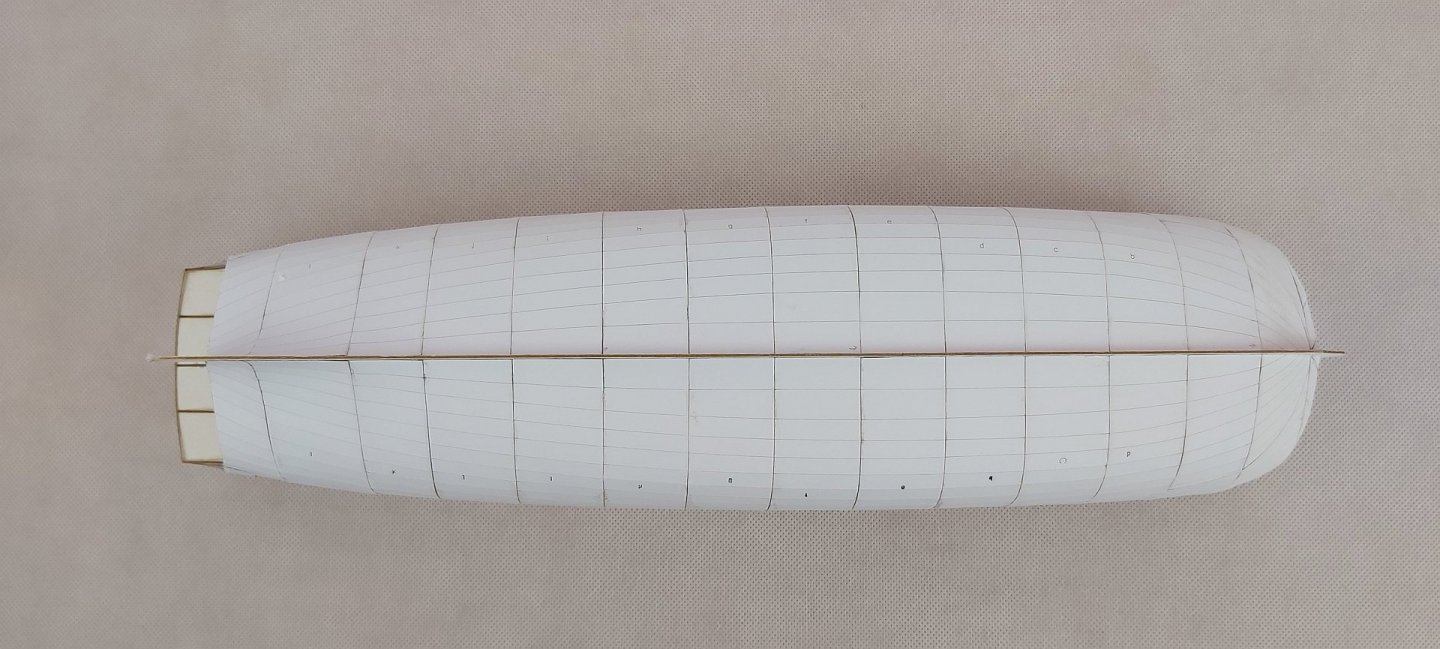
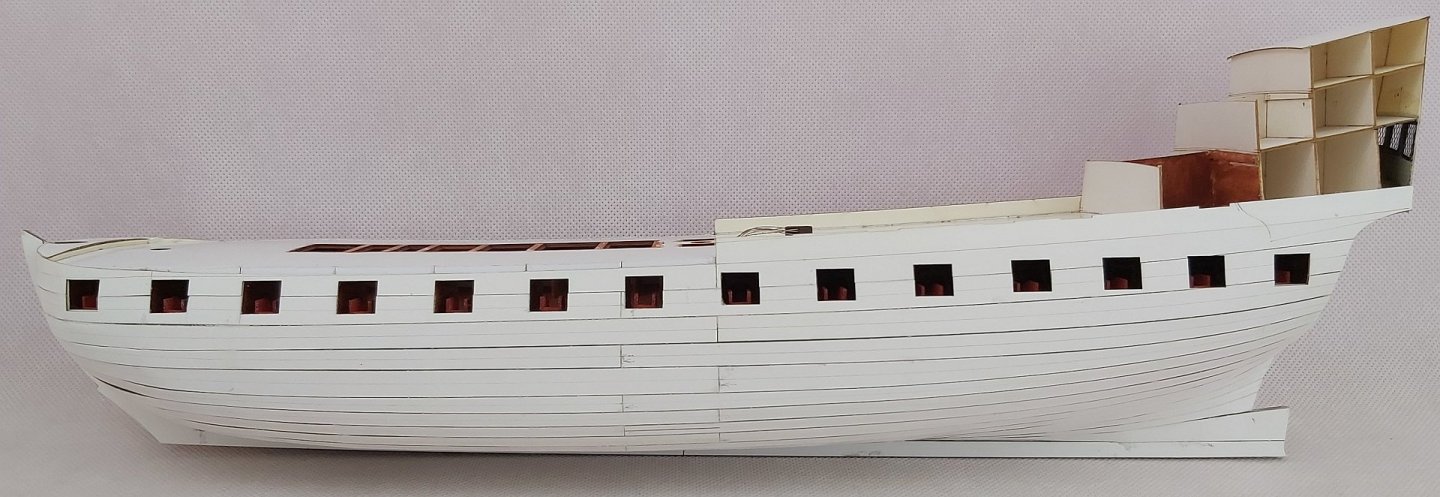
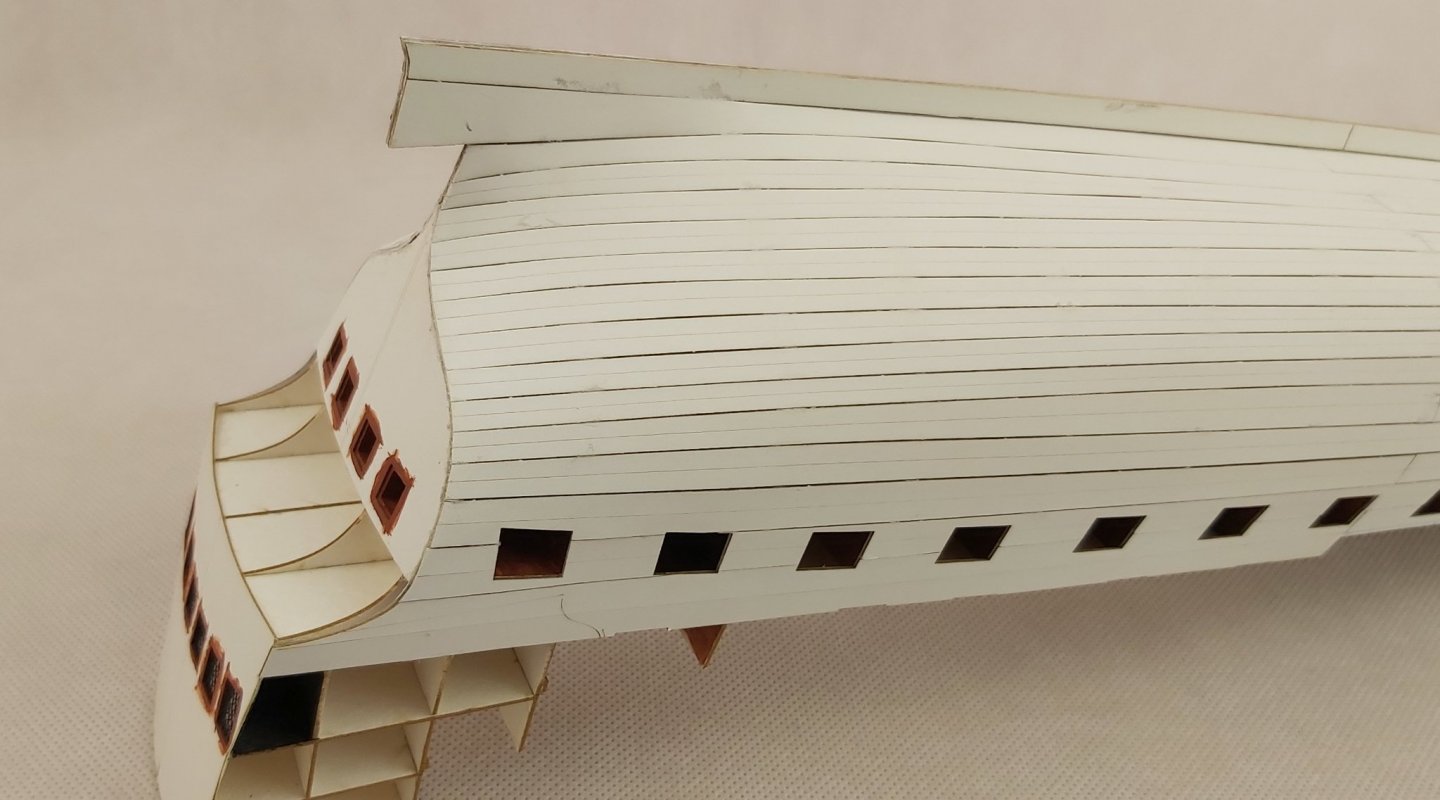
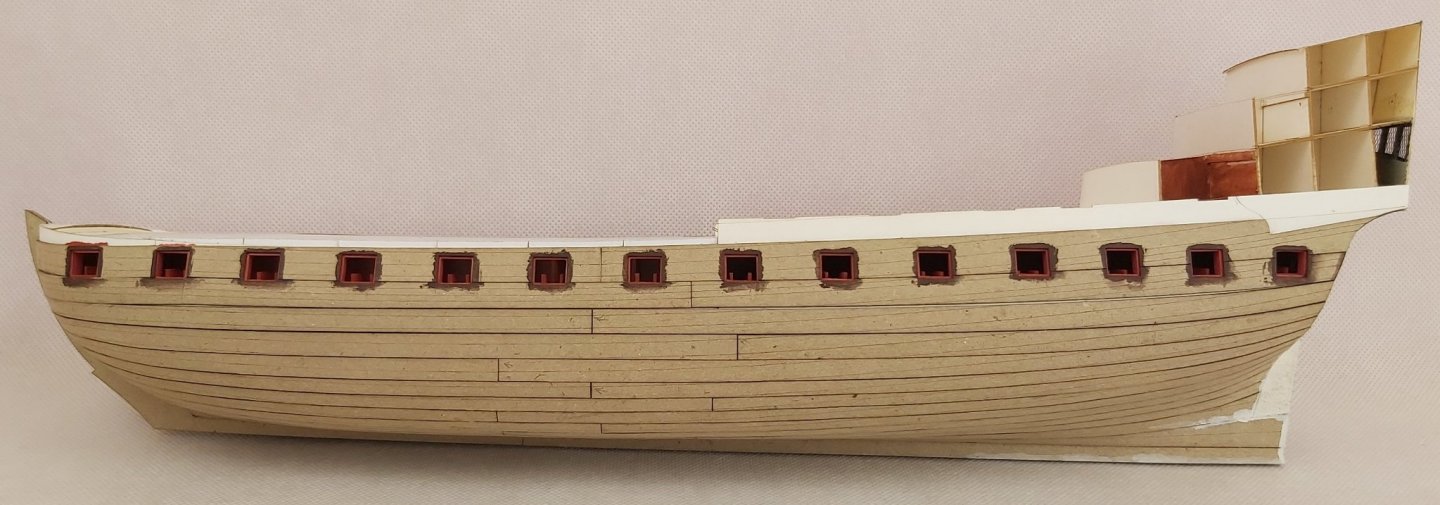
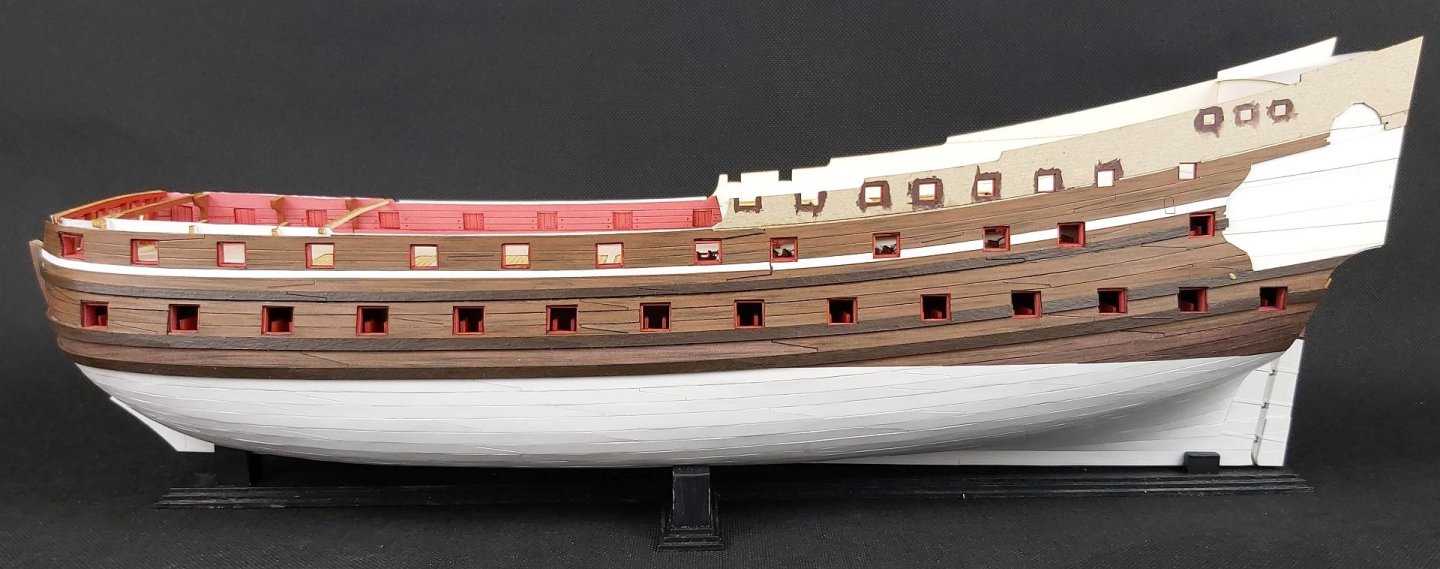
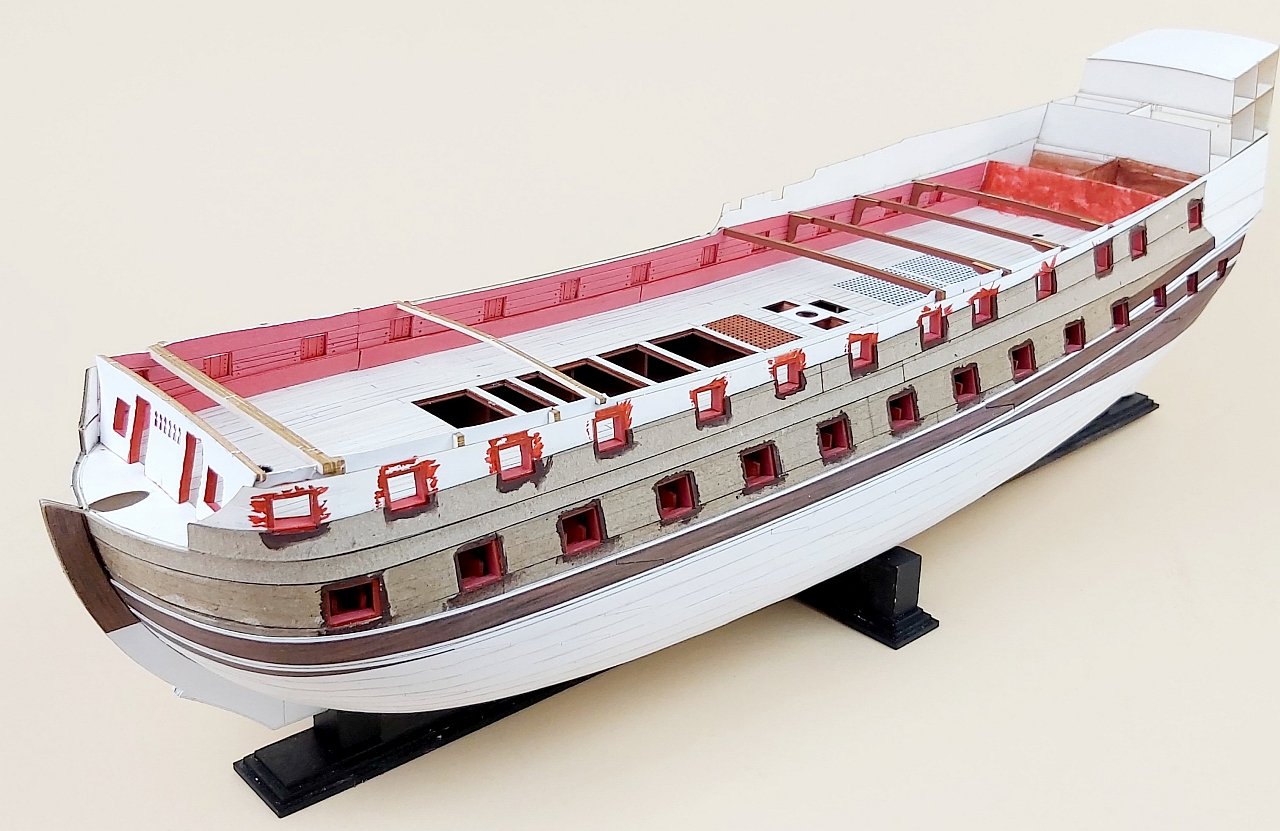
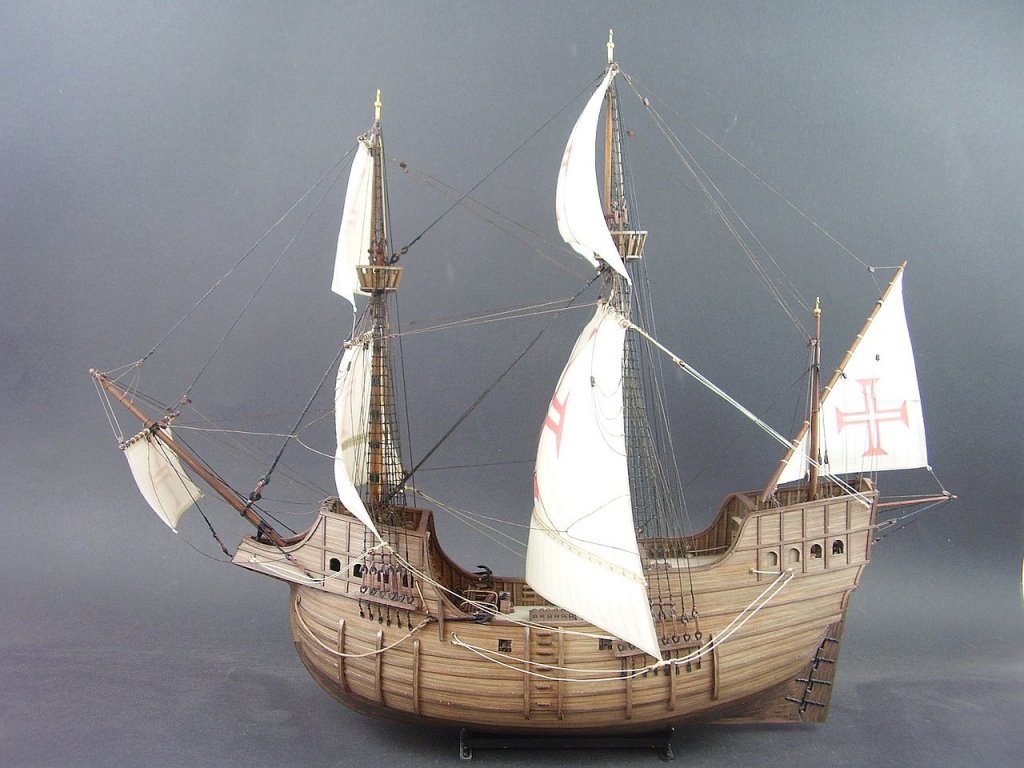
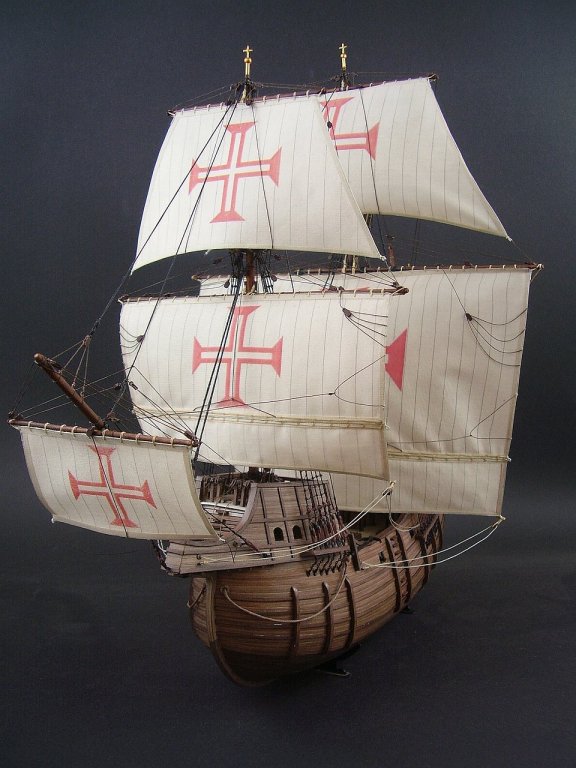
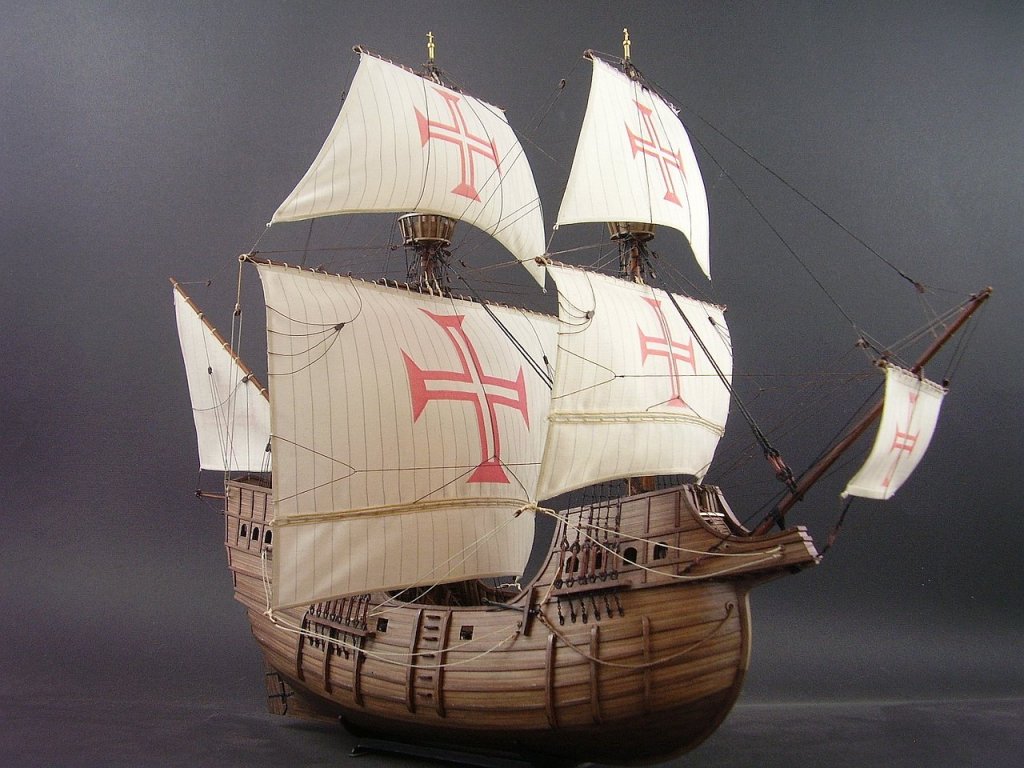
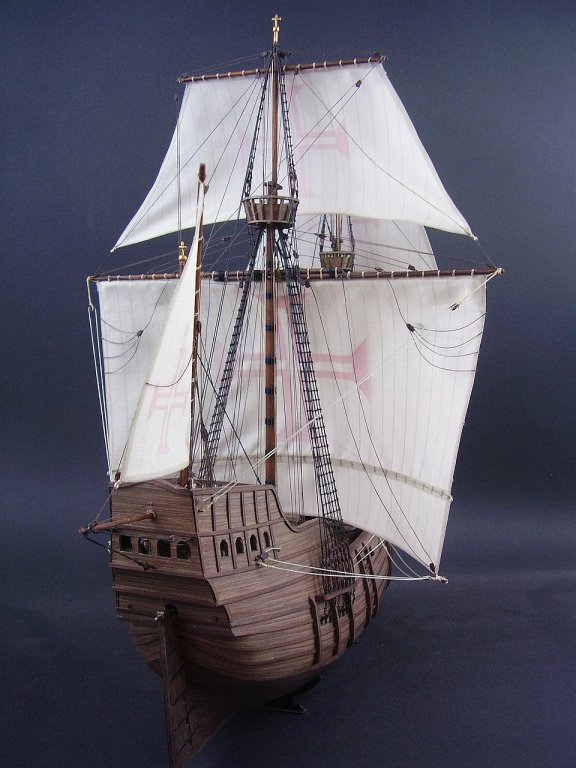

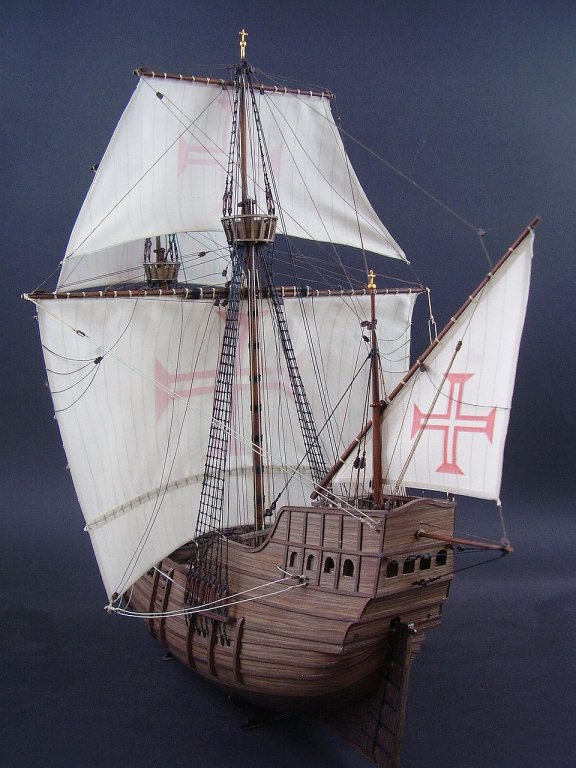
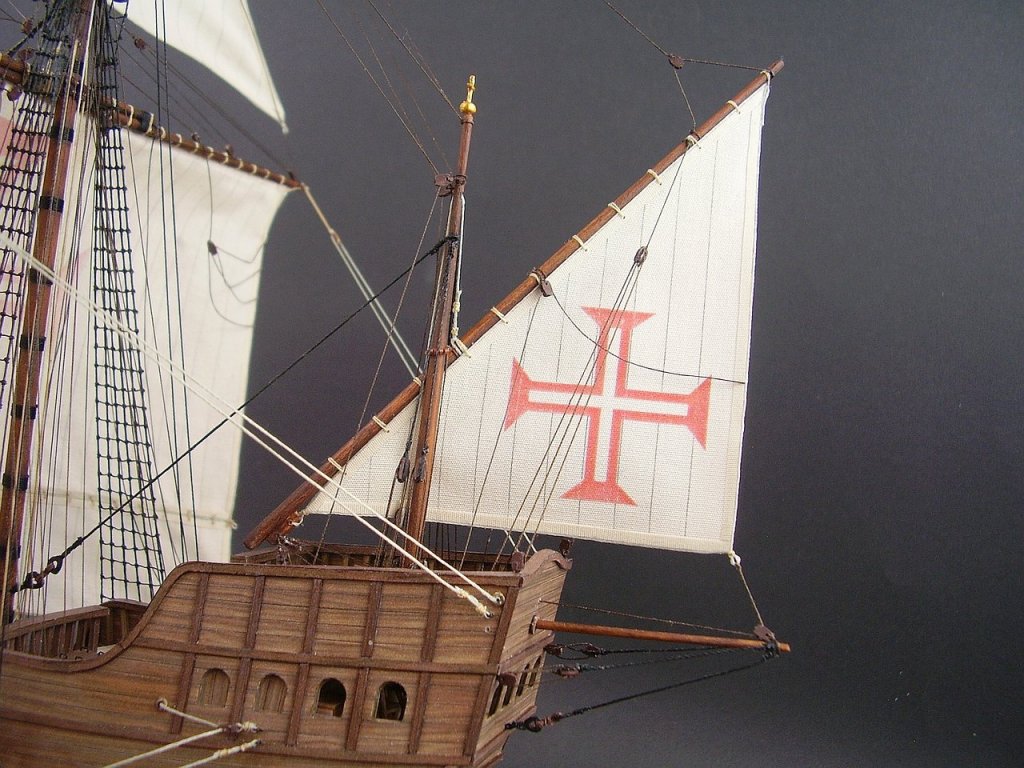
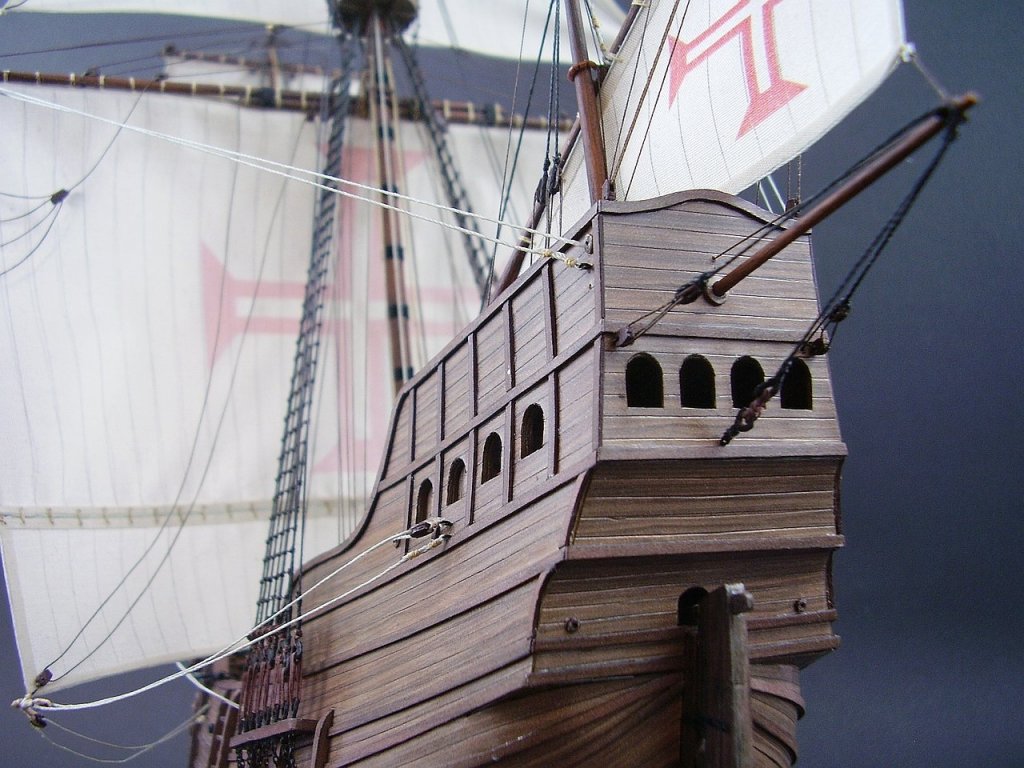
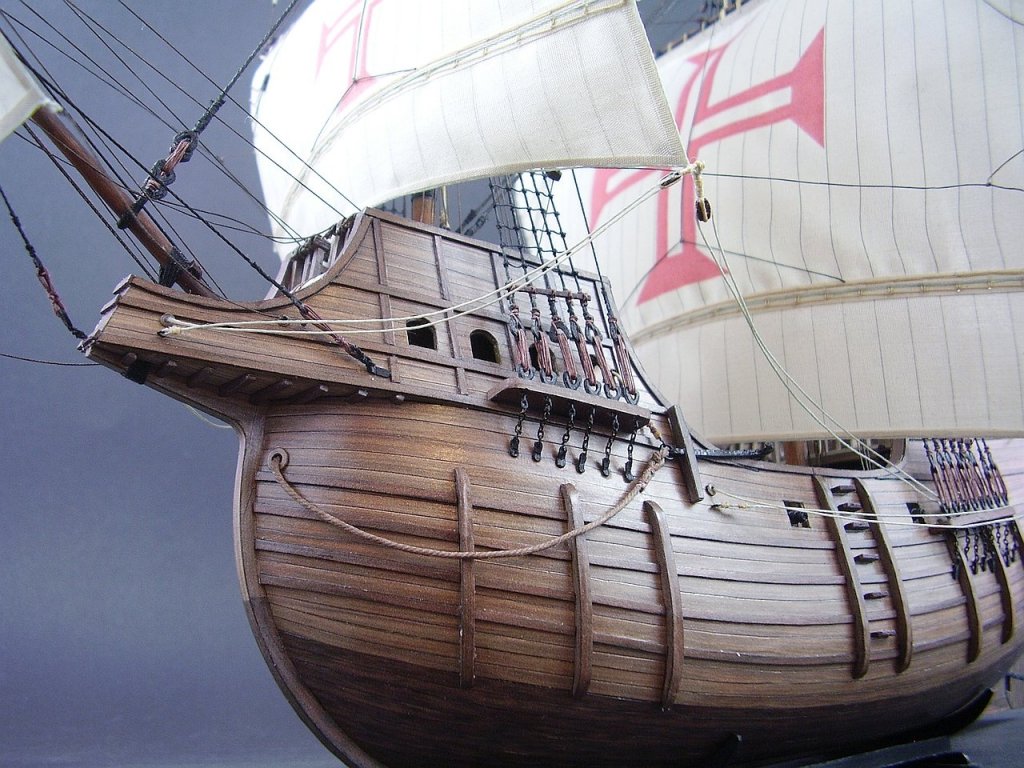
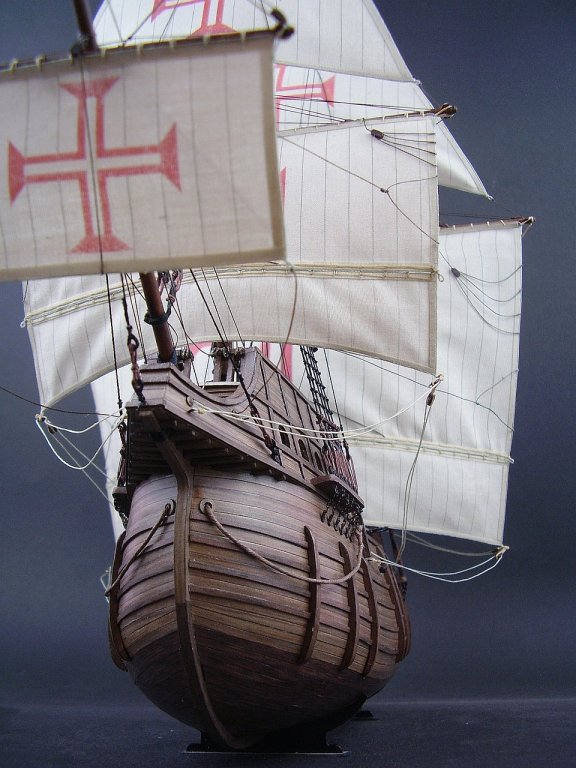
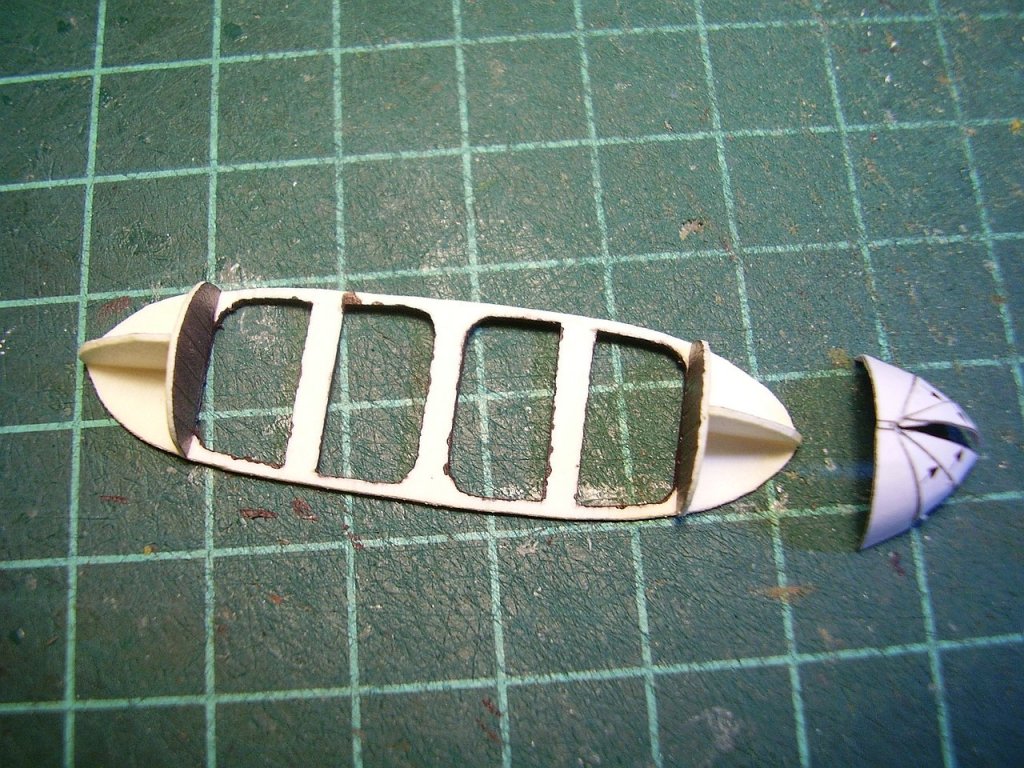
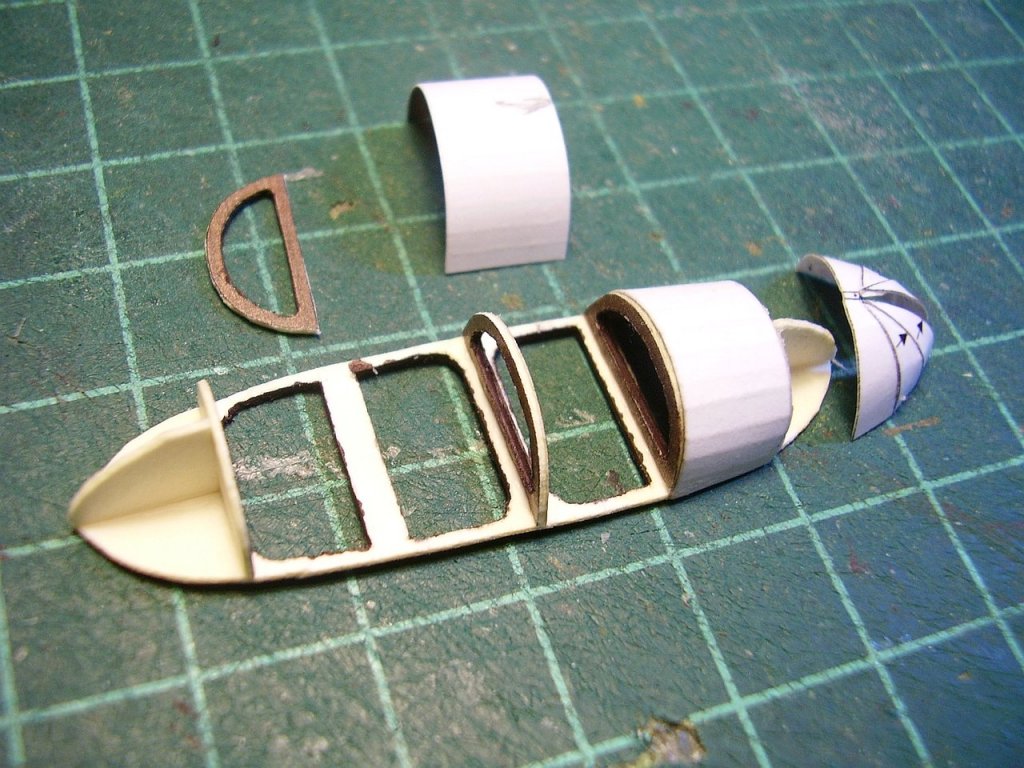
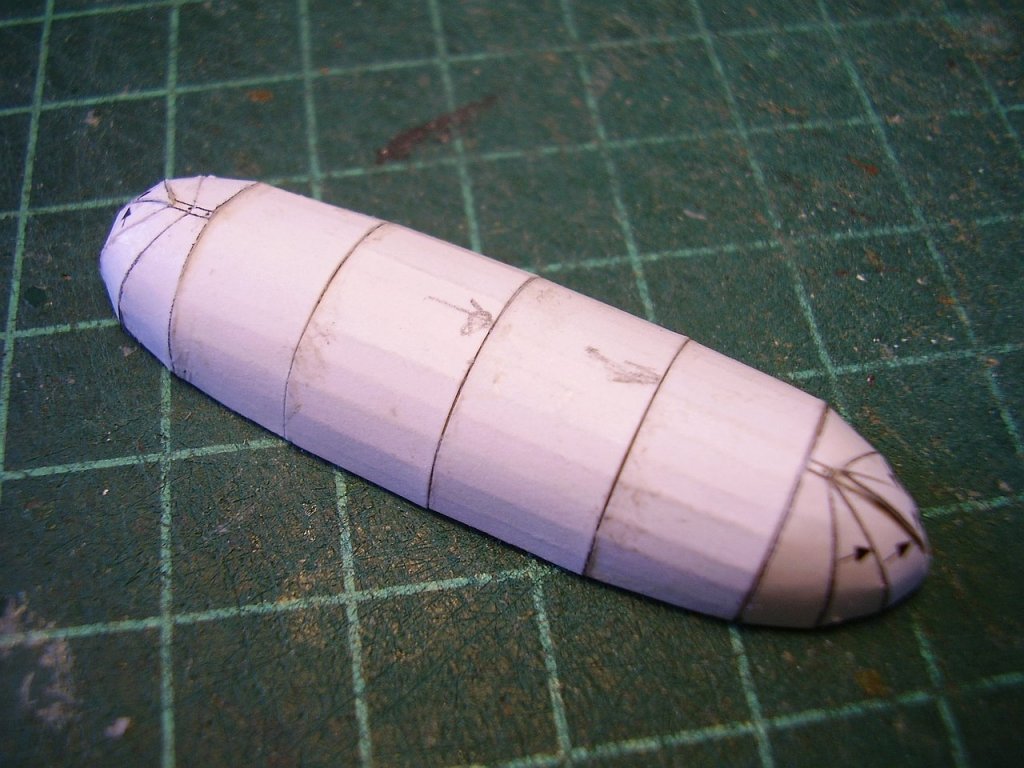
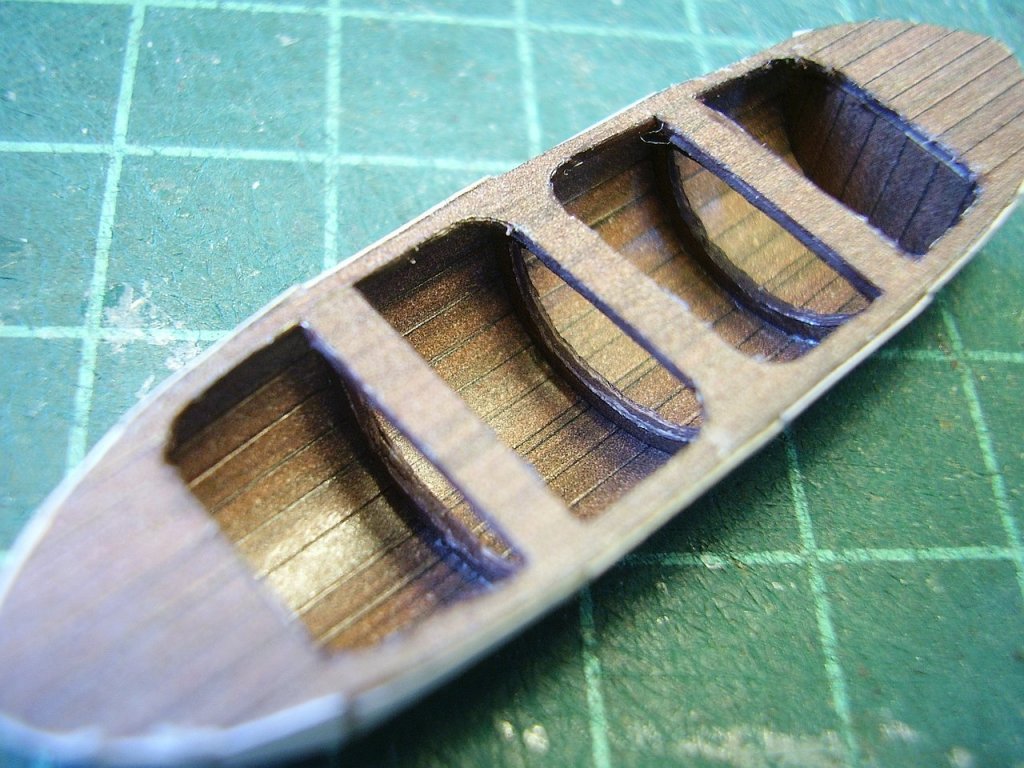
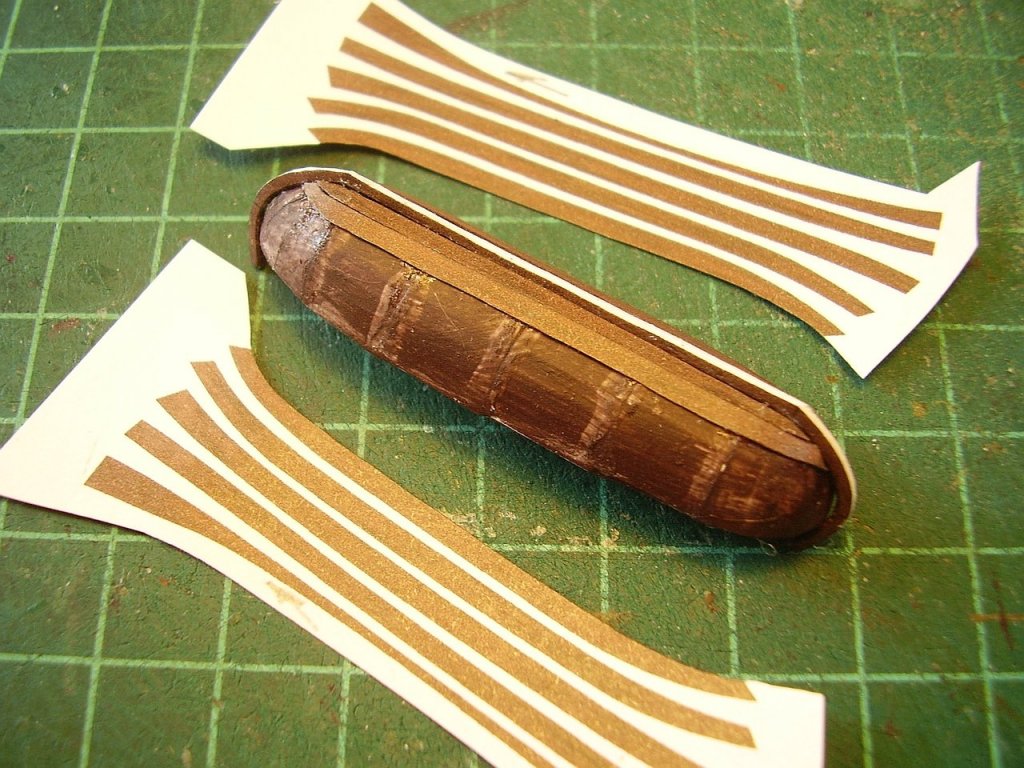
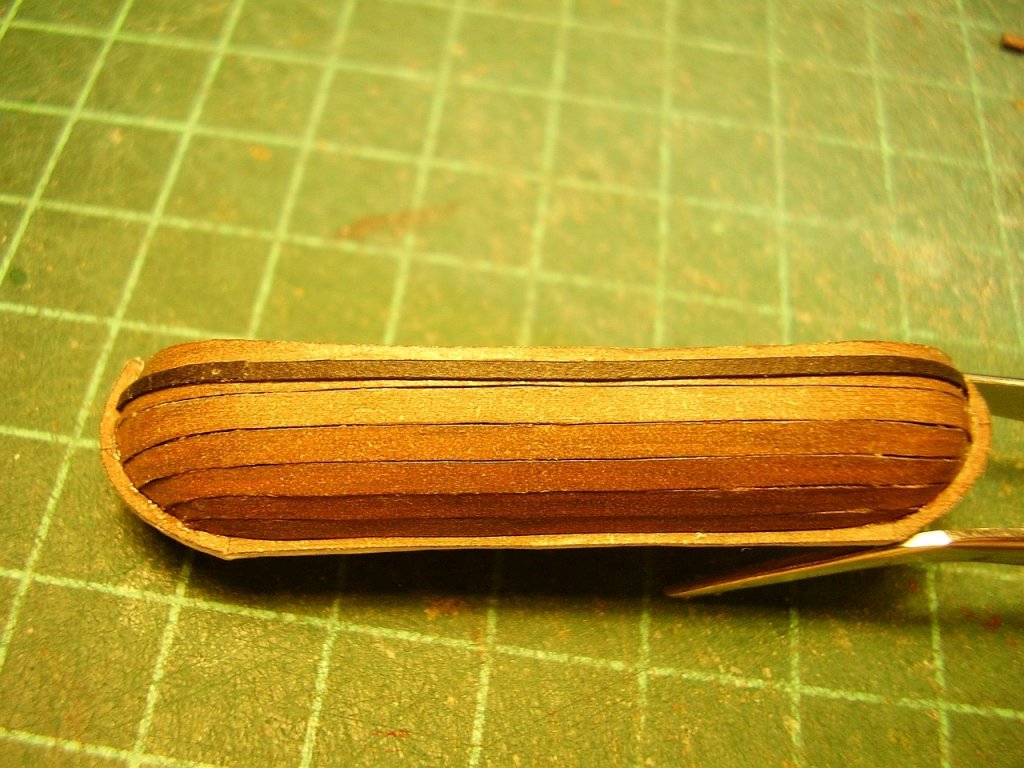
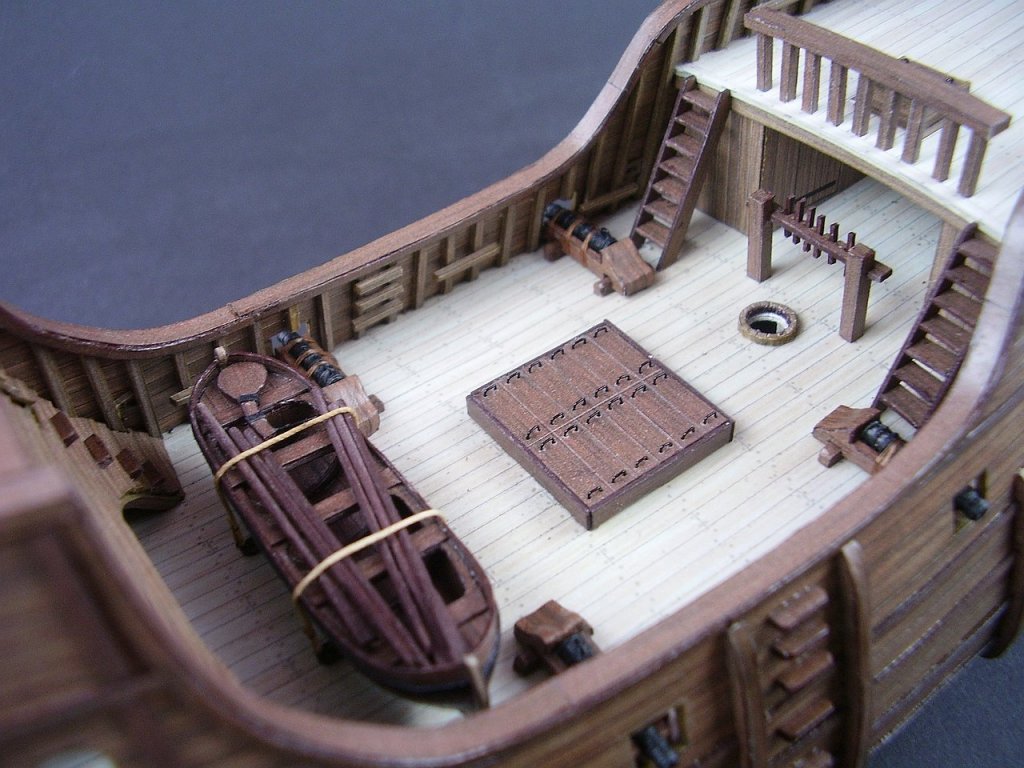
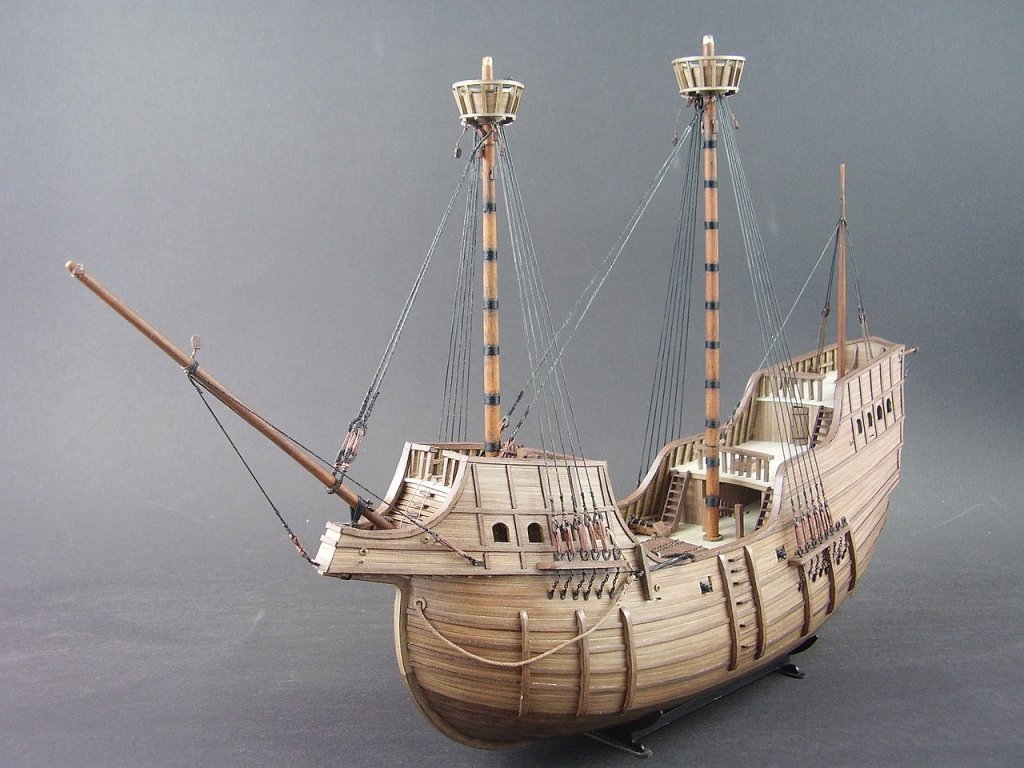
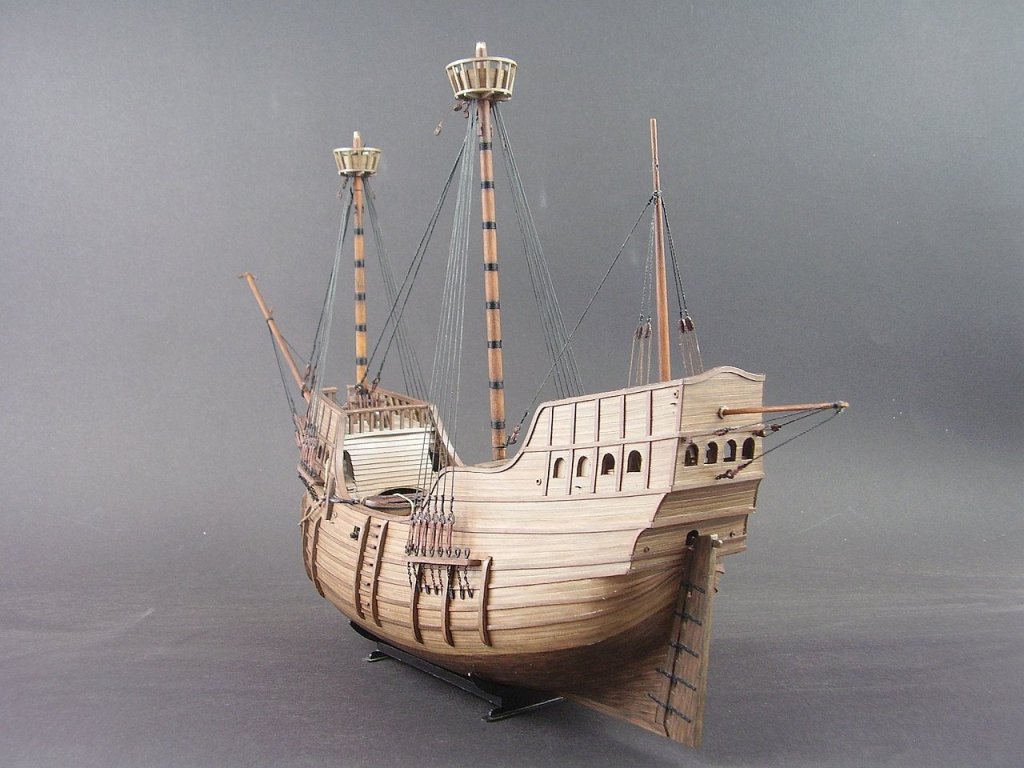
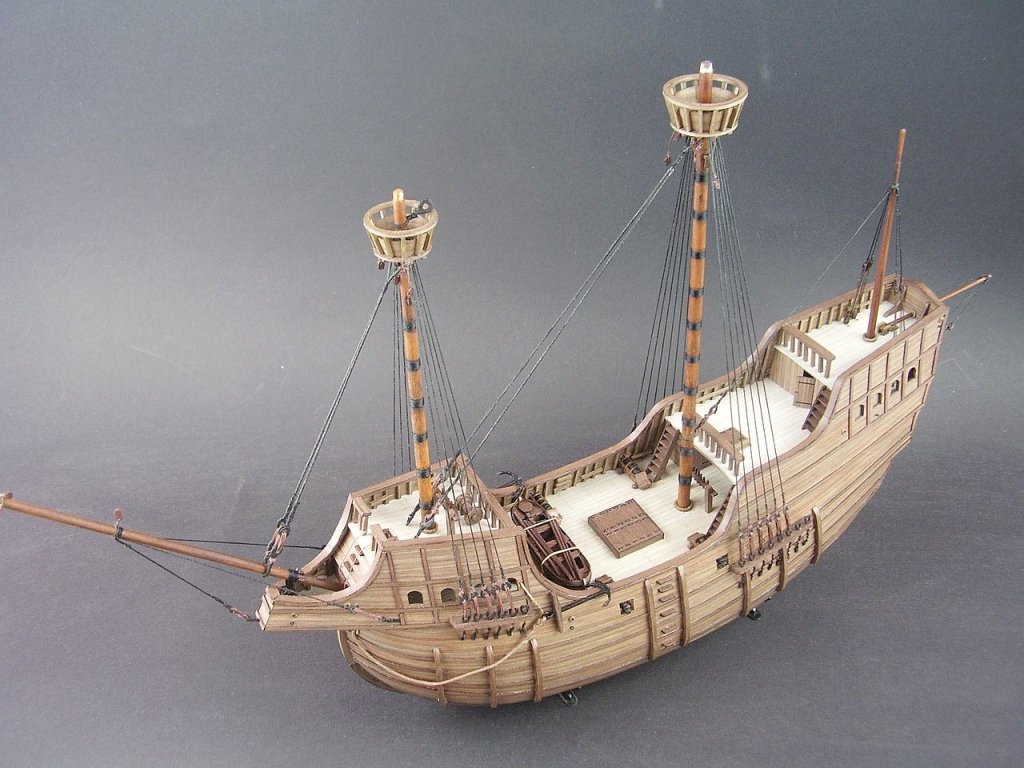
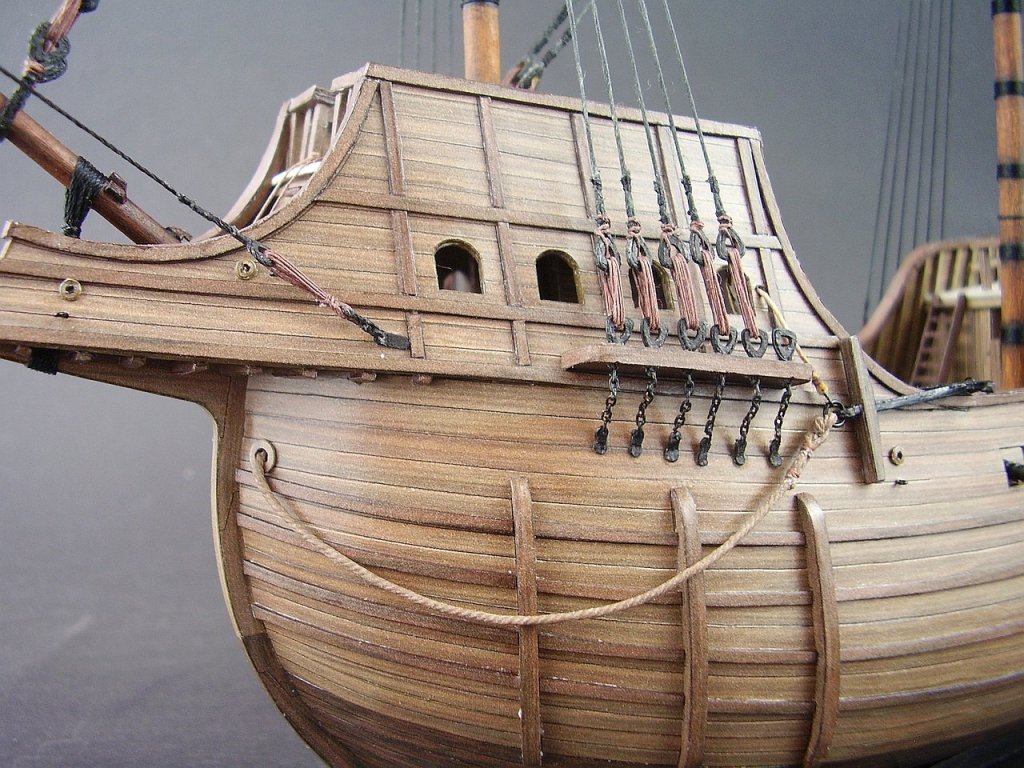
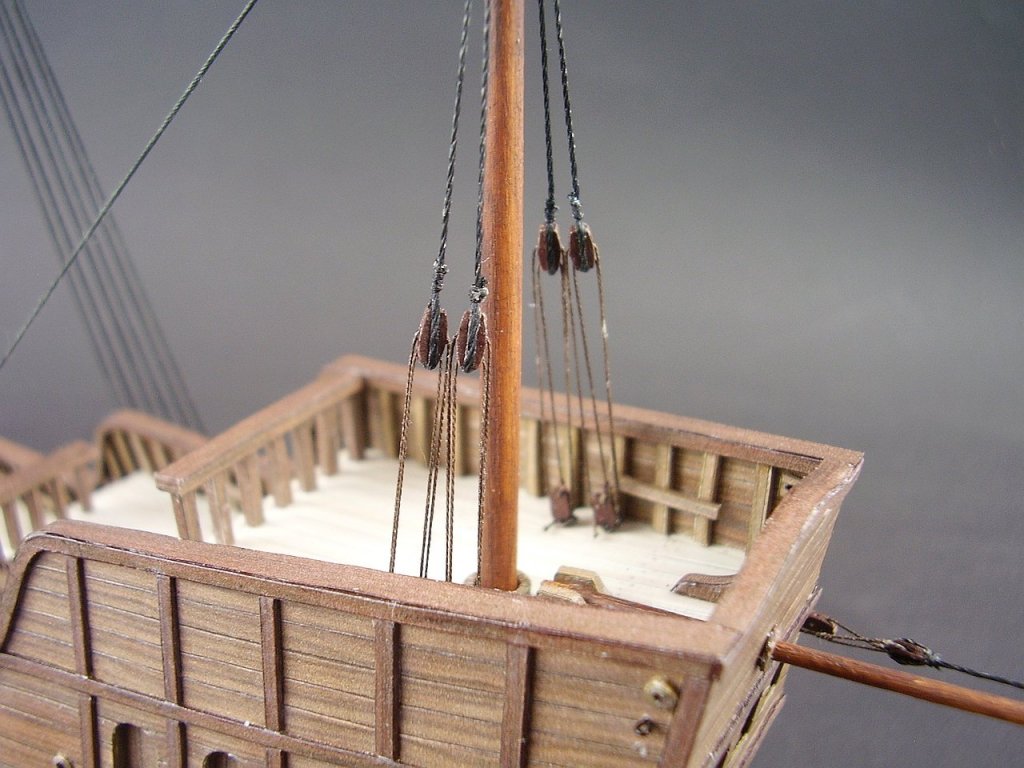
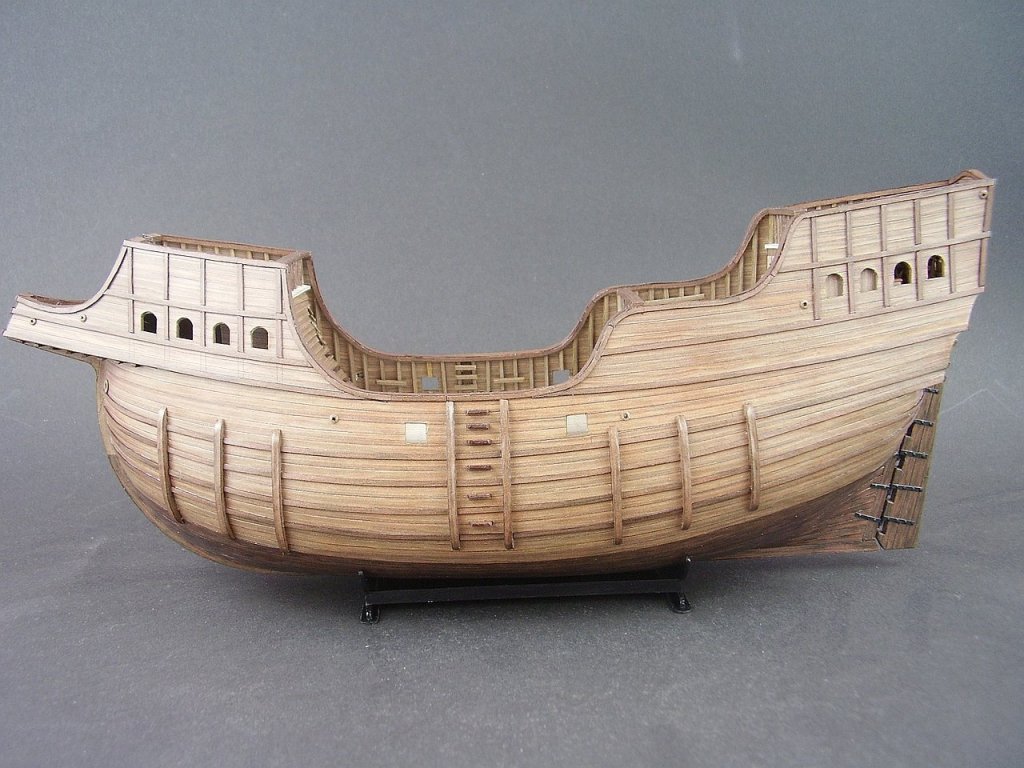
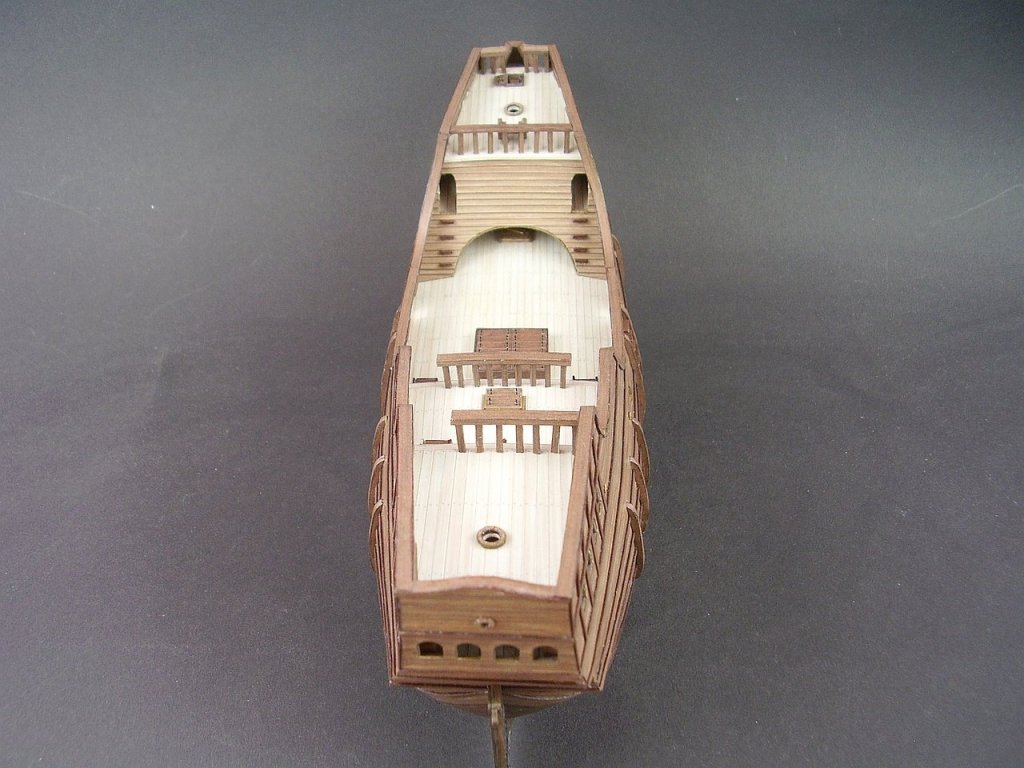
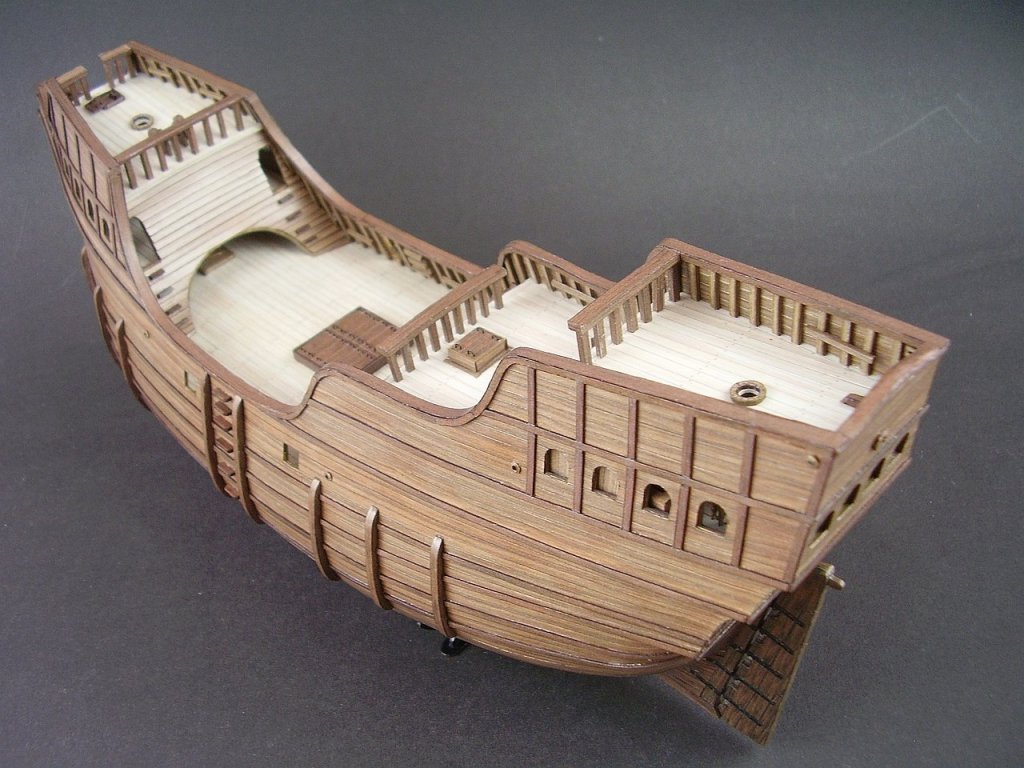
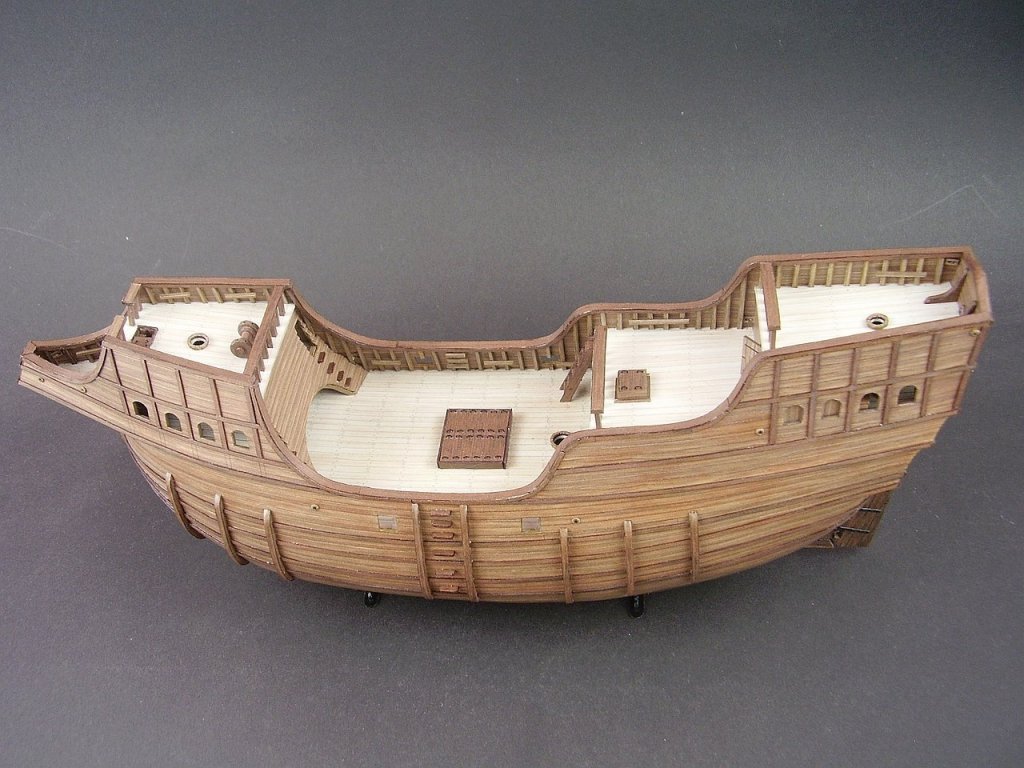
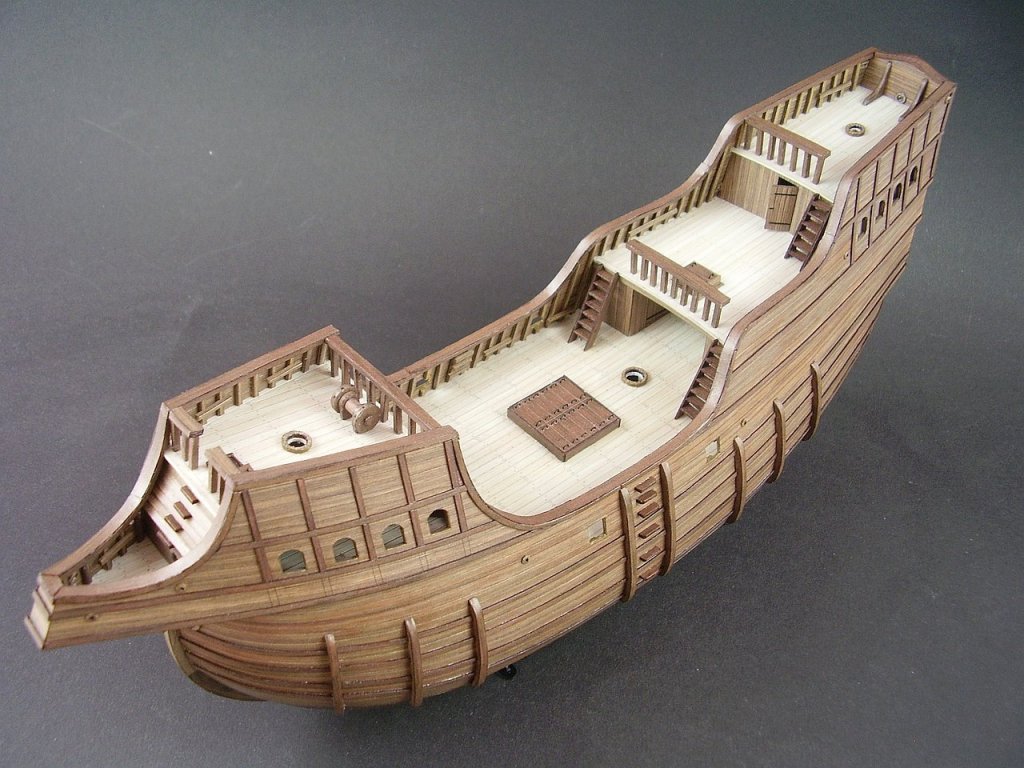
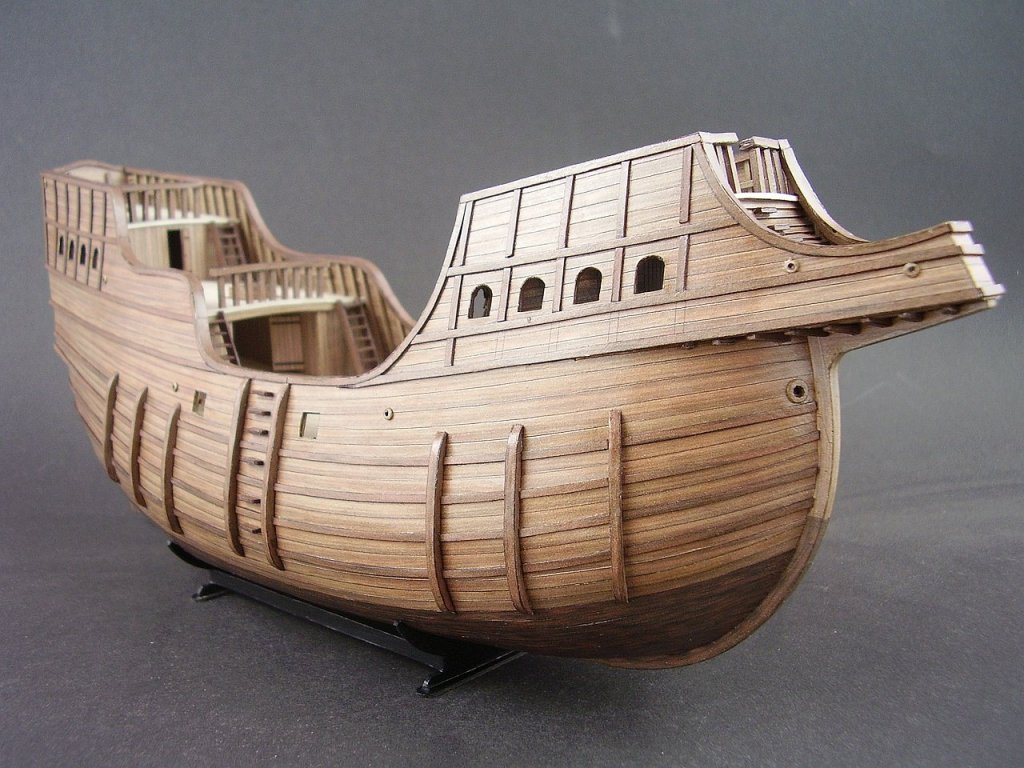
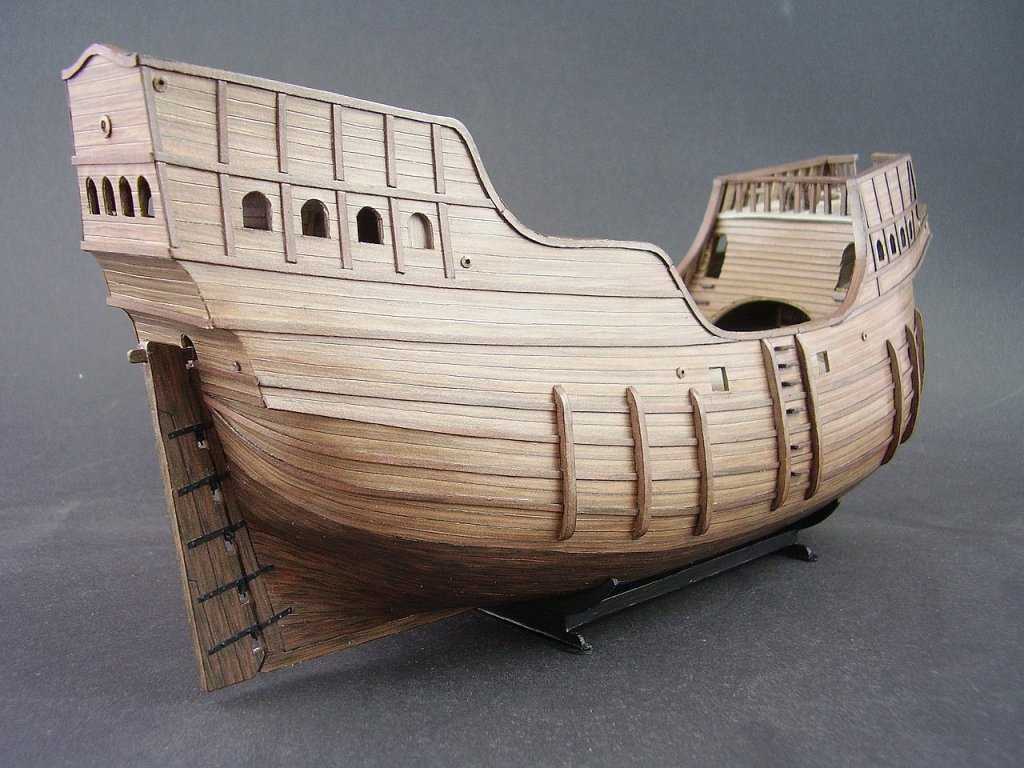
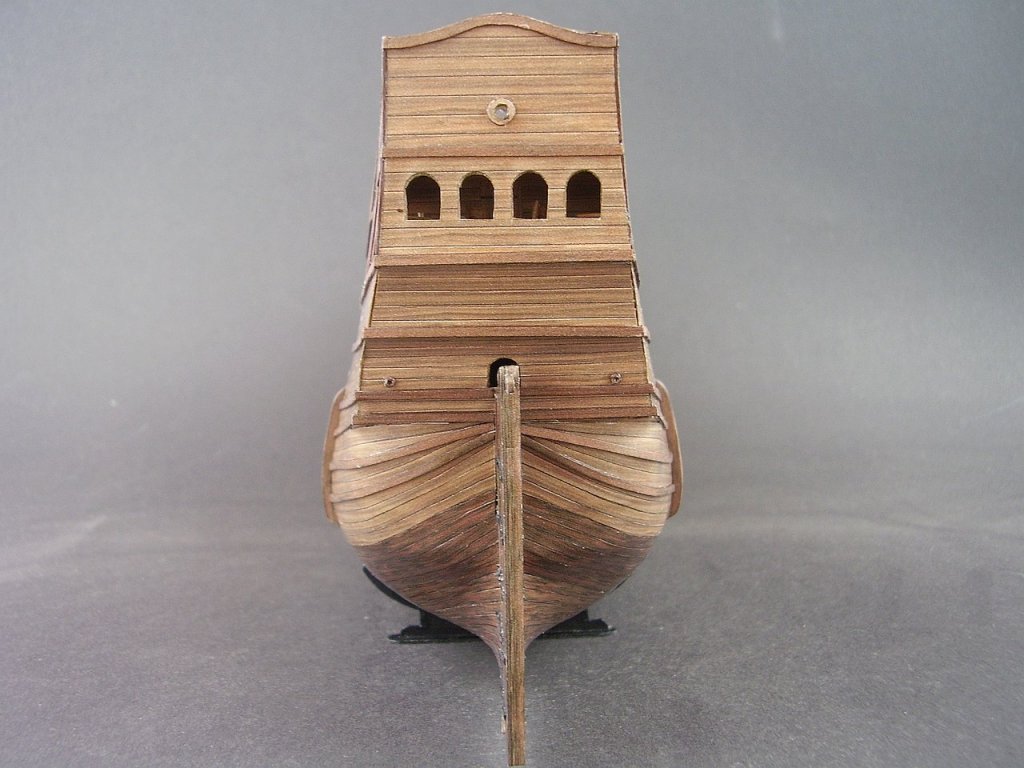
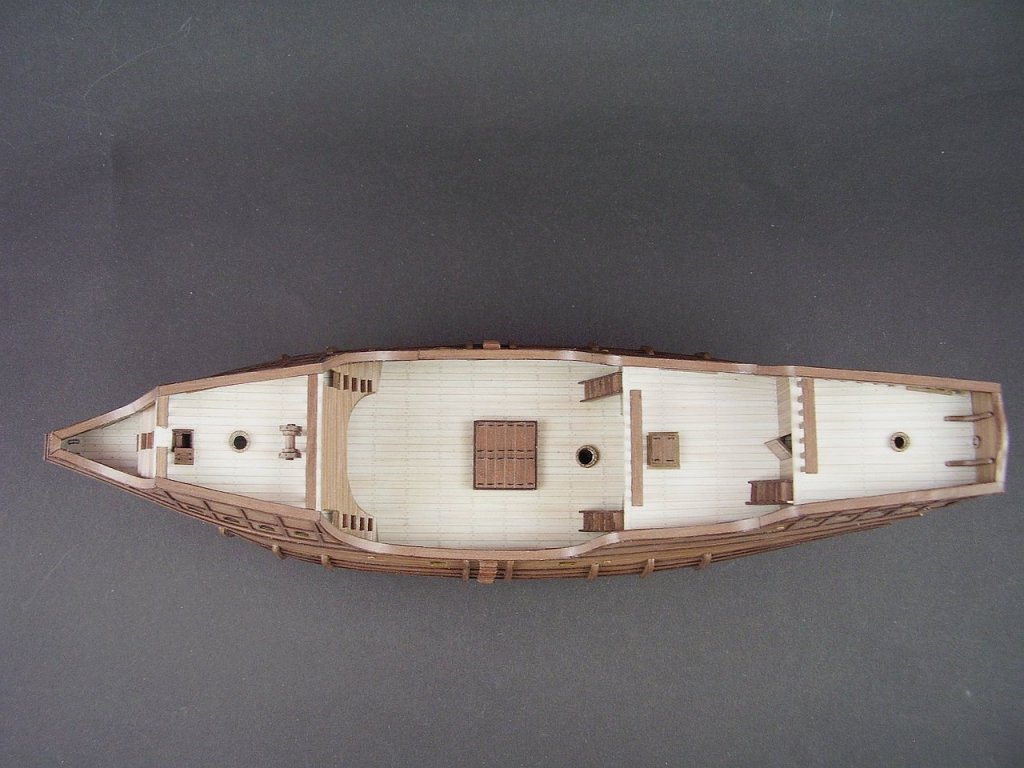
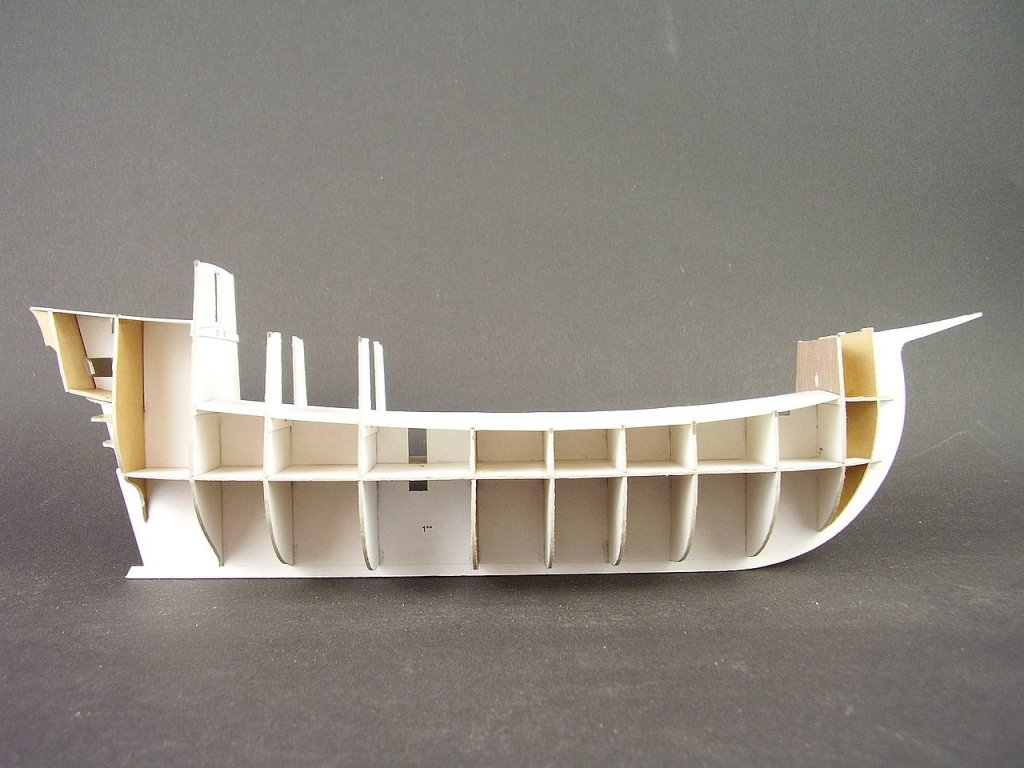

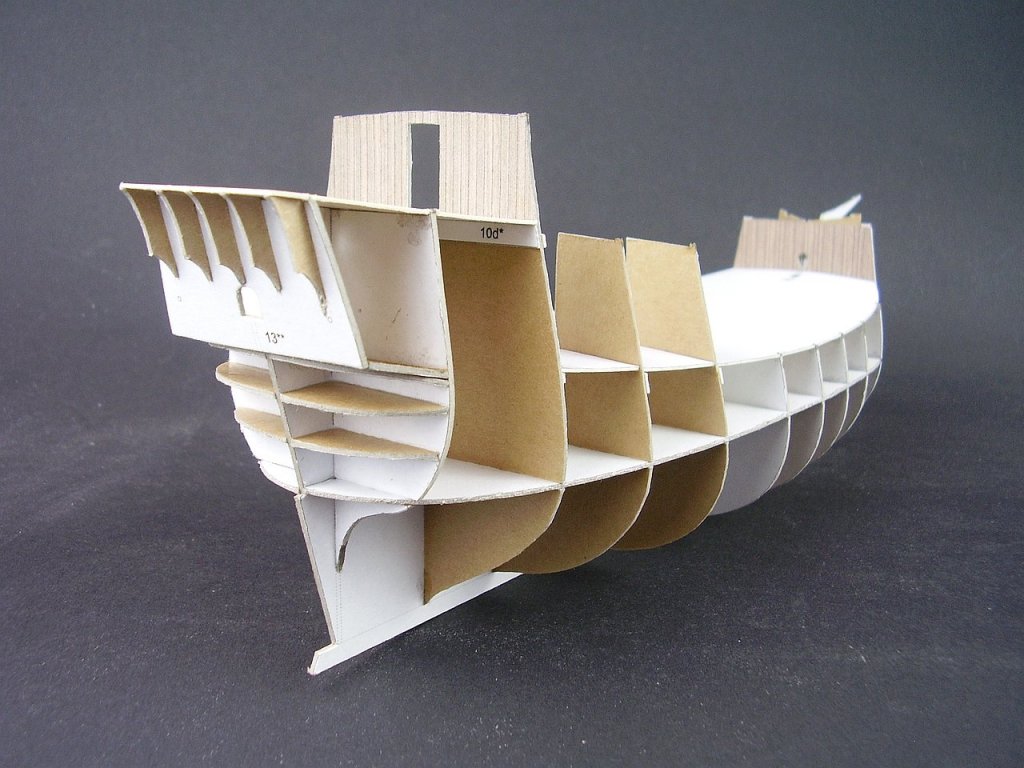

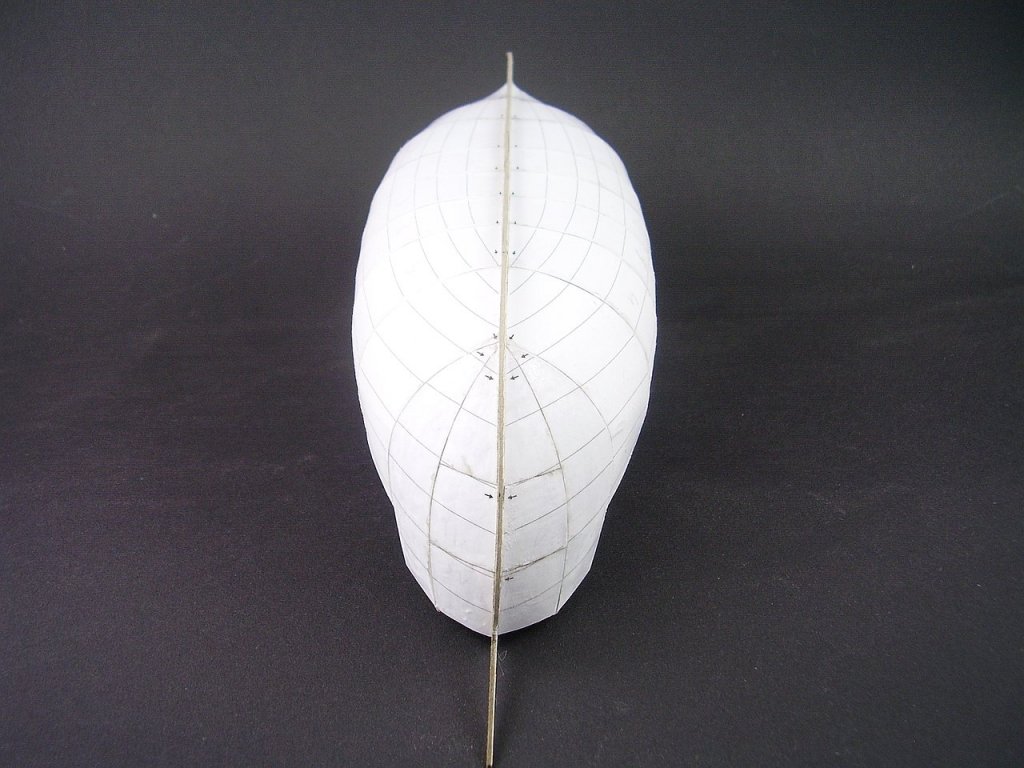
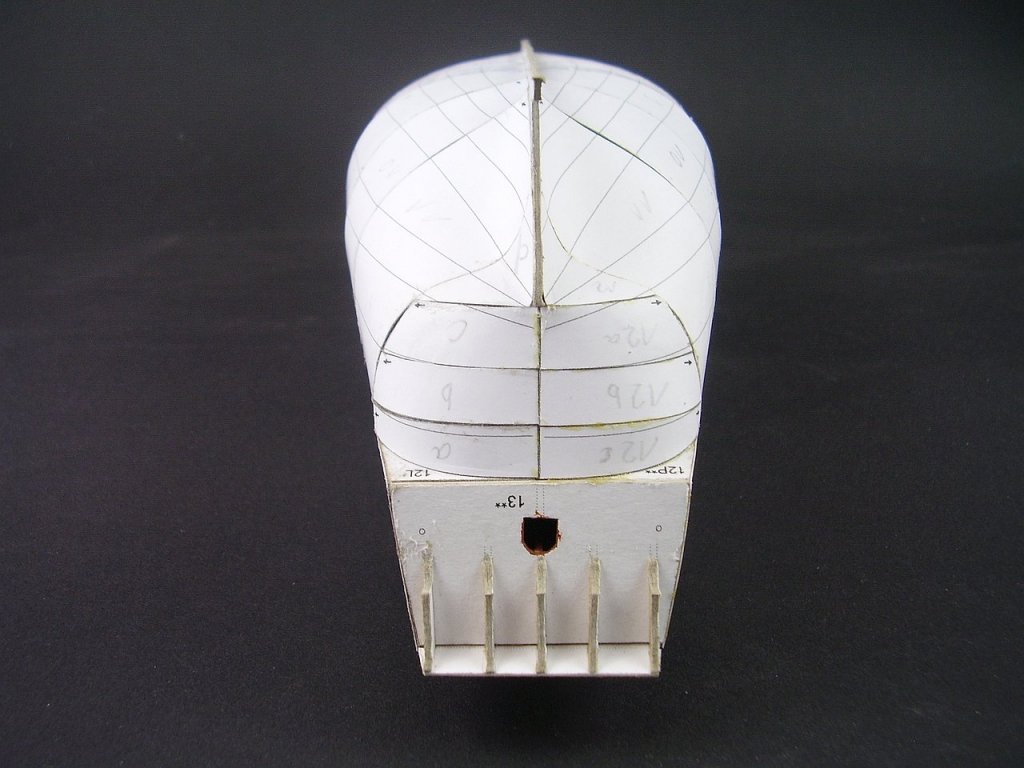

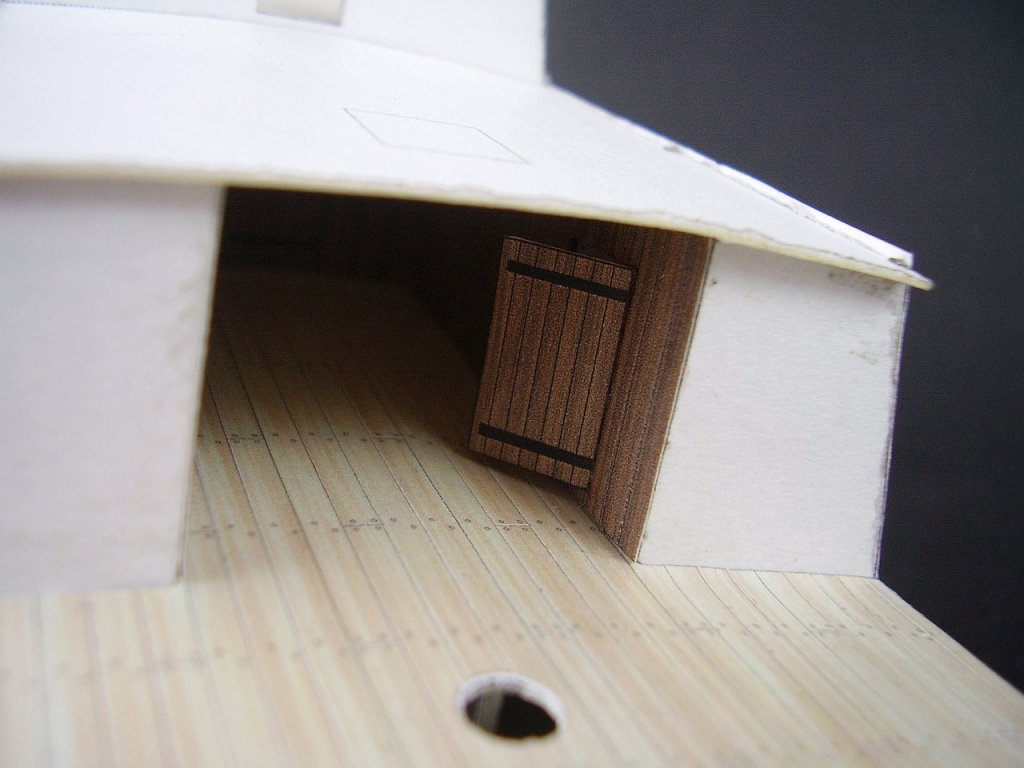
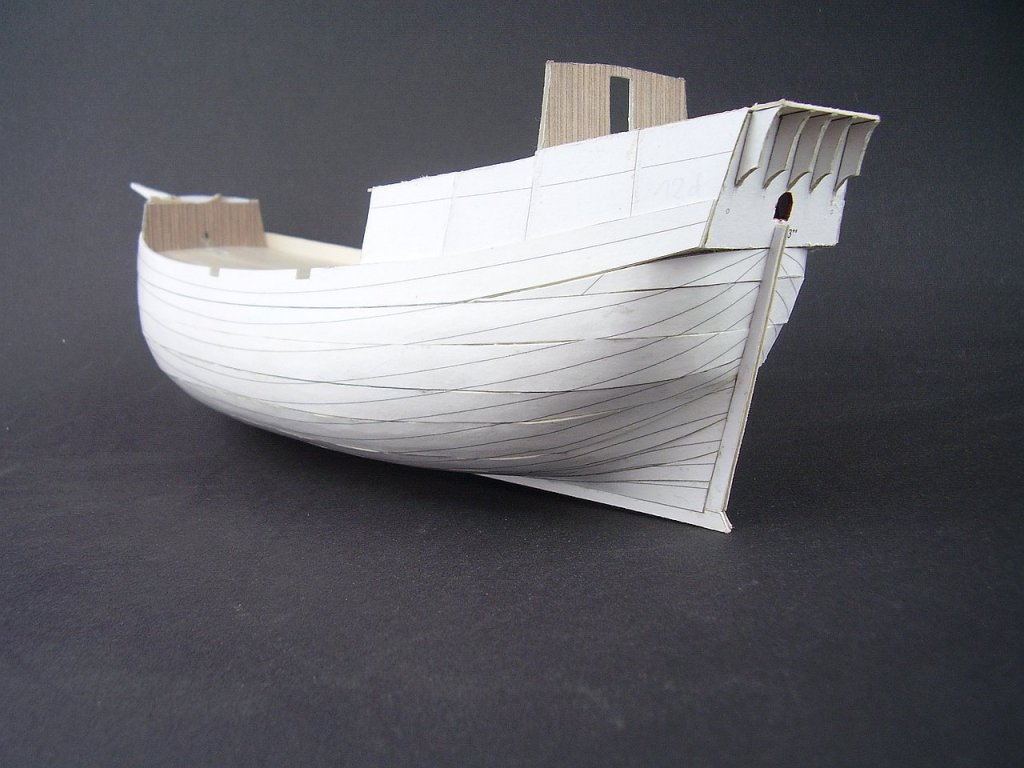
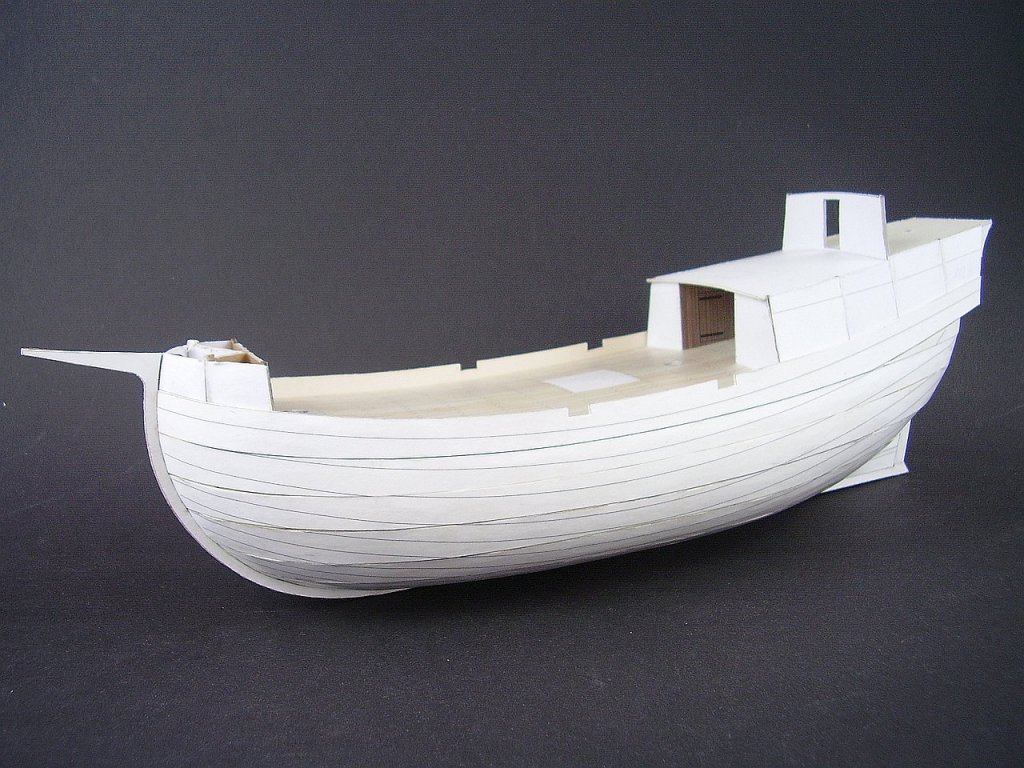
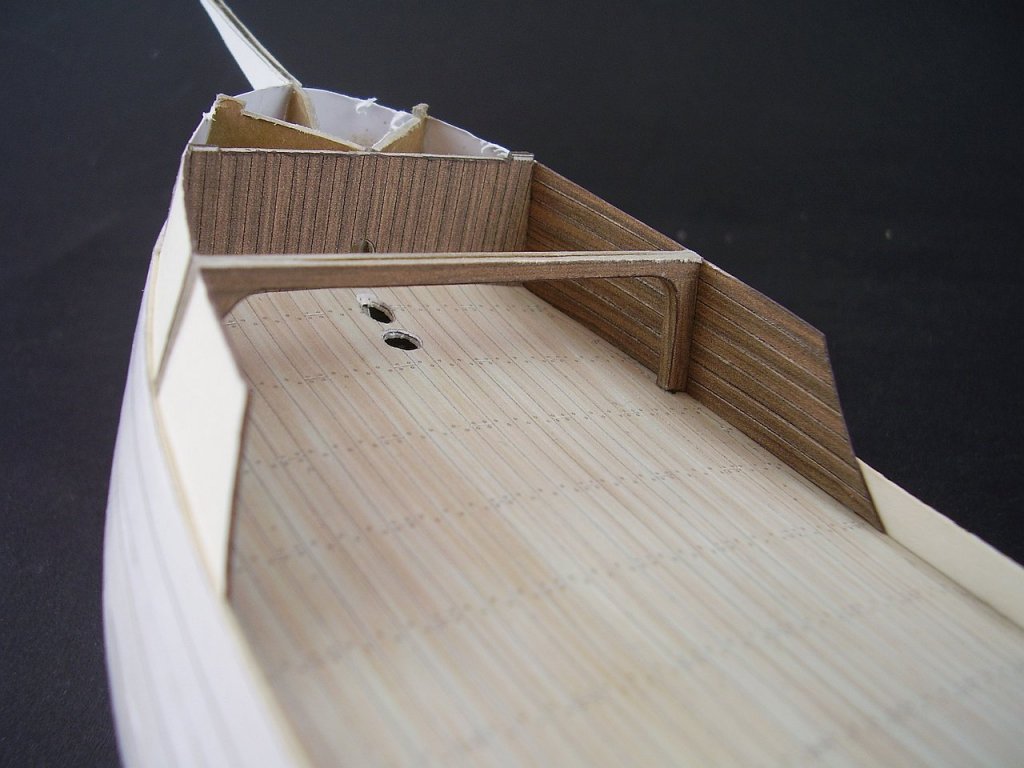
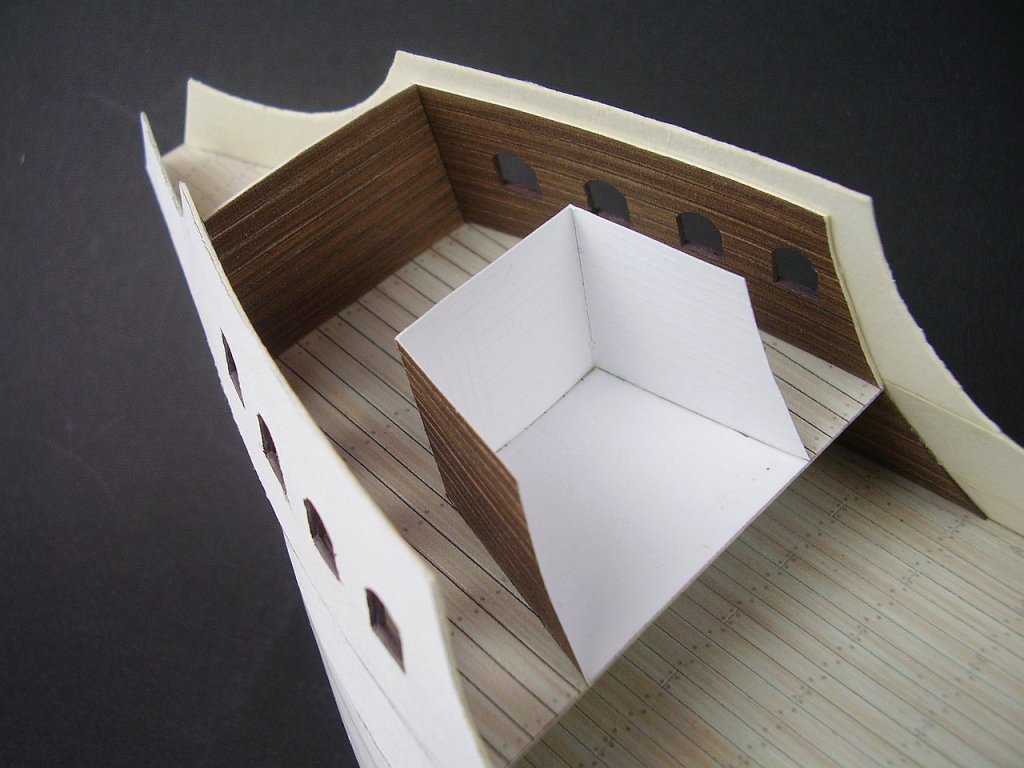
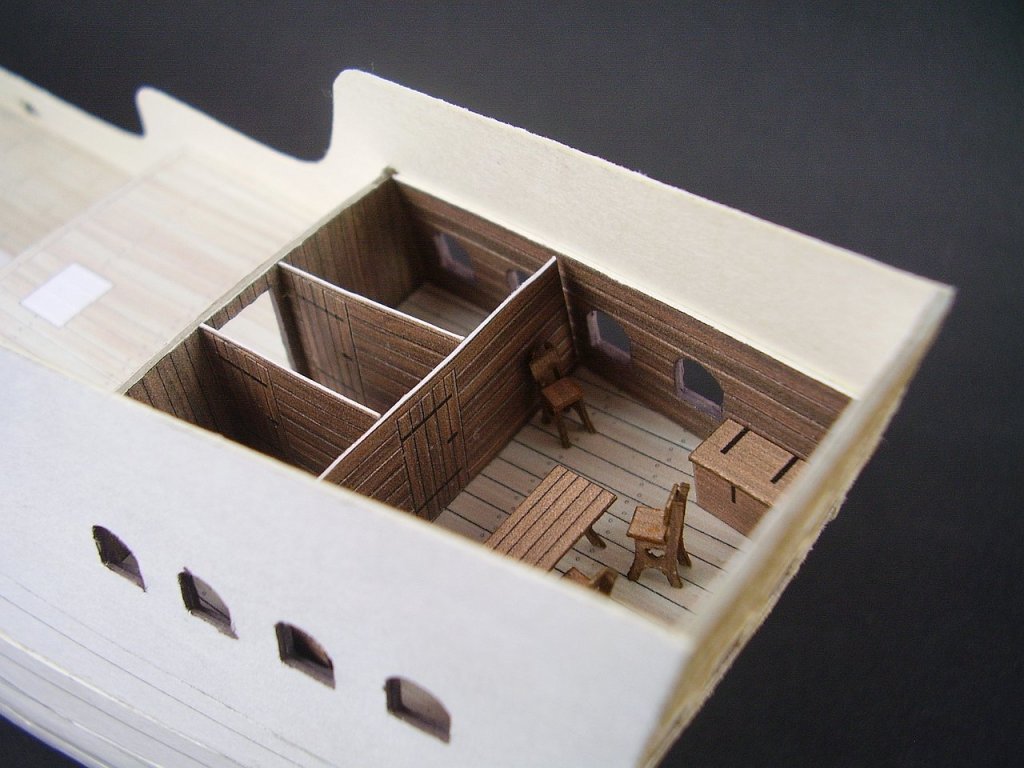
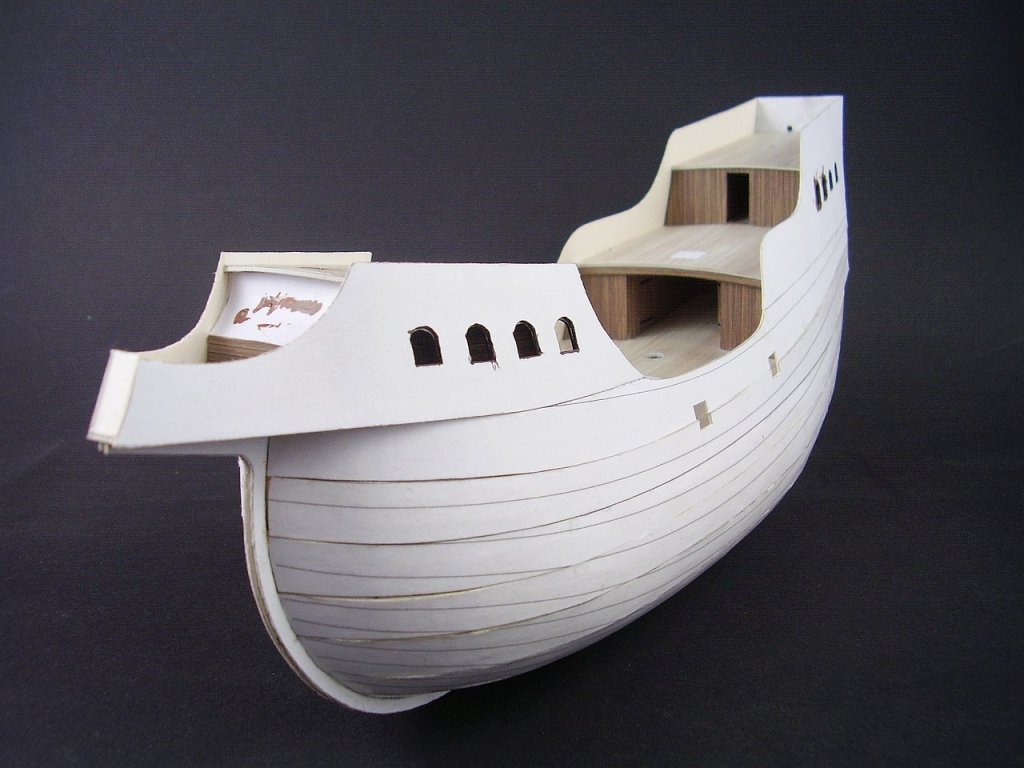
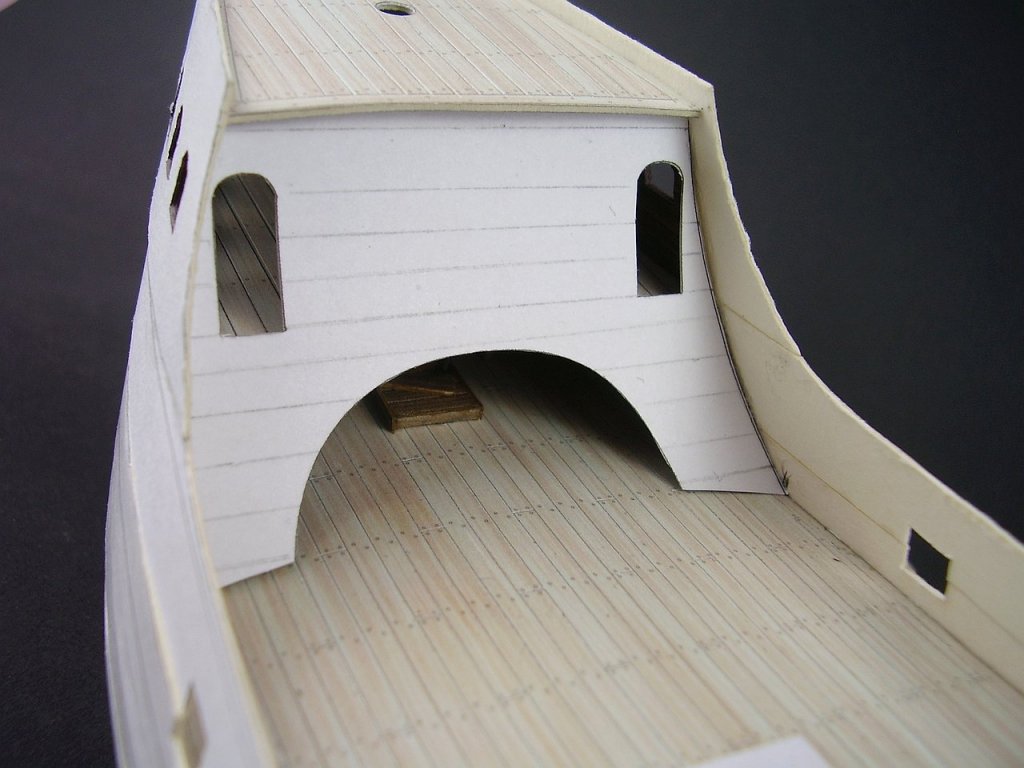
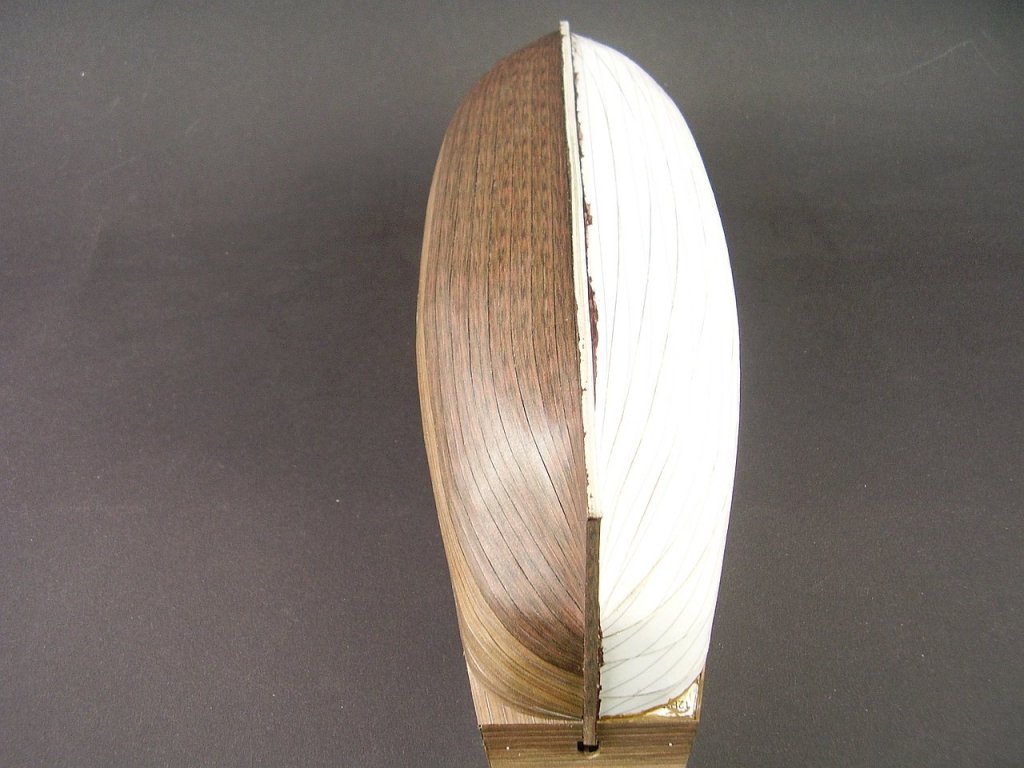
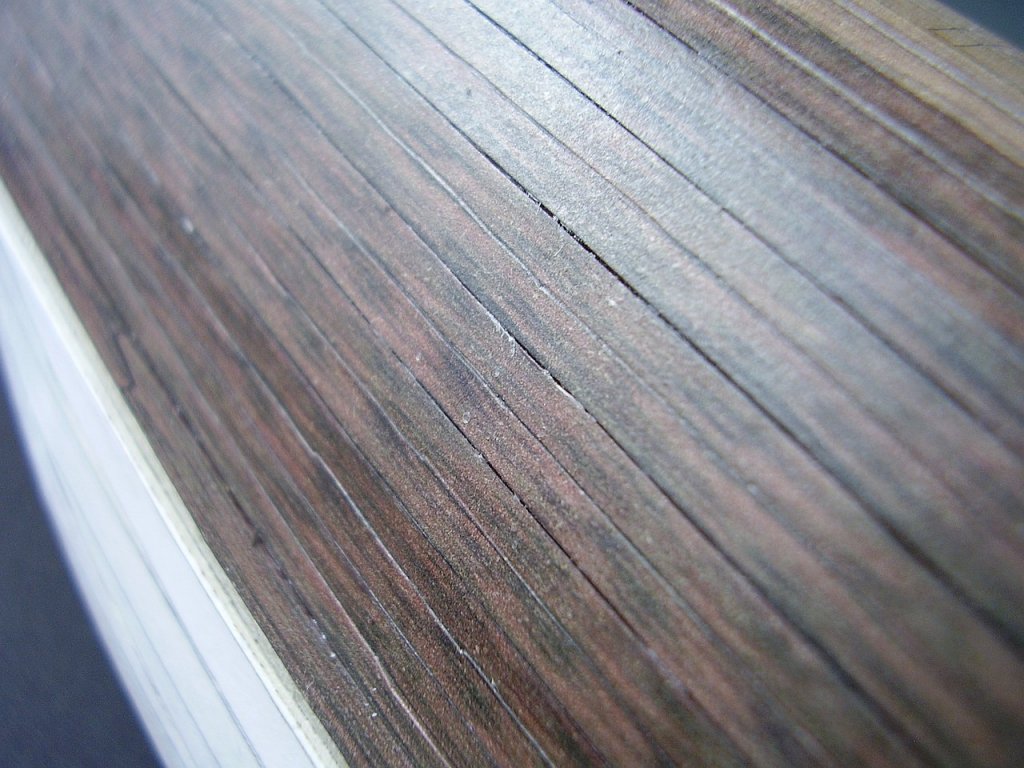
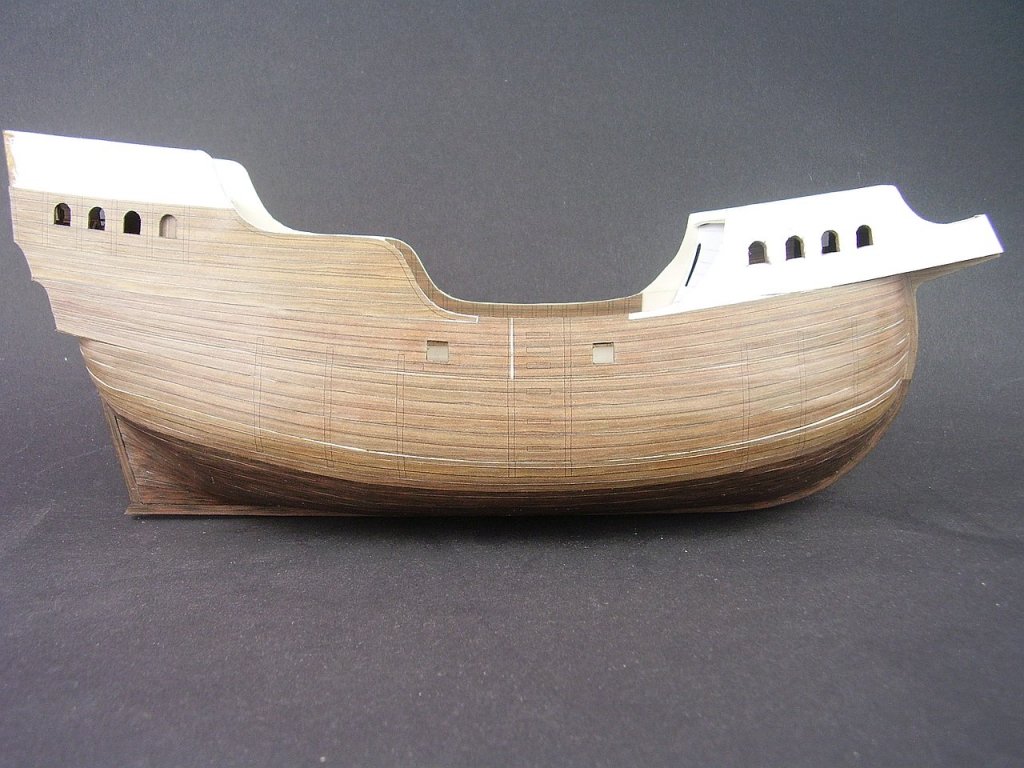
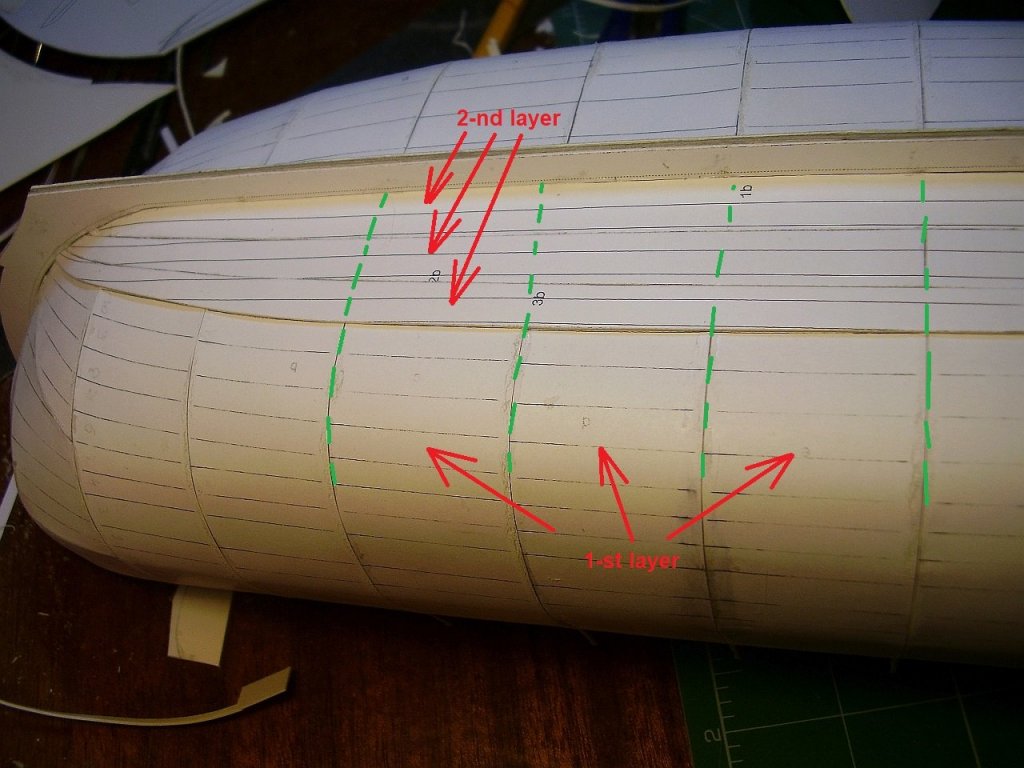
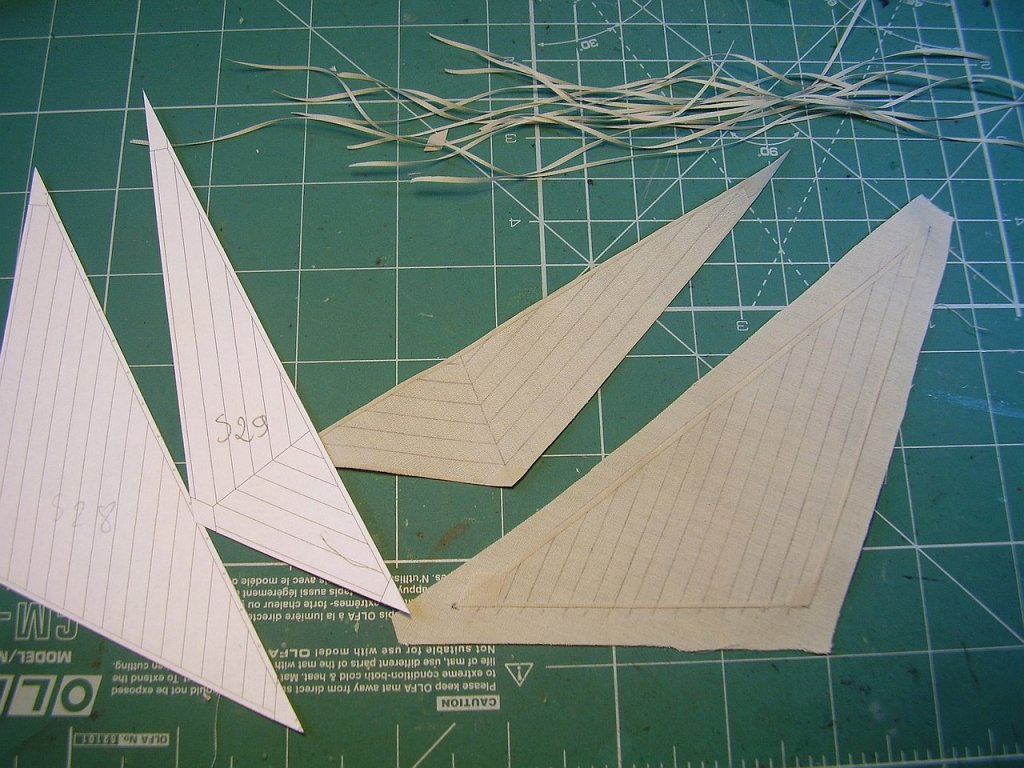
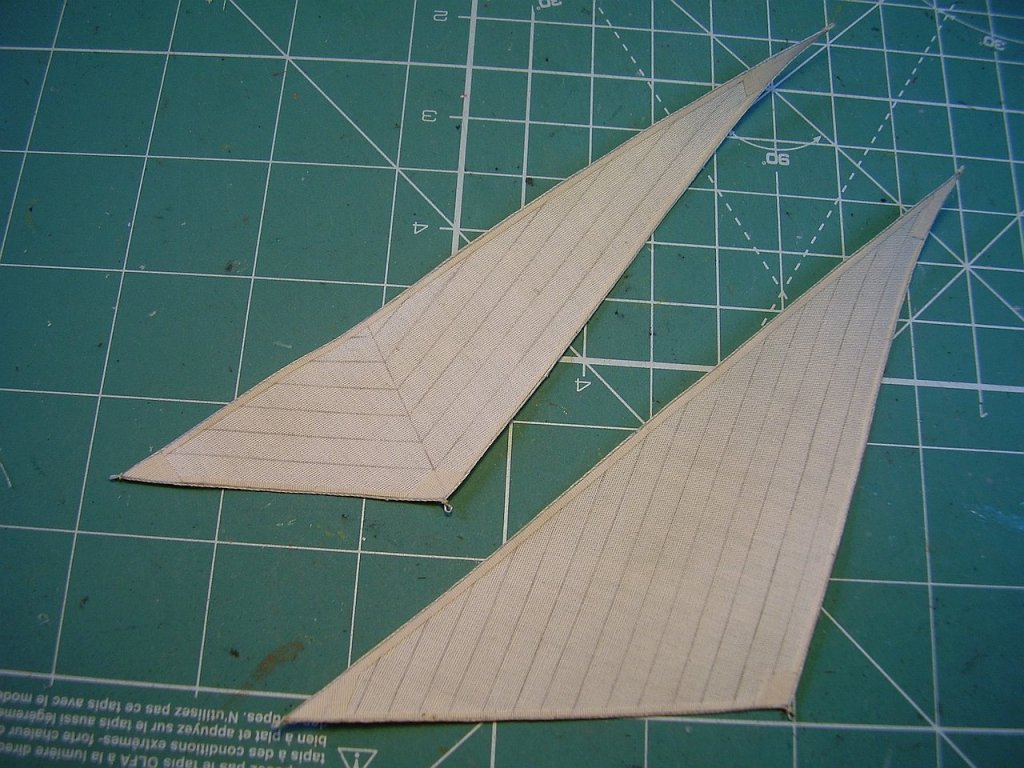
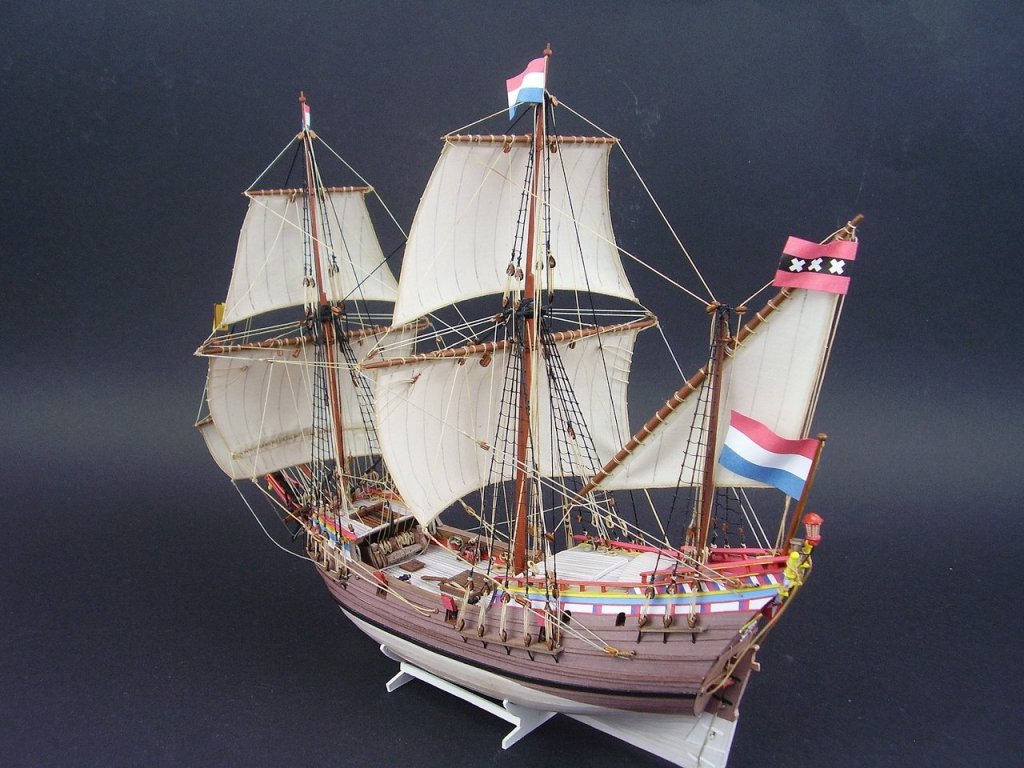
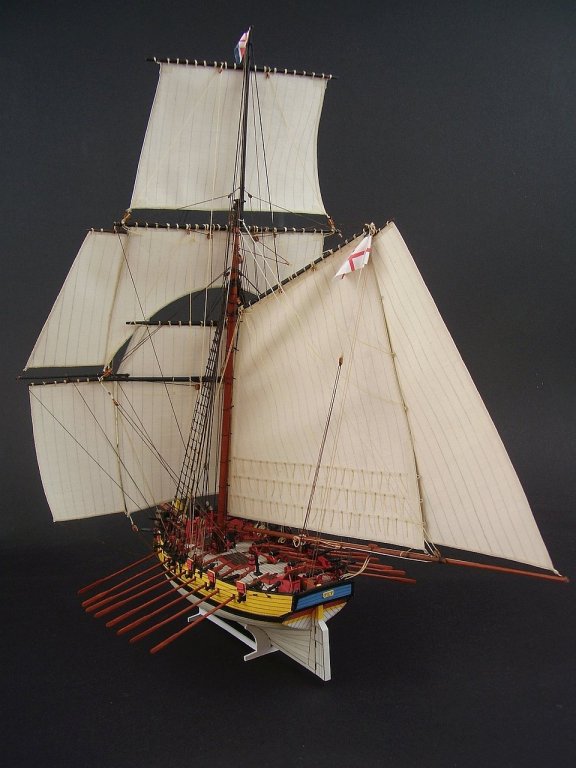
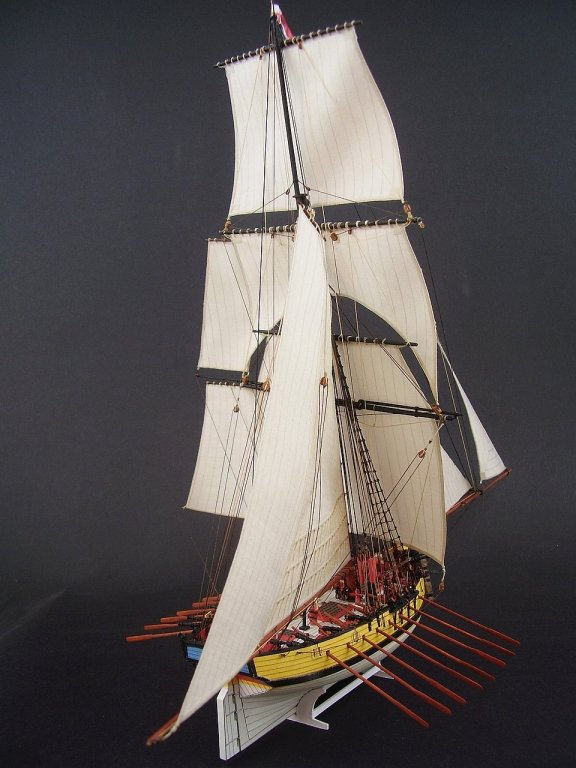
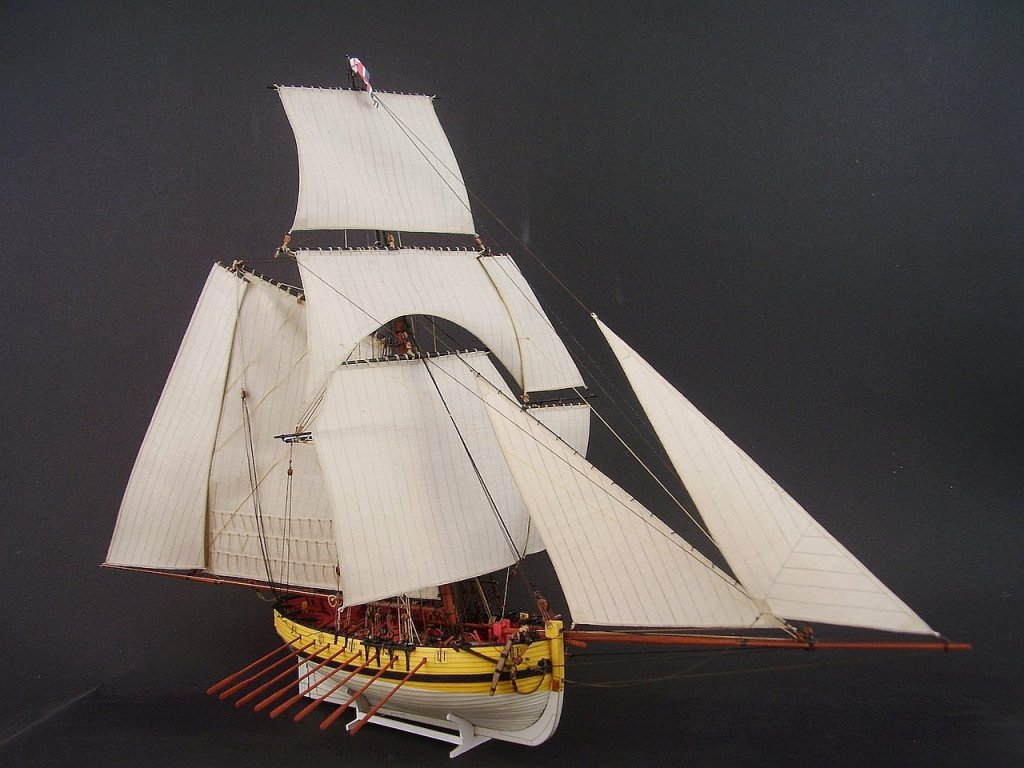
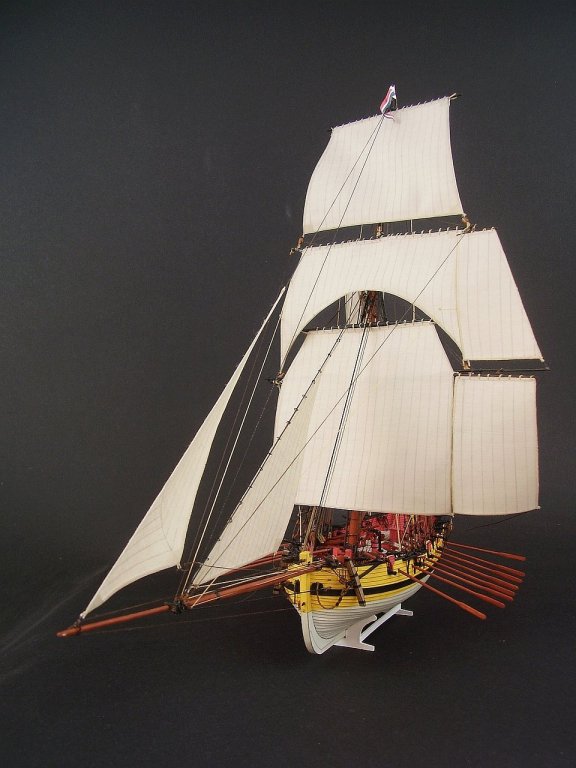
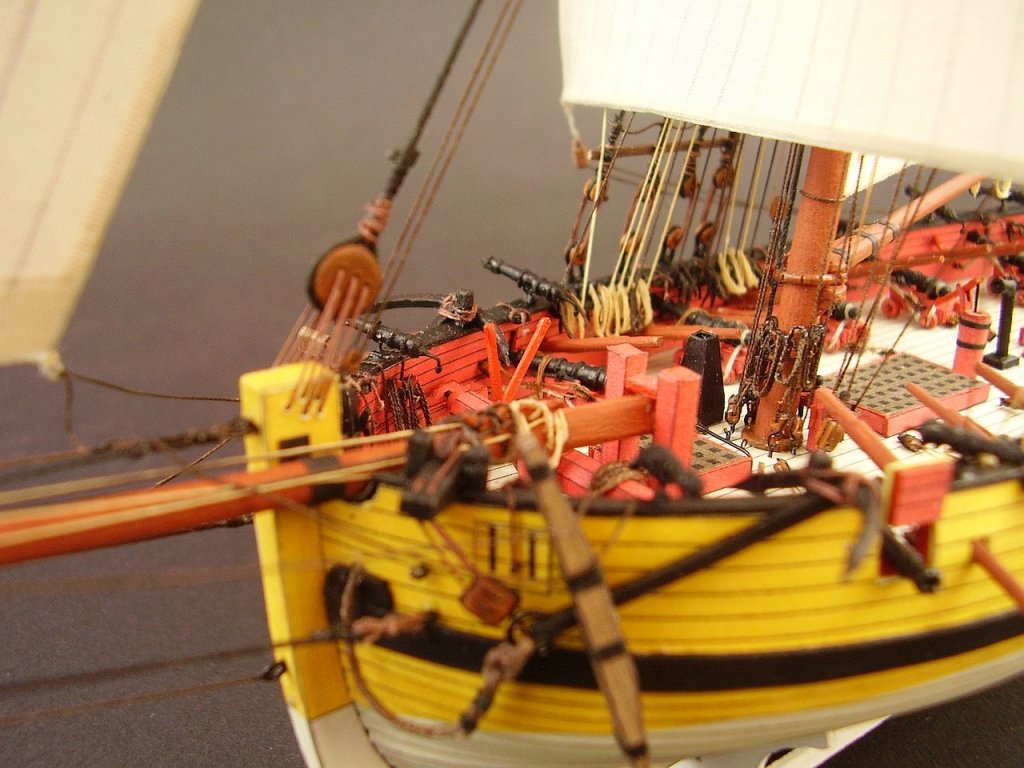
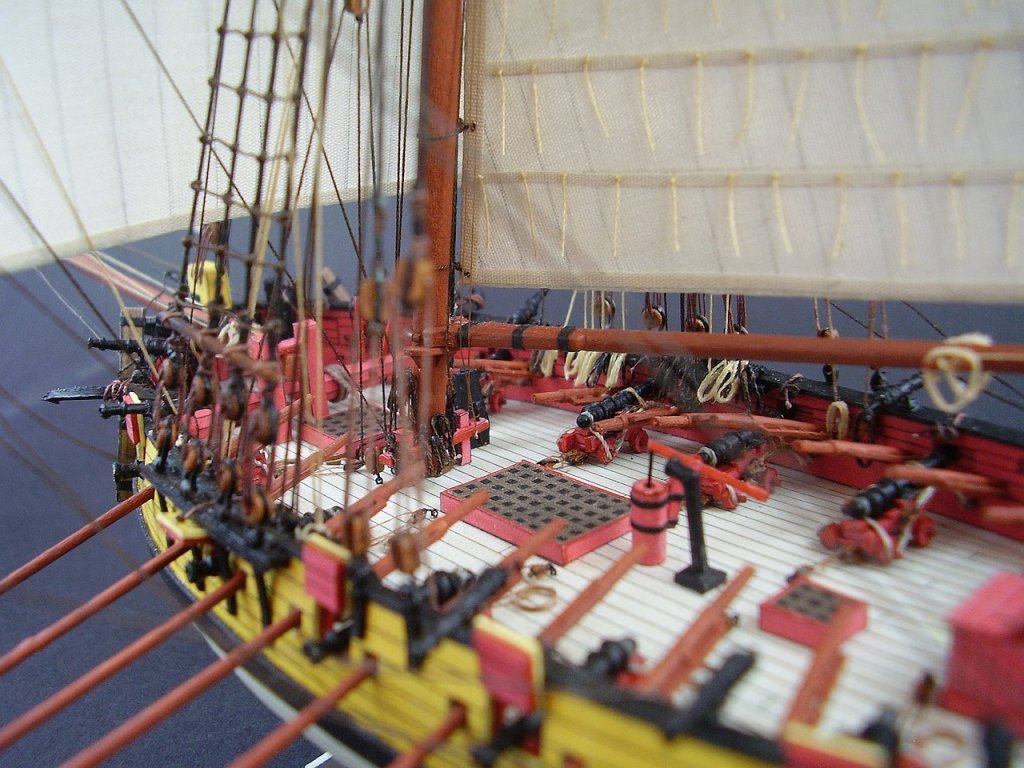
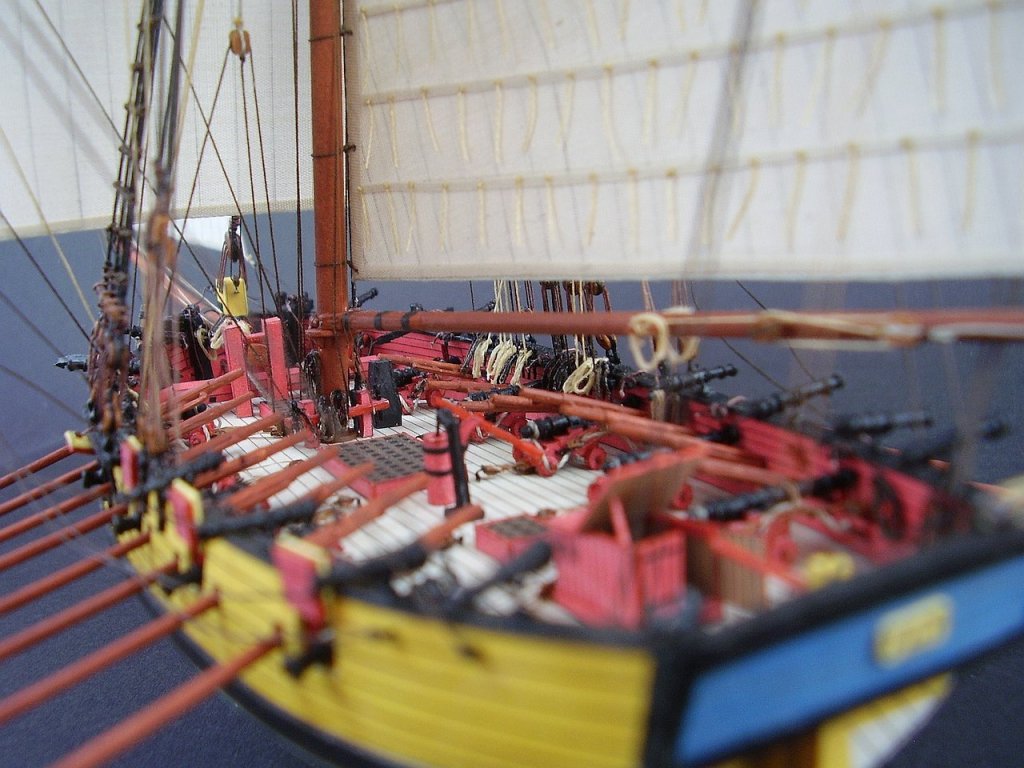
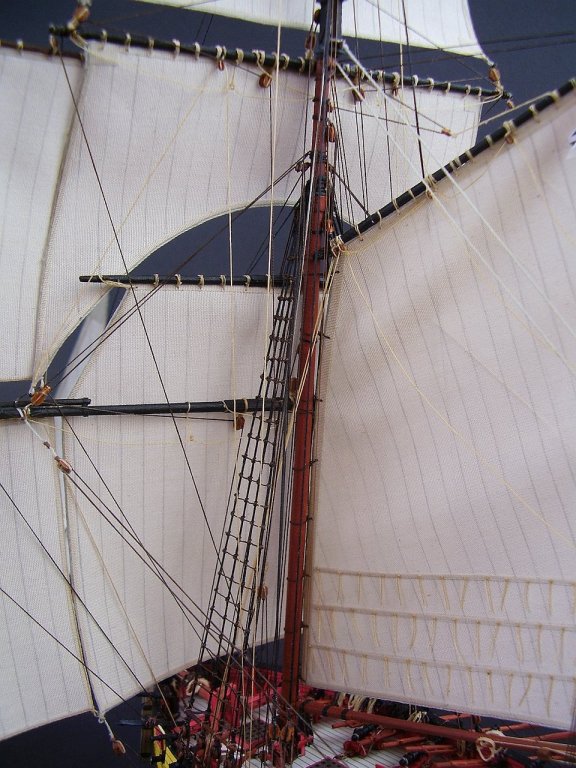

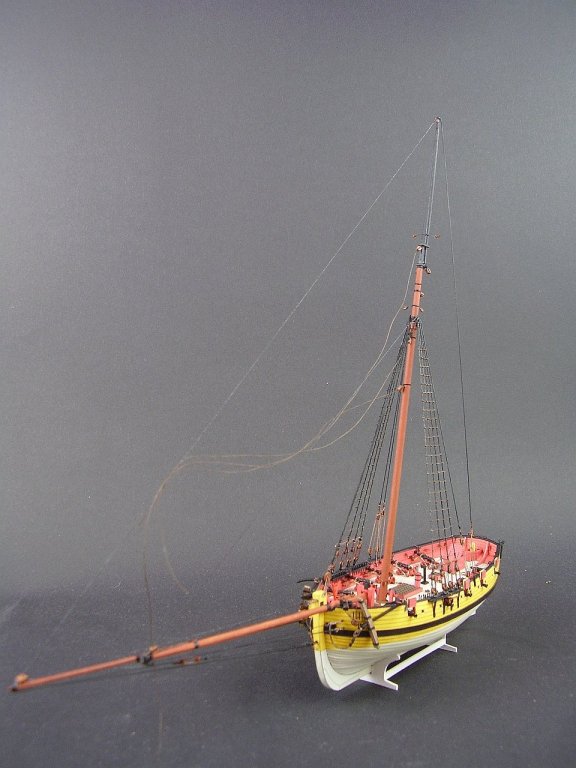
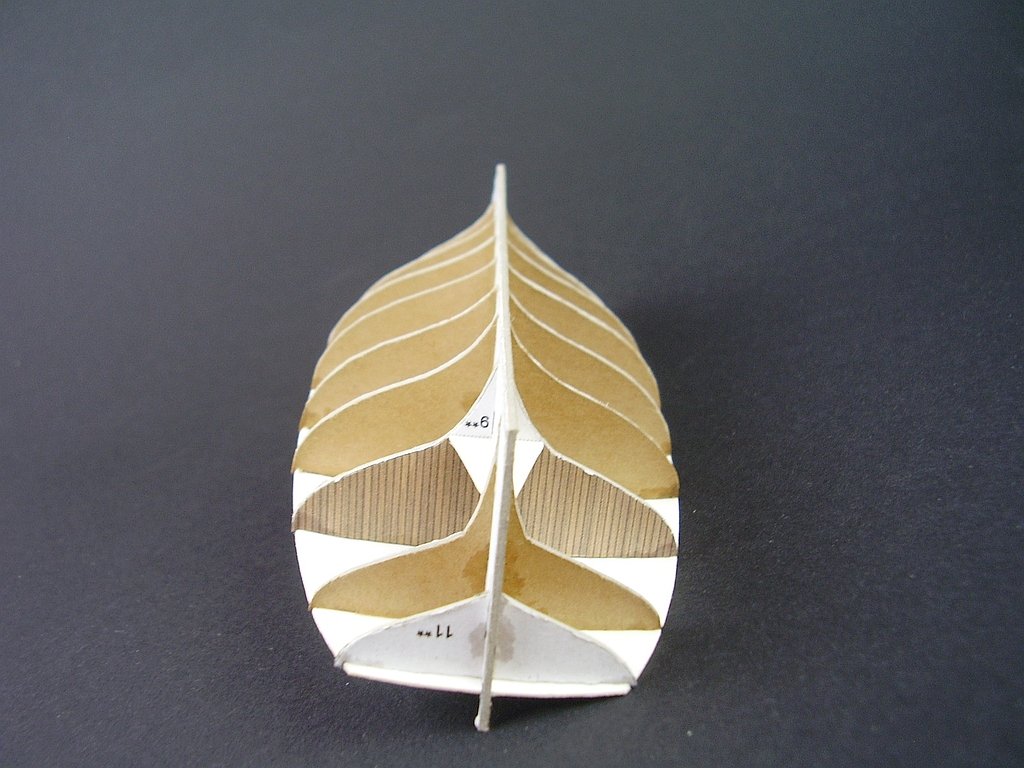
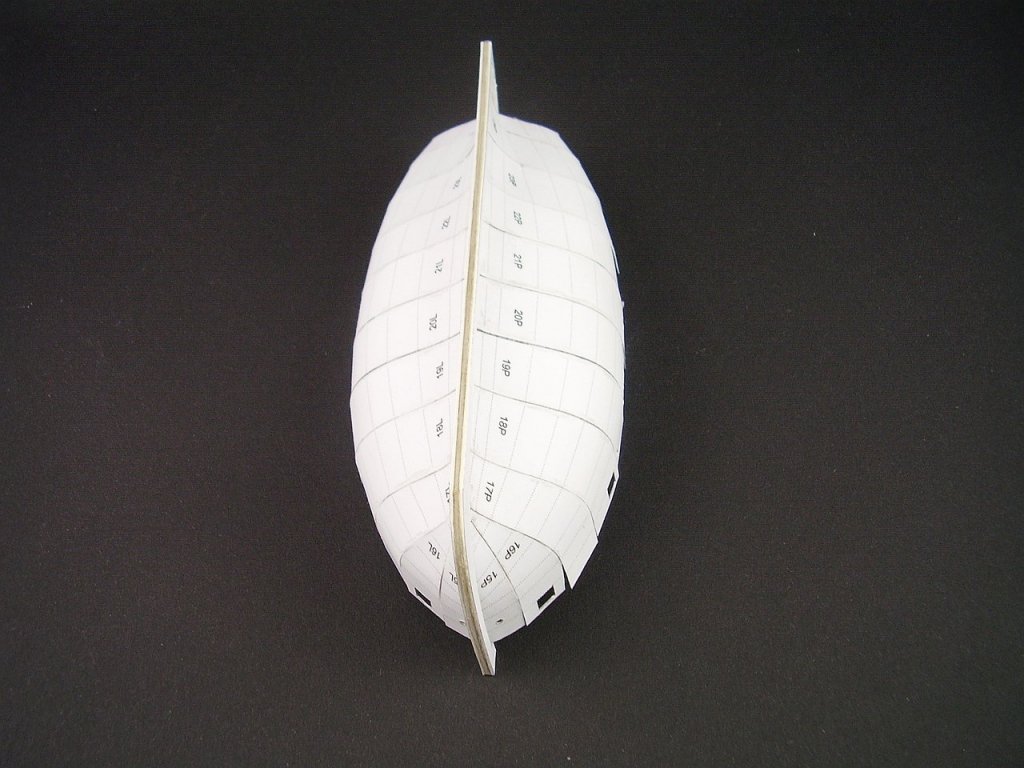

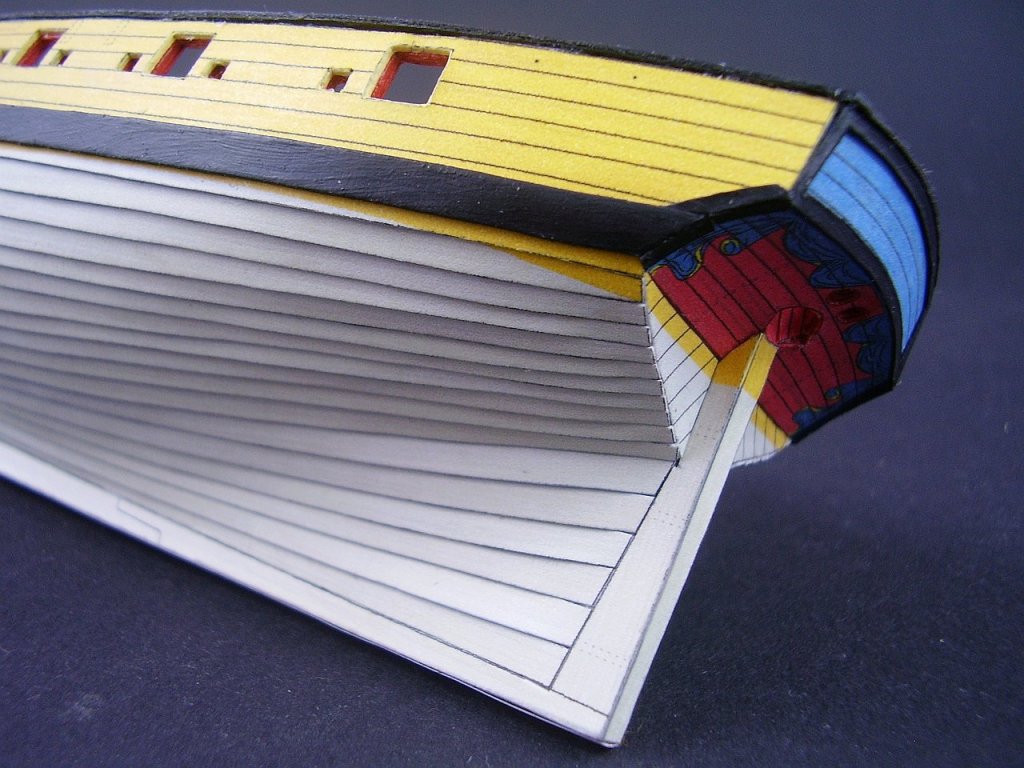
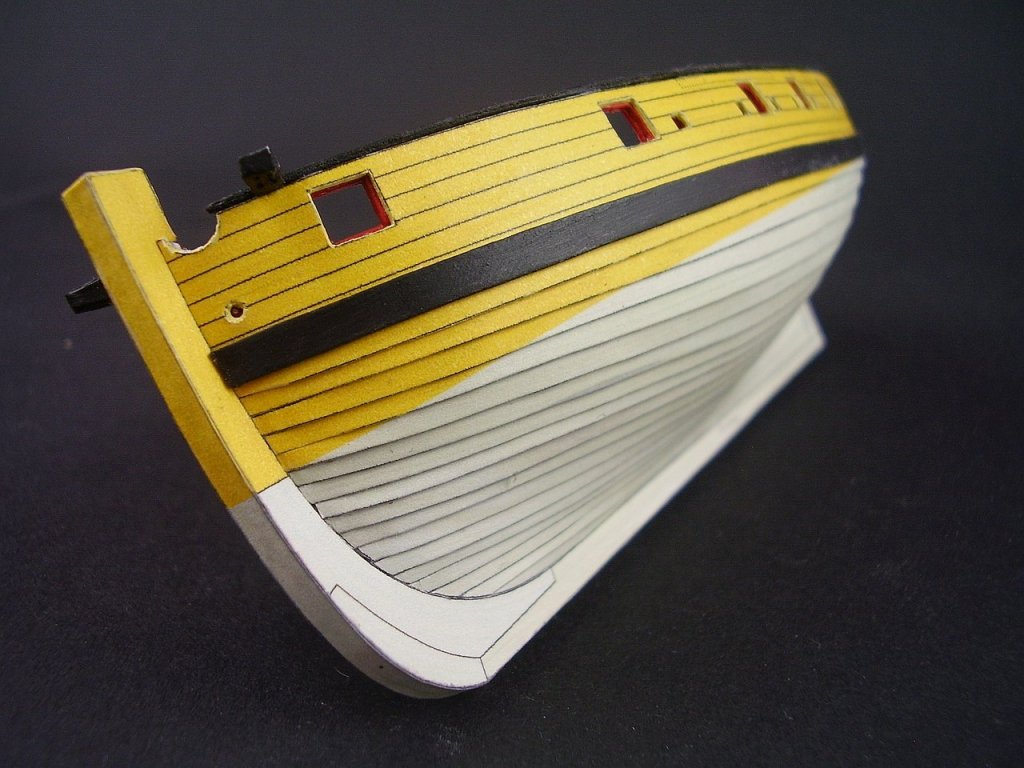
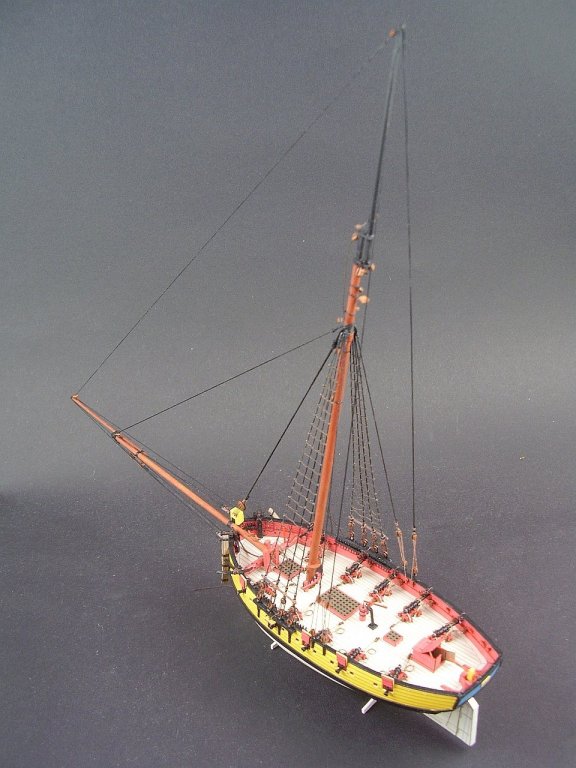
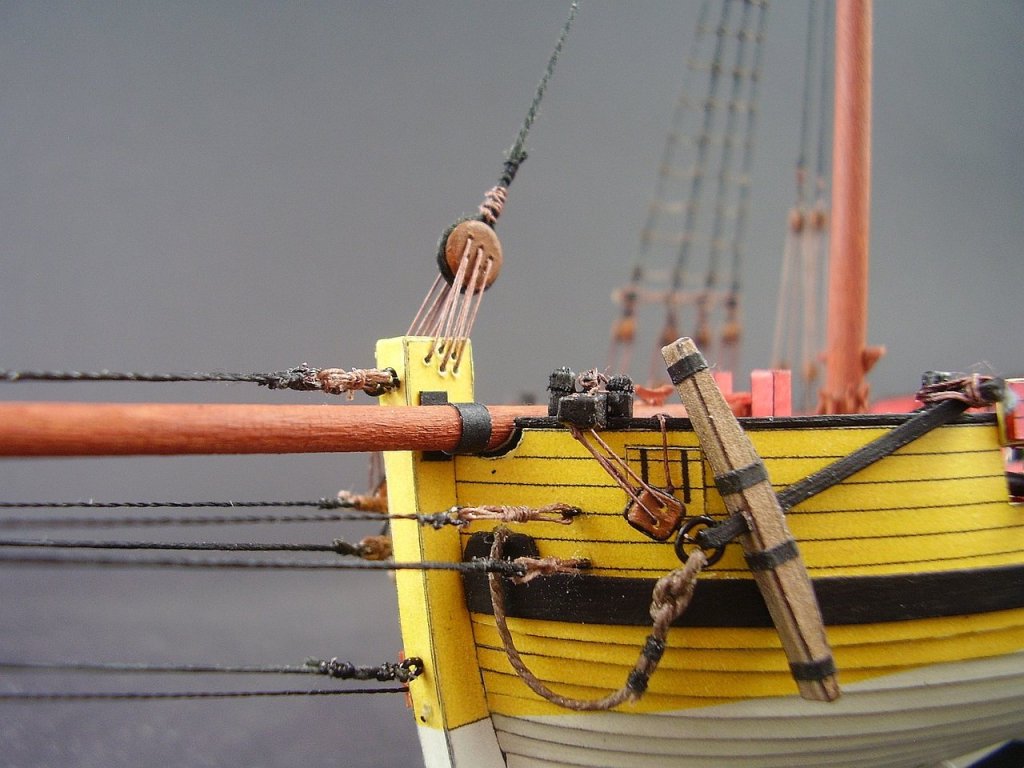
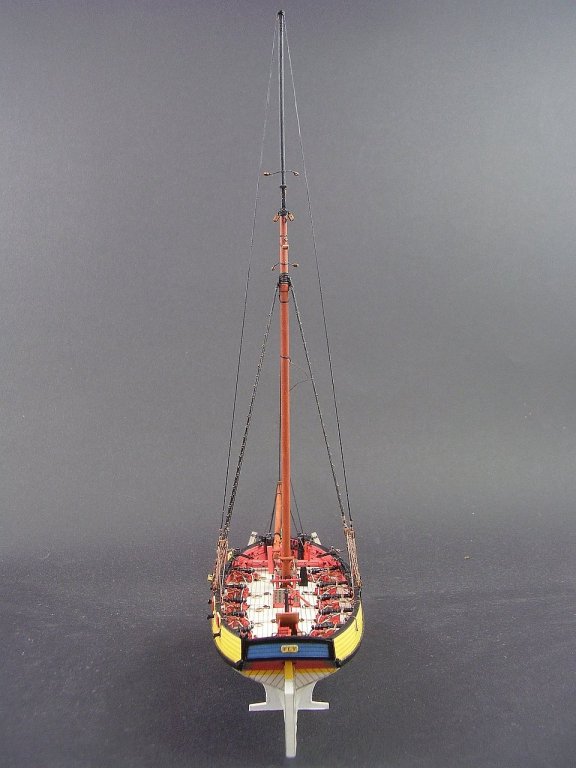
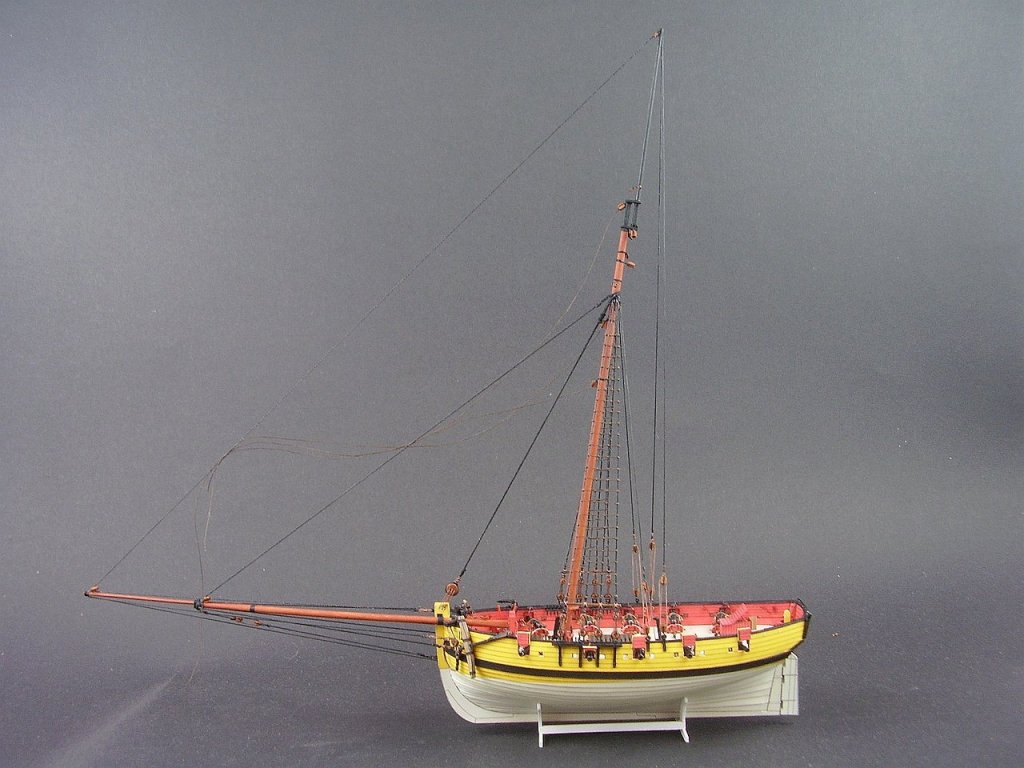
"De Zeven Provincien" 1665 by 0Seahorse - FINISHED - 1:100 - CARD
in - Build logs for subjects built 1501 - 1750
Posted
Hi,
I finished up the planking and "closed" it with the rails (of course it's just the lower part of the handrail), which I ambitiously made in a printed standard without painting them. There is some "pecking" and dugout, but it was worth it.
The upper planking made with an overlap planks was supposed to be easy, but it took a lot of time (try-on - retouch - slow sticking). The "boards" are 0.4 mm thick, as it seemed reasonable (so that it was not a thin cardboard and and that the edges are visible), but if you add inaccuracies, the thickness of the glue and other small mistakes, it was probably better to make it from cardboard 0,3 mm. Anyway, it is already stuck and I will not tear it off. I missed retouching in a few places, but it can be fixed.
I also started making bulkheads, which will be covered with boards such as the sides. I added doors and posts, between which it will be necessary to fit this "paneling". Then sculptures will appear on the posts.
And here is the biggest challenge. All bas-reliefs can be made on thicker cardboard and can be plasticize it with thick glue, modeling clay or milliput. But I still have no idea how to design full 3D figures in the "cardboard standard": two lions at the top of the stern between which there is a "holy maiden" and something like Neptune / Poseidon above the galleries. Various attempts may take a long time, so for now I am trying to decorate taffrail and here I would like to thank my friend Tomasz Król (he is also a designer of cardboard models and a painter, many kit covers are of his works), who, using his magic powers, drew a plasticized version.
And below the port side which looks a bit better :
Greetings
Tomek